How to Map Your Ecommerce Customer Journey [Template Included]
Published: October 20, 2023
We’ve discussed how the customer journey impacts sales, service, and marketers.
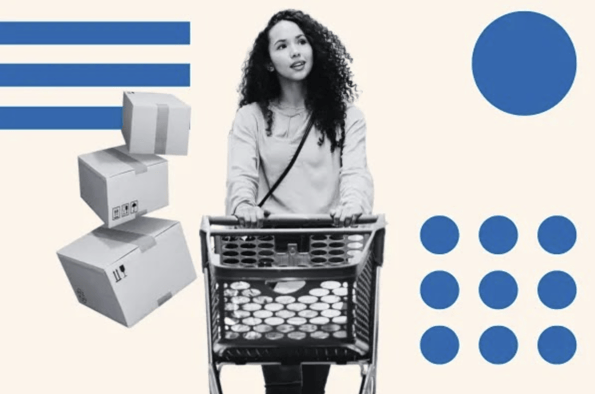
But one segment that feels different is the ecommerce customer journey. The customer journey is different from service-based companies because it can be much quicker (buying from Amazon or an Instagram ad).
However, if you work at an ecommerce company, it’s important to understand the customer journey: all the touch points and stages. Below, let’s learn how to map your ecommerce company's customer journey.
Plus, you can download some templates to help you get started.


Ecommerce Customer Journey
The ecommerce customer journey is just like any customer journey. It describes the entire experience that a customer goes through to purchase a product from a company online — from the moment they're aware of your product to when they complete the purchase and reach out to customer support.
Touchpoints can include when someone sees a social media ad, when a friend tags them in a post online, when they come across your website when they read your blog posts, when your product shows up on Google, when they search on Amazon, etc.
The ecommerce customer journey includes the path from when they first contact you to when they purchase your product to if they reach out for a return.
Writing down these touchpoints might make you realize that the journey on your website isn't ideal. If that happens, you can look for solutions to help you, like WooCommerce (a WordPress plugin).
Stages of Ecommerce Customer Journey
- Consideration
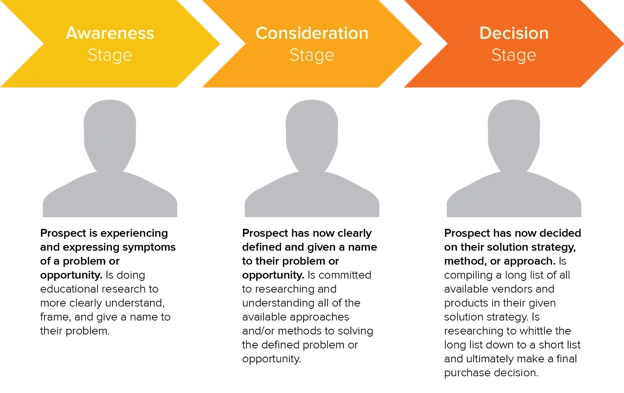
1. Awareness
The first stage of the ecommerce customer journey is awareness. During this stage, a potential customer is experiencing a problem and is researching to understand their problem.
They see if it has solutions, overcome misconceptions, and prioritize solutions.
2. Consideration
In the consideration stage, potential customers research products and methods to solve their problems in the consideration stage.
For example, let's say that I want to start a morning routine. I do some research on Google and see a few ads on social media, then realize I want a morning routine journal.
Now that I know what I want to buy and how to fix my problem, it’s time to research solutions. I’ll go to Google and Amazon to see what morning routine journals are available and which have the best reviews.
3. Decision
During this stage, potential customers are now narrowing their list to the top products they want.
This is when they’re learning what makes your product stand out from the competition and why your product is the one they need.
During this stage, it’s essential to understand the various touch points to communicate what makes your product unique.
4. Retention
For ecommerce, I'll add one more stage to the customer journey. That stage is retention.
After a customer buys your product, their experience and decision to purchase from you again rely solely on the quality of your product and customer service.
Let’s say the package was missing, delivered to the wrong address, or they want to return the product. They won't buy from you again if that experience fails. They’ll probably consider leaving a positive review if it does go well.
In this stage, consider retargeting marketing and social media ads so more of your products show up for them online. Once you’ve delighted your customers, they see you show up online and want to engage with you.
They’ll buy from you again and again.
To learn more about ecommerce marketing, you can check out HubSpot Academy’s free Ecommerce Marketing Course .
How to Improve Your Ecommerce Customer Journey
Now that you understand what the ecommerce customer journey is, you can take steps to improve your own.
To achieve this, your overarching mission must be to make each customer journey as enjoyable and personal as possible. Here are some general guidelines and practical steps you can take.
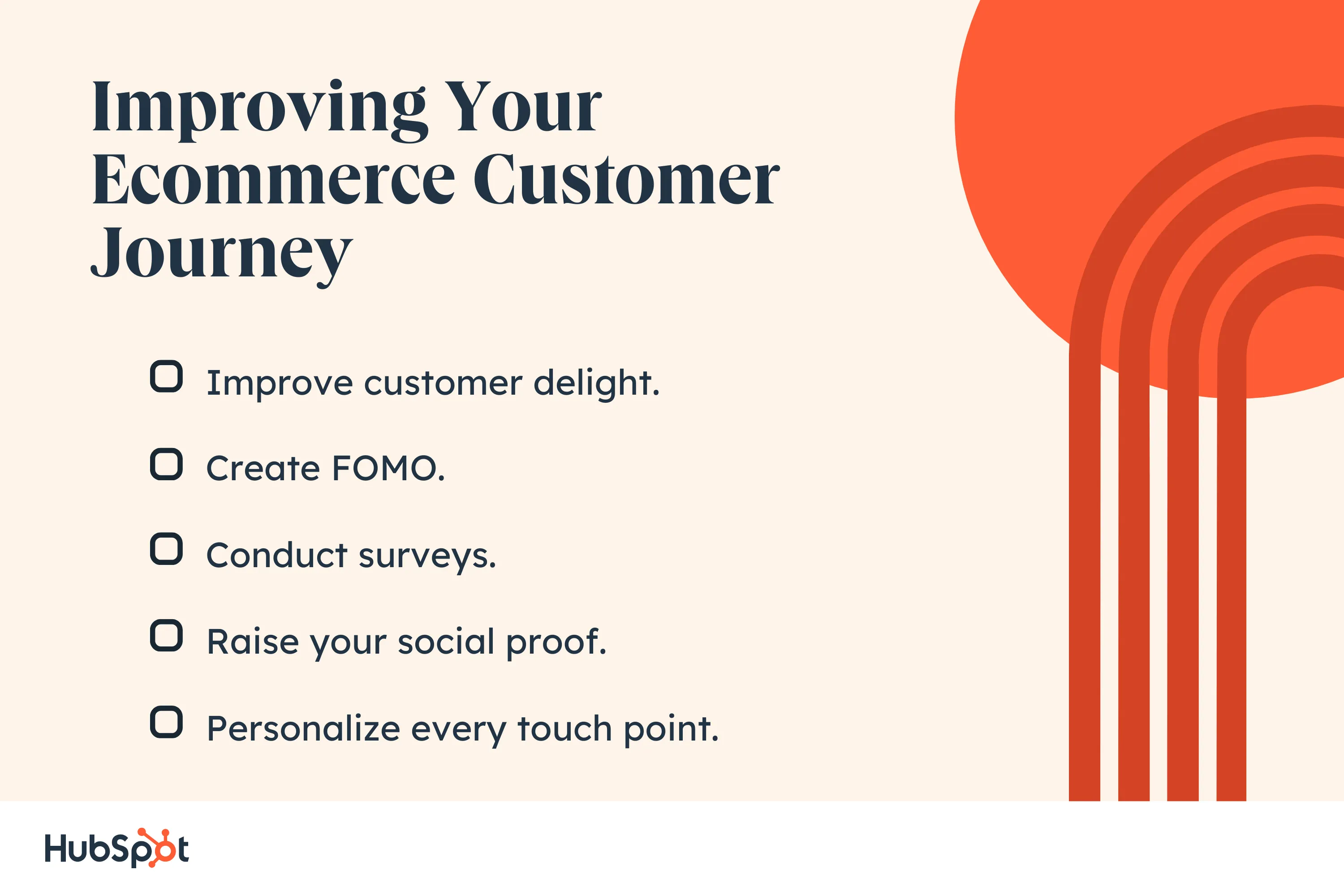
What might you fill out in each of these sections? Let’s take a look.
What is the customer thinking or feeling?
Consider what customers think or feel in each section of the buyer’s journey. By getting into their head, you can better address their concerns and meet their expectations to get them to the next stage of the buyer’s journey.
- Awareness Stage: The customer is only becoming aware they have a problem. They may feel uncertain or uneasy, frustrated, or simply curious. They may have questions about things they are experiencing resulting from an underlying issue they have not yet identified.
- Consideration Stage: The customer is looking for potential solutions to their problem. They ask questions like their budget and what type of solution best fits their needs or lifestyle. Having identified the problem, they are considering the shape of a potential solution.
- Decision Stage: The customer evaluates specific solution providers and their advantages and drawbacks. Eventually, the customer will decide on a solution, reconsider their needs, or forego a solution if none match their constraints.
What is the customer’s action?
Customers will take different actions at each stage of the buyer’s journey that can either move them to the next step, return to an earlier stage, or see them leave your flywheel .
- Awareness Stage: The customers will look for information that informs them about a phenomenon they experience related to a problem or the problem itself. They may submit their email for a content offer, download a content offer, or click a link from a social post.
- Consideration Stage: The customer will want to explore different solutions but may need to settle on a particular provider. They will want to sign up for a free trial, schedule a live demo, attend a virtual conference, or read a white paper or case study.
- Decision Stage: The customer is considering purchasing your product and wants to learn more about it. They may schedule a meeting with a salesperson to learn more, sign a contract, or take a reduced deal.
What or where is the buyer researching?
Buyers will turn to different sources of information at each stage of the buyer’s journey.
- Awareness Stage: The customer will seek general information and answers to questions about their experiences. They are looking for blogs, white papers, social posts, and short videos addressing some of the problems they’re facing.
- Consideration Stage: The customer is looking for more in-depth material that addresses potential solutions to their problem. They will want to look for more in-depth content, such as long-form blogs, case studies, industry journals, and longer videos, to understand the benefits and drawbacks of potential solutions.
- Decision Stage: The customer will want to learn more about your product. They will want to read or watch testimonials, try out free trials, take samples, read spec sheets, and better understand your product's capabilities, benefits, and limitations.
How will we move the buyer along their journey with us in mind?
Customers require different incentives, calls to action, and cues to move from one stage of the buyer’s journey to the next.
- Awareness Stage: The customer may be enticed to submit their contact information in exchange for a piece of content.
- Consideration Stage: Once you have the customer’s contact information, you may try to set up a meeting with your sales team. This can be accomplished by offering them content tailored to their needs.
- Decision Stage: The customer will be ready to close a deal, sign up for a lesser one, or part ways. Whatever the outcome, you can work to keep the customer in your flywheel to make a future sale with them, enjoy word-of-mouth promotion, or receive referrals.
For more information, you can check out this post on customer journey thinking and watch the video below to learn more:
Making Your Map
Now, you might wonder, “How do I create an ecommerce customer journey map?”
First, you'll create your buyer personas and then envision what your ideal customer goes through when they seek your product.
Once you do that, download our templates and take HubSpot's Ecommerce Marketing Course . Then, you can fill out the template and brainstorm how to improve the journey at every touch point.
Ecommerce customer journey mapping is essential to understanding your target audience and improving the customer experience. Focusing on providing the best customer experience will help retain customers and drive more leads and sales.
Creating the Best Ecommerce Customer Journey Possible
You can do it for your business now that you know the importance of ecommerce customer journey mapping.
With a visual representation of your customer journey, you can better understand the path a customer takes and ways to improve the overall experience. With the correct application of customer journey mapping, you can even increase conversions.
Ready to get started? Check out our free resource below for some templates you can use to map out your customer journey!

Don't forget to share this post!
Related articles.
![customer journey mapping ecommerce 50 Ecommerce Statistics To Know in 2024 [New Data]](https://blog.hubspot.com/hubfs/ecommerce-statistics.png)
50 Ecommerce Statistics To Know in 2024 [New Data]

Top 16 Ecommerce Platforms of 2023: Find the Best One for Your Business

What is a Flash Sale in Ecommerce? 6 of Our Favorite Examples

Fixed Cost: What It Is & How to Calculate It
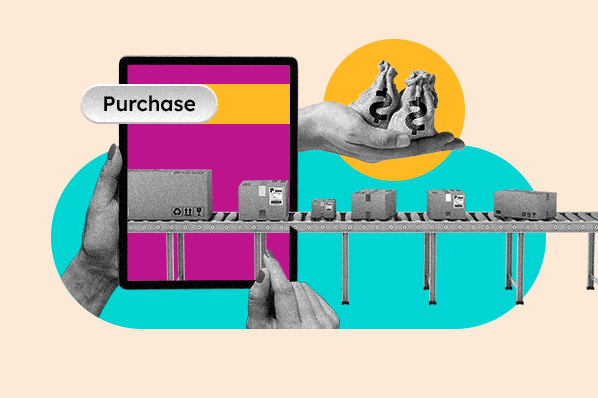
14 Ways to Automate Your Ecommerce Business

How Ecommerce Businesses Build Healthy Relationships With Customers
![customer journey mapping ecommerce The Beginner's Guide to Product Photography [Tutorial + Examples]](https://blog.hubspot.com/hubfs/guide%20to%20product%20photography.jpg)
The Beginner's Guide to Product Photography [Tutorial + Examples]

Variable Cost Explained in 200 Words (& How to Calculate It)

The Ultimate Guide to Ecommerce
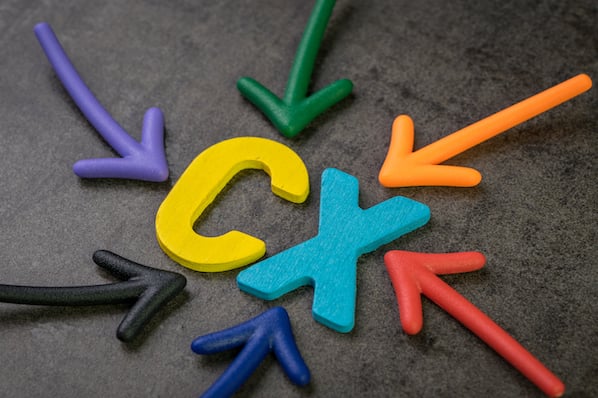
Customer Experience Could Be The Reason Your Online Shoppers Aren’t Converting
Outline your company's customer journey and experience with these 7 free customer journey map templates.
Marketing software that helps you drive revenue, save time and resources, and measure and optimize your investments — all on one easy-to-use platform
Learn / Guides / Ecommerce guide
Back to guides
How to create an ecommerce customer journey map (with examples)
In the highly competitive world of ecommerce, selling great products is not always enough. Customers expect fantastic experiences during every interaction with you—and if you don’t deliver them, your competitors will.
Last updated
Reading time.
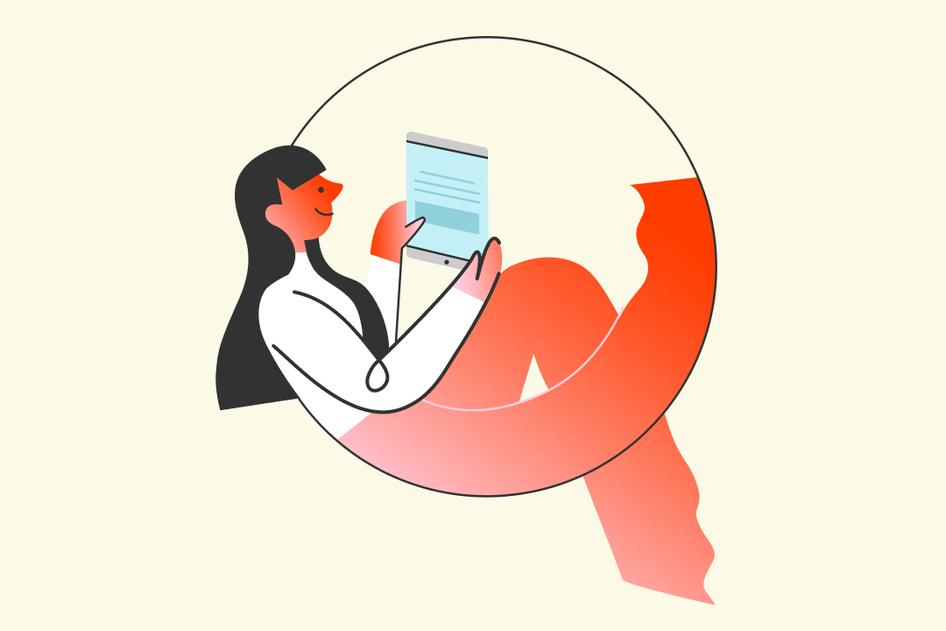
So: how do you find the best opportunities to optimize your funnel, improve conversions, and grow your ecommerce business? With a little help from your new friend, the customer journey map .
Find new ways to grow ecommerce sales
Hotjar shows you what key user segments are doing on your site, so you can fix the problems hurting your conversions.
What are ecommerce customer journey maps?
Customer journey maps visualize the steps your customers take when moving through your conversion funnel .
A basic map, like the one below, simply shows the key touchpoints customers go through on their journey.
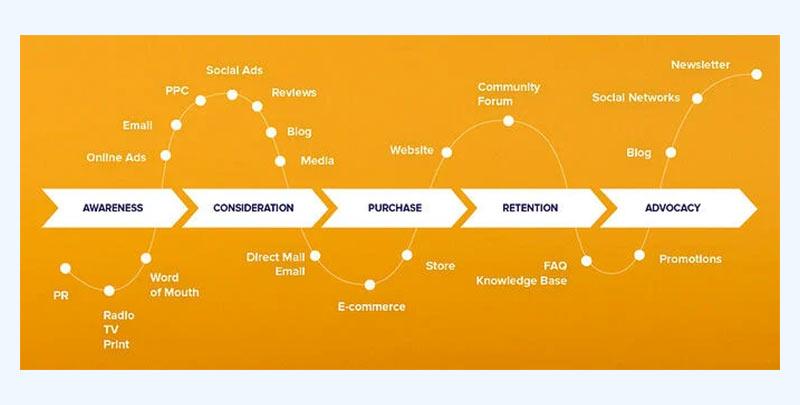
An example of a simple customer journey map from CartsGuru
More sophisticated maps integrate detailed insights about the customer, such as their actions, thoughts, and needs, at different touchpoints. This allows you to take a walk in your customer’s shoes and find ways to improve your ecommerce user experience (UX) .
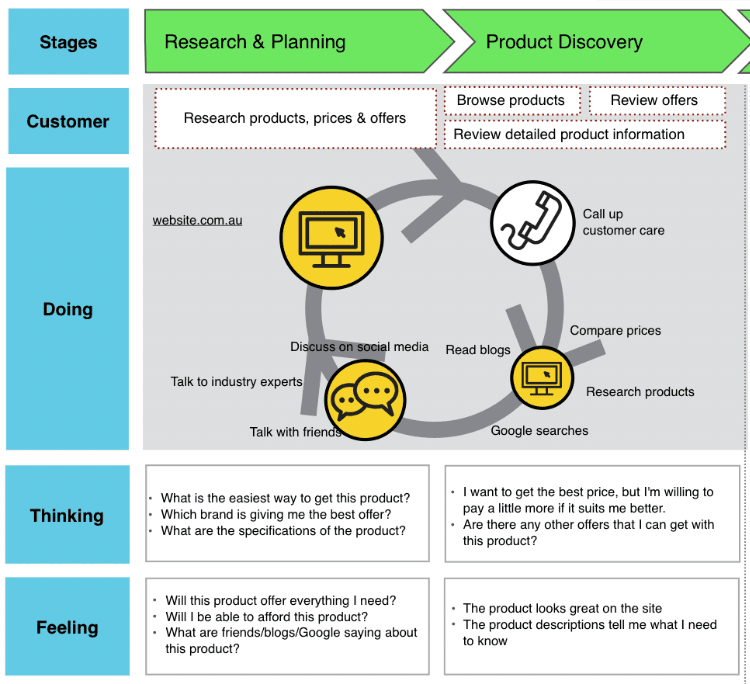
A map from MarketingMag.com.au revealing customer thoughts and feelings at each touchpoint
Some customer journey maps also integrate quantitative data into each step. By tracking key metrics—like your Net Promoter Score® (NPS®), customer satisfaction (CSAT) score, or customer effort score—you’ll get a data-informed view of the weak points in your journey.
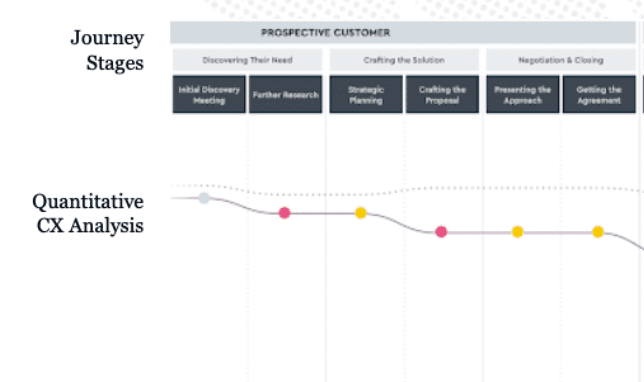
A customer journey map from Tallwave incorporating quantitative data
4 (very good) reasons to create customer journey maps
Sure, your company as a whole has a basic understanding of what customers do . But does every department have a consistent, detailed view of what they’re experiencing ?
Customer journey maps provide exactly that, bringing several key benefits with them:
1. Understand your customers’ motivations, drivers, and point points
In ecommerce, buying journeys are rarely simple. They usually entail a range of emotions, questions, and pains—ranging from “how quickly can I get this awesome dress?” to “am I really getting the best deal?” and “why is this so complicated?”
Customer journey maps give you an at-a-glance view of these vital insights, helping your entire company empathize with your audience.
2. Get your teams working together
Improving the customer’s journey, even at a single touchpoint, often requires multiple teams.
For example, imagine your new customers are confused about how to use your latest product. In this case, your customer service team could report their feedback to your content team. Your content team can then create educational product videos to provide helpful (and necessary) guidance.
Cross-team coordination like this is faster and easier when your company has a shared view of the customer’s experience.
3. Remove internal silos and clarify who owns what
Imagine a scenario where a customer buys a product and feels it doesn’t meet their expectations. When they contact your company, should customer support help them, or a technical product expert?
For growing companies, the lines of responsibility often get blurred. Customer journey maps help you determine which team is responsible for key actions and support at each step of the way.
4. Make improvements and convert more visitors into customers
With a clear overview of the customer’s journey, your team can quickly home in on the touchpoints where something’s going wrong.
For example, you might realize many customers are landing on your product page, but few are completing purchases.
By mapping out the next steps they take and gathering data about their experiences, you discover that customers are dropping off at the shopping cart
A closer look at your behavior analytics data clearly shows visitors find the shopping cart UX confusing
With this knowledge, you can take action to simplify your customers’ shopping cart experience and track whether it helps you increase conversions .
What are the stages of the customer journey?
It’s important to remember that every customer’s journey starts before they land on your ecommerce site, and long after they make a purchase.
Most marketers consider the following stages when mapping out a customer journey:
❗️awareness.
Your customer’s journey starts when they become aware of a desire or challenge that your product addresses. This is where you can start appealing to them with content and marketing campaigns.
In the later stages of awareness, your customer educates themselves about the different products you have available.
💭 Consideration
In this stage, the customer considers whether your product is right for them. They may be trying to choose between several similar products or comparing your product with a competitor’s.
💡 Decision
Your customer has decided your product is right for them , but is weighing up final hurdles like price, delivery time, and payment options. To complete the purchase, they’ll also have to navigate your checkout process.
💰 Retention
After the sale, your customer’s evolving perception of your company will depend on delivery, support, and the product itself. If your customer has a positive experience, they may continue spending with you.
❤️ Advocacy
A remarkable experience may result in a customer becoming an advocate at the end of their journey. This could mean telling others about your company, discussing your products on social media, or positively reviewing your business on public platforms.
How to create a customer journey map for your ecommerce company
Every customer journey map is different—the data you include will be unique to your company. But if you’re an ecommerce business of any size, there are five steps you’ll need to take:
Define your goal
Are you trying to get more sales from visitors on mobile? Or more customers advocating for you? Or perhaps reduce the bounce rate on your checkout page?
By agreeing on a goal with your team, you can build your customer journey map with the right insights, metrics, and analyses in mind.
Gather relevant, accurate data
For your customer journey maps to be of maximum efficacy, you’ll want to gather a range of qualitative and quantitative data . The more data you have, the better—but the data you include in your map should always relate to your overall goal.
For example, let’s imagine that your goal is to increase sales. In this scenario, you could:
Learn how customers navigate your store across the shopping journey by conducting usability testing
Use surveys and interviews to understand what information customers need during the consideration phase
Gather behavior analytics data to uncover pain points and signs of frustration during the checkout process
Gauge overall satisfaction by tracking customer NPS across their entire pre-purchase journey
💡Pro tip: using Hotjar? Your job just got easier! With our Surveys and Feedback tools, you can ask visitors both closed and open-ended questions. For example, ask customers to rate your product page, then follow up by asking how you could improve it.
And when you’re gathering customer data, consider our new product for user-research automation, Hotjar Engage , which makes it easier than ever to interview customers and run seamless user testing.
5 types of user data you need to create a customer journey map
If you choose to create a customer journey map, you’re already engaging in data-driven marketing . Make your maps as useful as possible by taking relevant information from a wide range of sources.
1. Website journey data
Google Analytics (GA) is an essential part of your ecommerce website analysis toolkit. Its reports and dashboards give you a high-level overview of how people use and move through your site. What’s more, Google Analytics has a range of segmenting capabilities that let you gather data relating to your defined user personas.
For example:
The Behavior Flow report shows you the paths customers are taking through your site and where they drop off
The Conversion Path report shows you what platforms your customers are using at each stage of their journey
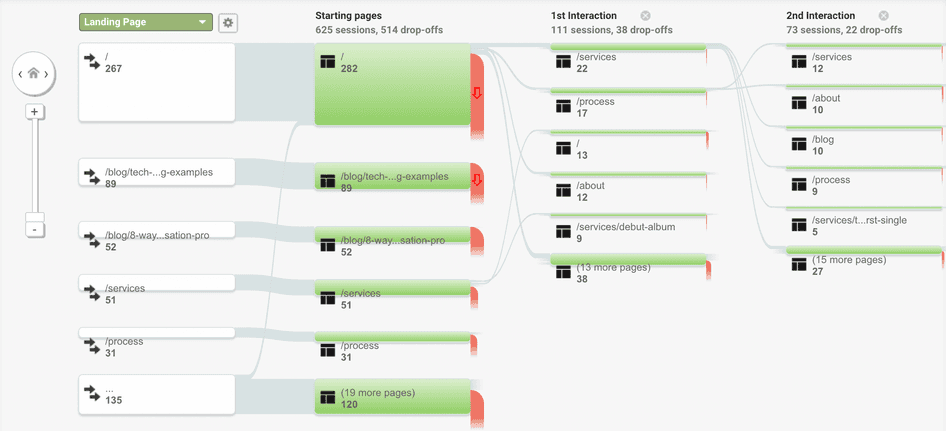
💡Pro tip: make your analysis easier by connecting GA to Hotjar with our Google Analytics integration . Then, leverage User Attributes to filter Hotjar data for specific audience segments you identified with Google Analytics.
2. Behavior analytics data
Now that you know what journeys your visitors take, you’ll want to see what they’re doing on each page. This is where behavior analytics tools, like Hotjar Heatmaps and Recordings , can help.
Scroll heatmaps show you where people stop scrolling on your product and support pages, showing you which parts of your page go unseen
Click heatmaps show you where people are clicking most, indicating how intuitive your UX design is and giving you ideas for improvements
Recordings let you rewatch individual journeys to find out how customers behave, where they get stuck, and what they do before clicking your call to action ( CTA )
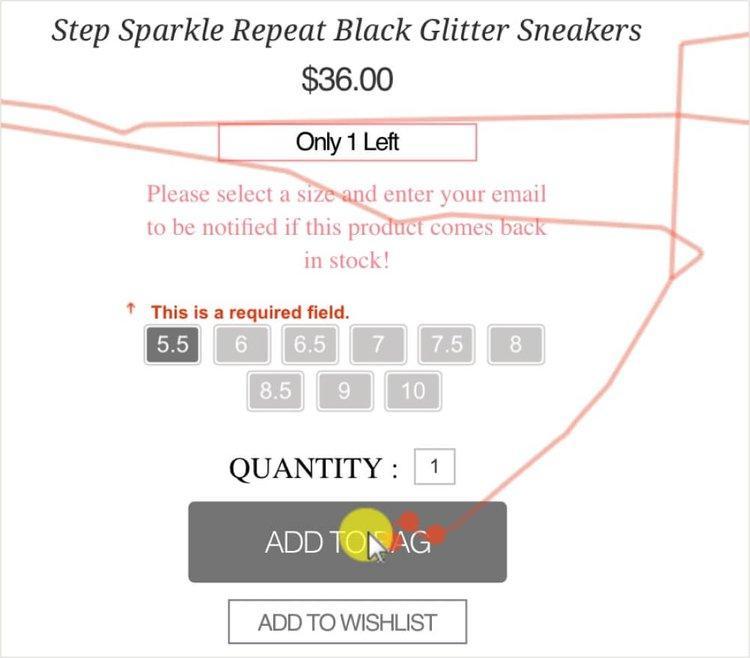
3. Email queries, chat logs, and customer support logs
Your company’s everyday conversations with customers are a gold mine of insights. They reveal what users commonly get frustrated with, what information they need, and how often specific problems occur.
Ideally, use a tool to categorize and log queries and support requests from your customers. You can then hold regular reviews with your sales and support teams to see how the trends fit into your customer journeys.
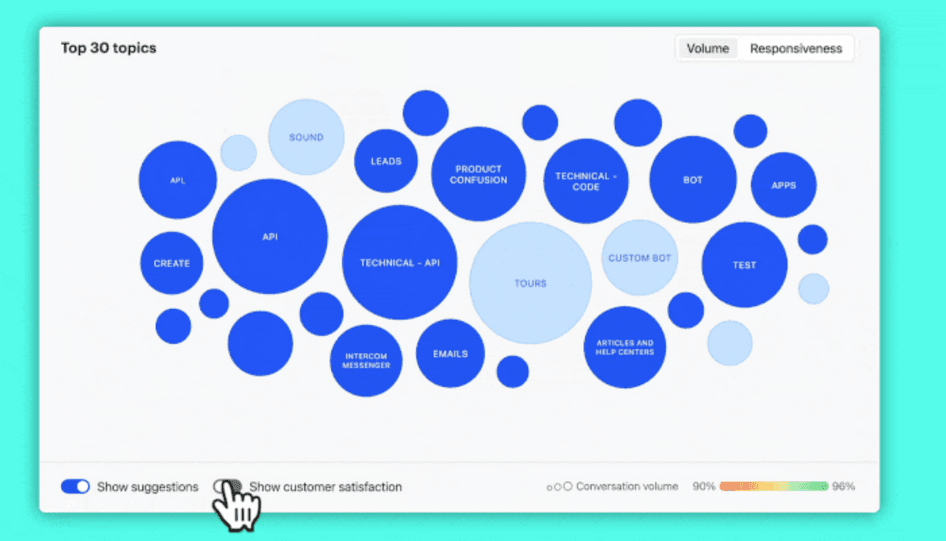
Customer support platform Intercom visualizes common conversation topics
4. On-site and email surveys
Asking your customers for feedback is an effective way to understand their experiences at different parts of their journey. In addition to getting subjective, descriptive feedback, surveys also give you quantitative data (like NPS scores) to support optimization efforts.
Following an interaction with customer support: email a survey that asks respondents to rate their customer satisfaction level. Include an open-ended question prompting customers to describe what you could do better.
Following a successful purchase: target shoppers with an on-site survey asking them to submit an NPS. Then, track how this score changes as you update and improve to your checkout process.
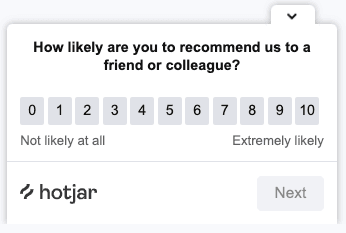
5. Customer interviews
Having one-on-one discussions with customers is a great way to dig further into their needs, motivations, and pain points. You might find it helps to offer customers an incentive to speak with you, but satisfied customers will often do so for free.
However, don’t focus solely on happy customers. Performing exit interviews with regular customers who change to another supplier can reveal a weak link in the customer journey.
❓Did you know? Hotjar recently added Engage , a user research tool, to our platform. Engage makes it easy to book, conduct, and analyze customer interviews, so you can find new insights more easily.
Create user personas for the customers you’re trying to serve
Depending on your goals, you might want to create multiple maps for different ‘types’ of customers. For example:
New customers + Existing customers
Actual customers + Ideal customers
B2B customers + B2C customers
Creating separate maps for your different customer types ensures more accurate, actionable maps. However, you’ll need a clear idea of who these customers are and how you can identify them. That’s why it’s a good idea to create a user persona for each distinct customer you’re trying to help.
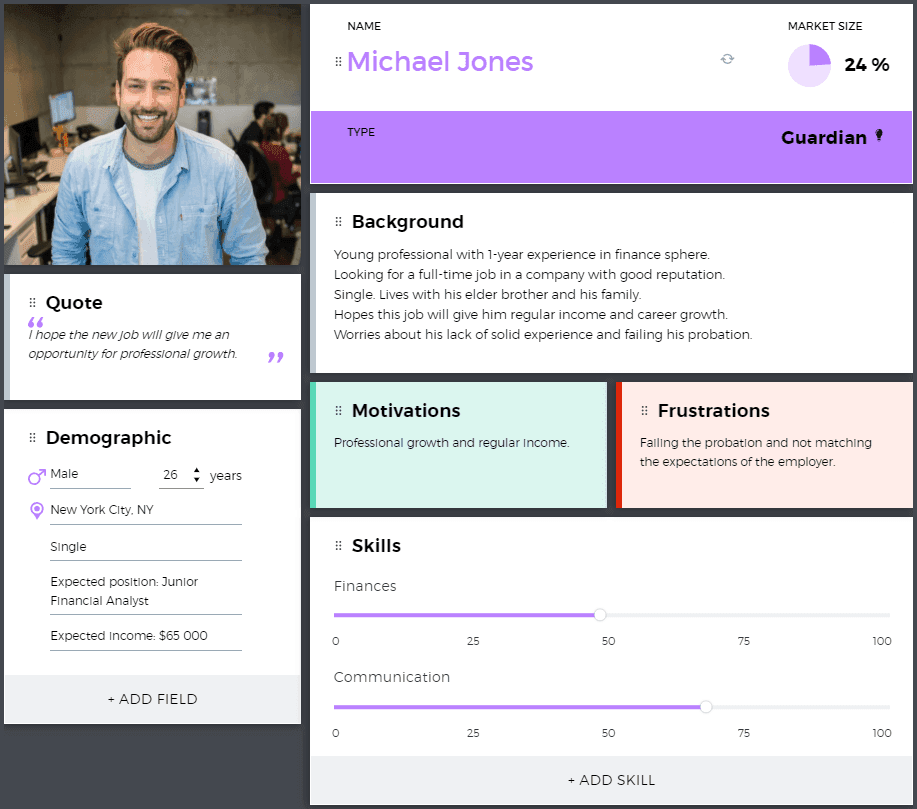
An example persona from UXPressia
💡Pro tip: with Hotjar User Attributes, you can cross-reference data from other platforms to get insights into specific user segments. For example, use Google Analytics to create a segment of new users who visit your site after clicking an ad, then watch Recordings of their journeys.
Why are user personas helpful in customer journey mapping?
Depending on your goals, you may be interested in different user personas: to improve sales of a specific product, you’d want to understand the needs and actions of customers who bought that product. To increase repeat purchases, on the other hand, you’d need to know how existing customers navigate your site and what they need from future purchases.
In both cases, you’d want to see how their journeys differ from other customers and visitors. Understand what they do on their journeys, and you’ll find ways to serve them better.
By analyzing the journeys of people who buy your flagship product, you learn that they often visit a competitor’s site to compare products. Using this insight, you add a table that compares your product with others, keeping visitors on your site and boosting sales in the process.
By analyzing the journeys of existing customers, you learn that they begin looking at related products in your range around three months after an initial purchase. Accordingly, you start sending automated emails around month three to grow sales while increasing customer delight .
Note: traditionally, marketers created user personas with demographic information like gender, sex, and age. Today, many marketers find it helpful to use the jobs to be done (JTBD) framework.
JTBD views user personas less in terms of qualities and more in terms of goals, motivations, and desired changes . Of course, this is perfect for customer journey mapping!
Unravel your customer referral paths
Your customers interact with your ecommerce business in various places, both online and offline. Understanding how these touchpoints fit together—and delivering a consistent experience across them—is the goal of omnichannel marketing.
In some cases, their journey will be a straight line:
The prospect enters ‘best winter jackets’ into a search engine
They immediately find your blog, click through to your store, and make a purchase
A week later, the customer receives their order and goes on social media to share their satisfaction with the product
However, in other scenarios, the journey will be more complex:
A prospect hears about your clothing brand from a friend
Weeks later, they see your brand on Instagram, visit your store, and sign up for your newsletter
The prospect then visits two other physical clothing stores to compare jackets
A day later, they receive an email from you offering a 10% discount on jackets they previously viewed—they return to your online store to make a purchase
The customer has a small issue with the order and calls your customer support line to resolve it
As a business, you might want to serve the second customer better so they can become an advocate, too. But to map out their journey accurately, you need to know where they came to you from—in other words, their referral path.
Combine data from your different tools to understand your customer referral paths
Building an accurate map of omnichannel journeys is challenging but not impossible. Ideally, you’ll look at data from two different tools.
Look for referral paths in Google Analytics. The Behavior Flow report tells you where website visitors are coming from (e.g. organic search or email).
Use surveys to fill in the gaps. For example, when a customer signs up to your email newsletter, send a survey to ask how they discovered your brand.
Combining both these data points gives you a more complete customer journey map. And if you’re using Hotjar, our Segment integration helps you view survey responses for different audience segments by leveraging User Attributes.
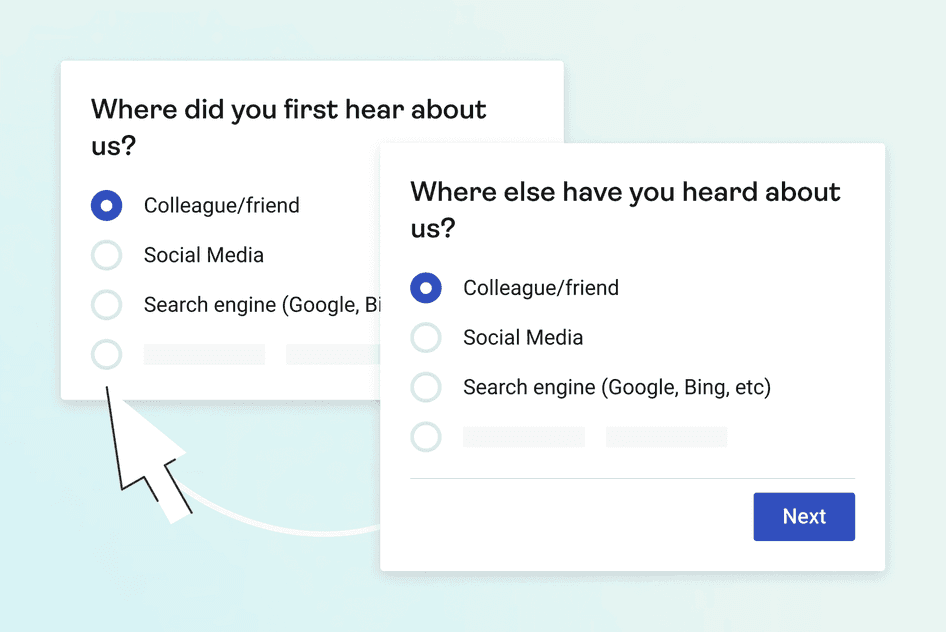
Create (and update) your maps
Having gone through the previous four steps, you can build maps for each key customer persona. Your team is now in a great place to analyze and improve critical touchpoints along the customer journey.
But don’t forget that your business is always evolving, so your maps need to evolve with it.
Update journeys as they change. As you add new products, features, and marketing funnels, map out the new journeys your customers take.
Track and update key metrics. If you’re including quantitative data in your maps, like NPS or CSAT scores, track changes and update your maps every quarter.
Start mapping your ecommerce journeys today
The more complicated your customer journeys are, the more opportunities you have to delight—or disappoint—your audiences. Customer journey maps give your company a shared framework for improving their experiences across the entire conversion funnel .
But remember: your customer journey maps are only as good as the data you used to create them. By researching the what , how, and why of your customers’ behavior, you’ll build effective customer journey maps that drive real impact.
Solve your biggest conversion challenges
With tools like Recordings, Surveys, and Feedback, Hotjar helps understand why visitors don’t convert—and gives you the insights and information you need to make them.
Ecommerce customer journey map FAQs
Can customer journey maps help us improve our web design.
Customer journey maps help you zero in on parts of the customer journey that need the most attention: i.e. the points where customers are falling off or feeling dissatisfied with their experience.
You can then gather data around these conversion bottlenecks using behavior analytics platforms like Hotjar. If your research reveals a problem with web design , you can apply ecommerce CRO and web design principles to improve the page. Take a look at some recent web design examples to see how the best companies in the world are doing it.
How do early-stage ecommerce companies benefit from customer journey maps?
If your company is in an early stage of growth, you probably don’t have the resources to optimize your whole funnel. Customer journey maps help you identify the parts of your funnel to prioritize so you can use your resources efficiently.
You can then start gathering data and using ecommerce design metrics to inform future improvements.
Previous chapter
Shopping cart UX
Next chapter
- Case studies
- Expert advice
How to create a customer journey map in e-commerce (+ free template)
The e-commerce market is growing rapidly. With new e-commerce businesses emerging daily, it is getting increasingly harder to stay competitive. So, how do you succeed in such a rapid and competitive environment?
Among all the variables of all the success formulas out there, there's only one constant — an exceptional customer experience. And other e-businesses cannot copy this ingredient.
And there’s one framework that is really good at helping you step up your customer experience game — e-commerce customer journey mapping.
- 1 Customer journey mapping
- 2 What is the e-commerce customer journey?
- 3.1 Set the goal
- 3.2 Define the scope
- 3.3 Use personas
- 3.4 Collect the data
- 4 E-commerce customer journey stages
- 5.1 Draft the backbone
- 5.2 Add some meat
- 6.1 Streamlined navigation
- 6.2 Personalization
- 6.3 Mobile optimization
- 6.4 Transparent product information
- 6.5 Efficient checkout process
- 6.6 Responsive customer support team
- 6.7 Post-purchase engagement
- 6.8 Social proof and trust signals
- 7 What to do next
Customer journey mapping
Customer journey mapping is a visualization of every interaction happening between customers and your product or service at all stages of their engagement.
Here is what a complete customer journey map may look like:
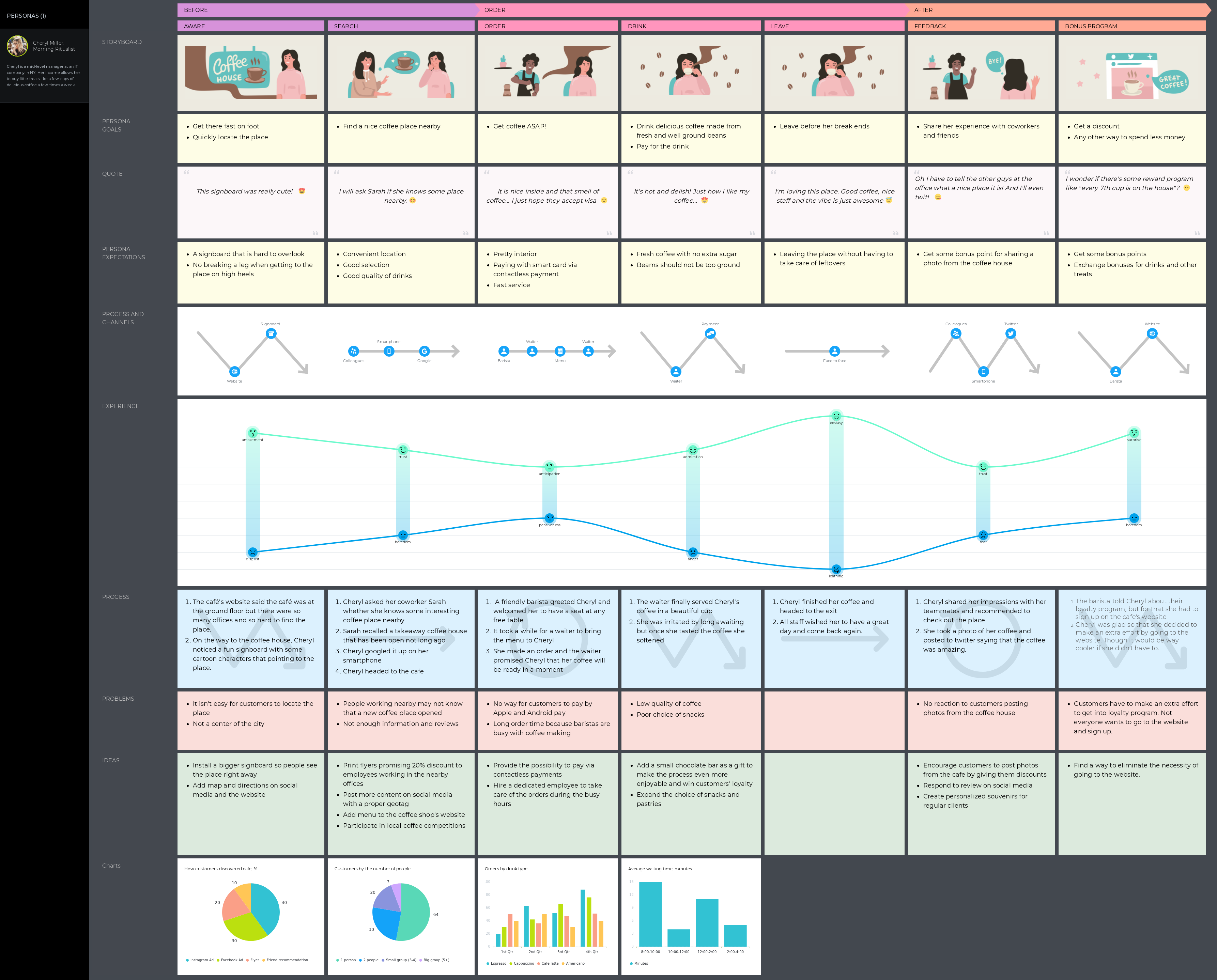
You can use this technique to understand how your business performs from your customers’ standpoint, as it allows you to put together all the data and order it in a clear and comprehensive way.
Some of the things you can do with the help of customer journey maps in e-commerce are:
- Capturing all the touchpoints and channels customers go through when visiting your e-commerce website. And what’s most important, understand what happens during those interactions;
- Understanding how customers feel at every step of their journey with you and what you can improve so they get less dissatisfied and more happy with your service;
- Indicating the pain points of the journey and brainstorming solutions;
- Discovering moments of truth for your customer.
Now that we’ve covered the basics, let’s proceed to a customer journey in e-commerce.
What is the e-commerce customer journey?
In e-commerce, a customer journey is a dynamic and evolving story shaped by individuals' interactions and experiences during their online shopping endeavors. At its core, it embodies the seamless fusion of technology, user expectations, and brand engagement.
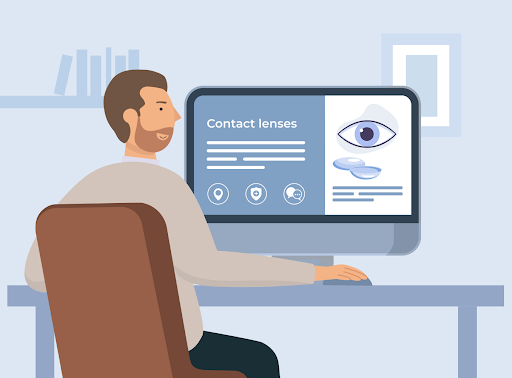
This narrative extends beyond the mere act of making a purchase, encompassing every touchpoint from the first spark of awareness to the post-purchase engagement.
In this intricate journey, the significance lies not just in the transaction itself but in the holistic experience crafted by businesses. A successful e-commerce user journey is characterized by personalized interactions, user-friendly interfaces, and the ability to anticipate and cater to customers' needs.
The journey becomes a testament to a brand's commitment to customer satisfaction, weaving together elements of convenience, trust, and delight, resulting in loyal and returning customers.
Understanding and optimizing the e-commerce customer journey is pivotal for businesses seeking to forge lasting connections with their clientele. It is a strategic approach that goes beyond the transactional aspect, acknowledging that each customer journey phase influences the brand's overall perception.
A positive journey fosters customer loyalty, encourages repeat business, and can transform satisfied customers into advocates who willingly share their positive experiences with others.
An e-commerce customer journey is also a valuable source of insights for businesses aiming to refine their strategies. By analyzing customer behavior, preferences, and pain points along the customer journey, companies can adapt and enhance their offerings continually. This iterative process ensures a competitive edge in the market and positions the brand as one that prioritizes and evolves with its customers.
Ultimately, the e-commerce customer journey is a narrative of reciprocity — a continuous exchange between the customer and the business. When thoughtfully navigated and enriched, it becomes a powerful tool for businesses to drive sales and establish enduring relationships in the digital marketplace.
The prep-work before the actual e-commerce journey mapping

To take the most out of your customer journey mapping process, you will need to make some preparations beforehand. Make sure you’ve got all the following things covered before starting with journey mapping.
Set the goal
Start with setting clear and achievable goals before getting down to the mapping part. Here are some examples of the goals you might want to target for your e-commerce project:
- increasing conversion and overall sales of an online store;
- discovering pain points and problems in a given scope of the journey;
- brainstorming the solutions for discovered problems;
- reduce the number of refunds;
- increase the number of reviews.
You can pick one or a combination of them. The bottom line here is you need a goal so it both helps you track progress and define the scope of the journey area you want to map.
Define the scope
Set the scope of the journey you’re going to map out. Covering the entire customer journey in e-commerce will take too much time and effort. Most likely, it won't be feasible to complete such a challenging task in a single sitting.
Instead, you can either start off with the most problematic part that needs immediate attention or focus on the part of the journey you already know too well. This way, you will be able to start mapping without investing in additional research.
Consider starting your mapping exercise with the stages related to one of the crucial elements of an e-commerce website — checkout. Although it’s not the first thing customers face when purchasing online, according to the statistics, around 70% of products added to the cart eventually get abandoned.
This is a powerful argument for taking checkout-related stuff more seriously and analyzing how to improve the customer experience at that particular stage of their journey.
Use personas
If you think mapping out your website page by page is enough, think again. You need to map a customer journey with your customer in mind, differentiating between customer and business goals. That’s where personas come into play.
Speaking scientifically(ish), a buyer persona is a collective image of a particular group of customers that represents their behavioral patterns, goals, expectations, and frustrations.
Creating a journey map without knowing exactly who your customers are is like creating a map for everyone and no one at the same time.
When mapping journeys for an online store , you will find that some buyer personas are more tech-savvy, and some are less. They will also have different goals when interacting with your site, expectations at journey stages, and experiences. As a result, their customer journeys will also differ.
Take all of that into account before you start mapping the journey of a particular customer segment.
Take a look at this buyer persona that we created for an e-commerce customer journey map example in our persona building tool :

Collect the data
Research is an essential step that comes before analyzing the customer journey of an online store. Adding real-world data brings tangibility to your journey maps and helps you identify the most problematic stages of the journey.
For instance, you will need to know how many visitors made it to the checkout page, how many eventually completed the purchase, becoming new customers, and the percentage of those who dropped out. If you have a multipage checkout, it would be useful to know which product pages cause your visitors to abandon their cart.
Web analytics is an excellent source of data. And by the way, you can combine that data with journey maps using our customer journey mapping tool . It supports the integration with Mixpanel and Google Analytics , which will let you display real-time analytics data on your e-commerce customer journey maps in the form of a marketing funnel.
That way, you will have some hard data to back up your journey maps.

Here are other data sources that can be used to learn about your customer journey before putting it on the map:
- HotJar uses interactive heatmaps of customer clicks and actions to help you visualize how they engage with particular online store pages and where they need help.
- Net Promoter Score (NPS) ranges from 0 to 10 and shows the willingness of your customer to recommend your product to others. This provides a simplified, yet highly effective vision of a brand’s popularity and customer loyalty .
- Teammates who can share knowledge about the actual customer journey and its particular stages. For example, if you decided to focus on improving the delivery stage, it would be reasonable to invite the stakeholders from the delivery department, from the head of the department to couriers who deal face-to-face with your customers.
E-commerce customer journey stages
What are typical e-commerce customer journey stages? We’ll explore them through a fictional example.
Imagine Sarah, an avid fitness enthusiast, scrolling through her social media feed. As she leisurely swipes through photos of scenic landscapes and adorable pets, she stumbles upon an eye-catching sponsored post showcasing a new line of high-performance activewear. It serves as the trigger, sparking the first phase of her e-commerce user journey: Awareness .
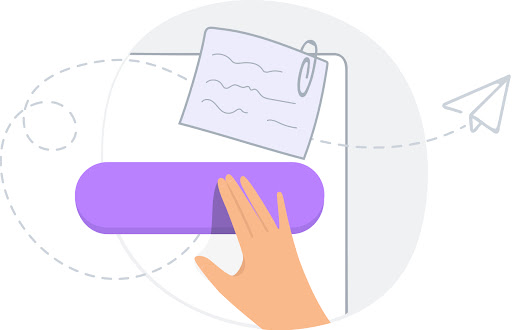
Intrigued, Sarah clicks on the post, delving into the brand's profile. She explores product images, reads captions, and clicks on a link leading her to the brand's website. Now, at the Interest stage, Sarah is on a quest for more information. She navigates through the site, exploring product descriptions and customer reviews, and perhaps watching a video highlighting the durability and style of the activewear.
The brand cleverly captures her interest, offering a 10% discount for first-time customers. Tempted by the offer and convinced by positive reviews, Sarah adds a few items to her virtual shopping cart. Now, she's transitioning to the Consideration stage, weighing the pros and cons of her selections.
As Sarah contemplates her choices, the brand doesn't let her enthusiasm wane. An automated email promptly lands in her inbox, acknowledging her cart activity and offering personalized recommendations based on her preferences. This thoughtful touch moves Sarah into the Decision-making stage, subtly nudging her closer to making a purchase decision.
Encouraged by the seamless online experience and the brand's customer-centric approach, Sarah confidently clicks the "Checkout" button. The purchase is complete, marking the Conversion stage. The brand doesn't stop there — they send a thank-you email, including a discount code for her next purchase and inviting her to join their loyalty program.
Sarah is now at the post-purchase, Delivery , stage. She eagerly awaits the delivery of her activewear, and the brand, through strategically timed follow-up emails, keeps her engaged by sharing fitness tips, styling ideas, and sneak peeks of upcoming collections. This not only ensures customer retention but also plants the seeds for Sarah's potential advocacy as a satisfied customer.
In this narrative, we've traced Sarah's e-commerce customer journey from awareness to post-purchase engagement, highlighting the importance of a seamless, personalized, and customer-centric experience throughout each step.
Let's now work together to create an e-commerce customer journey map example.
Creating an e-commerce customer journey map
It’s time to get down to actual mapping. First, you will need to draft the backbone (or skeleton) of the customer journey map. These are the stages a customer persona goes through while interacting with your online store.
Draft the backbone
Let’s continue with our delivery e-commerce customer journey map example and try to identify the substages of the delivery stage.
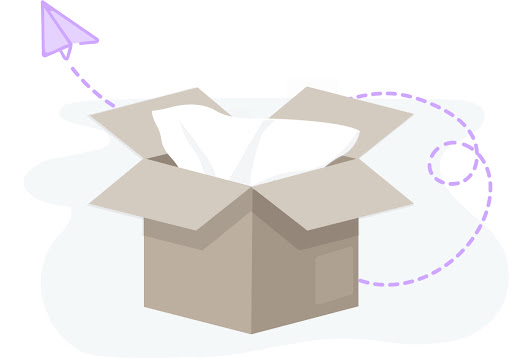
- Requesting the delivery. At this substage, customers complete the purchase and type in their delivery information. Usually, it is done at the checkout page, so it may be considered a major customer touchpoint to pay attention to at this substage.
- Confirmation call or email. Possible touchpoints of the substage: getting a confirmation email and communicating with a customer service agent.
- Waiting for the delivery. This might be the most irritating part of the delivery journey stage for many customers, so it’s a good idea to keep them updated on the delivery information while the item is on its way. Touchpoints may be the same as at the previous substage. Others could include, for example, getting email updates on the delivery status.
- Receiving the items. Contrary to the previous substage, it is the most joyful moment of the whole shopping process, so take your time to think about making it even more memorable. Touchpoints: courier, package.
- Signing the docs. Although this formality is kind of irrelevant for a customer at this point, make sure not to make it too complicated. Touchpoints: meeting a courier, signing delivery documentation.
Here is what the backbone of the e-commerce customer journey map will look like.
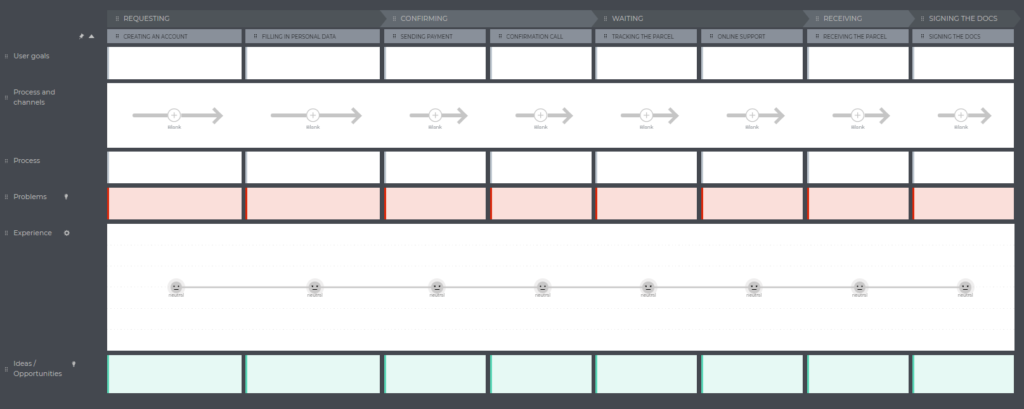
In the same way, you can divide the purchasing process into “Review cart”, “Checkout”, “Payment”, and other stages and analyze them in your map.
Add some meat
Let’s briefly look at other steps of creating a customer journey map.
- Customer goals and expectations
Adding customer goals and expectations will let everyone see what your customers pursue at each stage and how it aligns with the goals of your business. At the Search stage, this could be “finding the necessary product with minimum effort”; at the Waiting for the delivery substage, this is definitely “getting the product ASAP”, etc.
- Touchpoints
Identify the interactions happening between your business and customers at each stage: when visiting the homepage or the checkout page, during communication with the customer service agent, etc. This will help you determine the ones that need improvement and eliminate those that encourage your customers to move straight to your competitors.
- Processes & channels
Specify the channels the persona uses and what processes look like during their customer journey. Here are some channel examples: website, advertisement, social media, phone call, mobile app, email, etc. Make sure that the experience you deliver the same positive experience across all the channels.
- Problems & Ideas
Find the pain points the customer encounters while purchasing on your website. It can be a page that loads for years, poor website navigation, low-res images, slow and confusing checkout, lack of support, etc. After that, come up with ideas for solving these problems.
- Moments of truth
Moments of truth (MoTs) are the moments when a customer either stays with your business or leaves forever. For an e-commerce website, a site structure and design, the checkout page, communication with support, and the help center are the most common MoTs. So it's worth paying extra attention to such moments and ensuring everything about them is as customer-friendly as possible.
And that’s what you will see after you map out all these points and add some visual touch to your customer journey map:
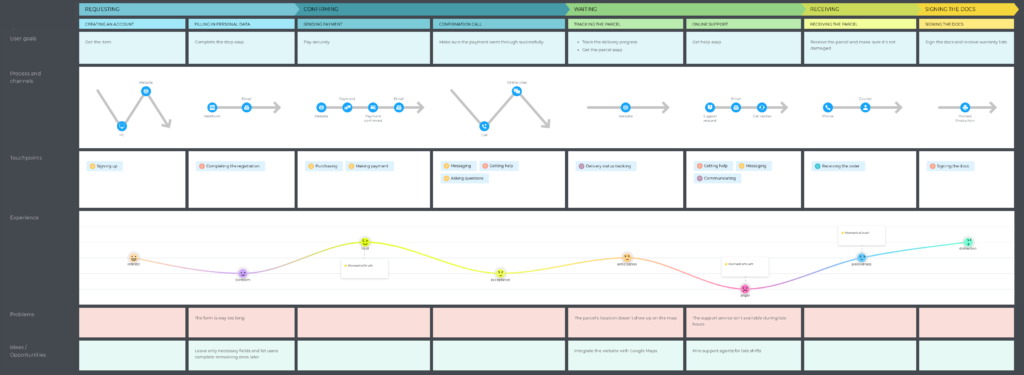
How online stores can improve their user journey?
With a finished map in front of you, you will be able to determine problems your customers have to deal with at different parts of the journey. And, certainly, you will start thinking about the ways to solve them.
Online stores can enhance their user journey through a combination of intuitive design, personalized customer experiences, and customer-centric strategies.
Below are some practical ways online stores can improve their user journey experience, illustrated with examples.
Streamlined navigation
Consider the ease with which customers can navigate through the website. Implement clear and intuitive menus, categorize products logically, and provide a search bar for quick access.
For instance, the online store of a well-known electronics brand organizes products by category and features a prominent search bar, allowing visitors to find what they need effortlessly.
Personalization
Leverage data to personalize your online shopping experience. An online clothing company, for instance, could use past purchase history to recommend complementary products or offer exclusive discounts based on customer preferences.
Amazon's personalized product recommendations serve as an excellent example of how tailored suggestions can enhance user engagement.
Mobile optimization
Recognize the prevalence of mobile users. Ensure the online store is optimized for various devices, particularly mobile phones. A fast, responsive, and mobile-friendly design enhances the overall customer experience. Launching a mobile app is also a bright idea.
The mobile app of a popular food delivery service is a prime example of seamless mobile optimization, allowing visitors to browse menus and place orders effortlessly on their smartphones.
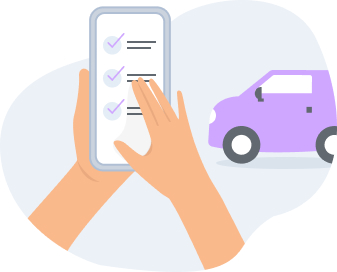
Transparent product information
Provide detailed product information, including specifications, sizing charts, and customer reviews. This transparency builds trust.
The online store of a cosmetics company, for instance, not only showcases product features but also includes video tutorials demonstrating the application of the products, enhancing the customer's understanding of what they look like on real people and confidence in their purchase.
Efficient checkout process
Simplify the checkout process to minimize friction.
A well-known online marketplace incorporates a one-click purchase option for registered users, reducing the steps required to complete a transaction. This streamlined approach saves time and reduces the likelihood of cart abandonment.
Some of the customers will also value a guest checkout option.
Responsive customer support team
Prioritize responsive and accessible customer support. Live chat features, chatbots, and clear contact information contribute to a positive user experience. And make sure to respond to your customer emails.
An online tech company, for instance, utilizes a chatbot for instant assistance, guiding users through common troubleshooting issues and product inquiries.
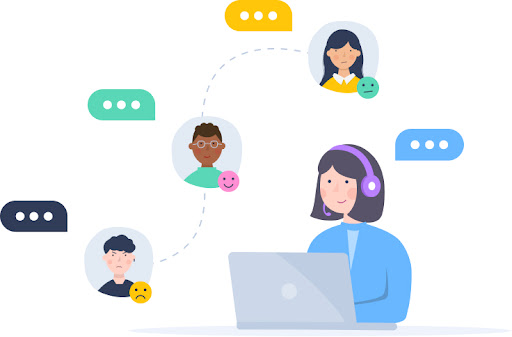
Post-purchase engagement
Continue engaging with customers at post-purchase stages. Send order confirmations, shipping updates, and request feedback.
An online bookstore, for example, sends personalized book recommendations based on a customer's purchase history, encouraging ongoing engagement and future purchases.
Social proof and trust signals
Incorporate social proof elements, such as customer testimonials, ratings, and trust badges into your website pages. A popular travel booking website prominently displays user reviews and satisfaction ratings, influencing potential customers' decisions and fostering trust in the platform.
By integrating these strategies and learning from successful examples, online stores can create a user journey experience that, besides being efficient and enjoyable, also establishes a strong connection between the business and its customers.
What to do next
Creating a CJM is a good chunk of work, but it doesn't end there. Maximize its value by articulating a clear plan for implementing ideas and passing it on to the responsible individuals.
Doing all that is so much easier with UXPressia as it allows collaboration with all the teammates simultaneously and has exporting and sharing capabilities.
In addition to that, we have created e-commerce customer journey map examples (and many more customer journey map examples) that already include some general stages and touchpoints.
SEE E-COMMERCE TEMPLATES
This is the updated article originally published in March 2019.
Rate this post

Hey Dan! Great article, can you please share with us high-quality pictures that we can read the details on the picture “complete customer journey map”? thanks!
Hey Netanel!
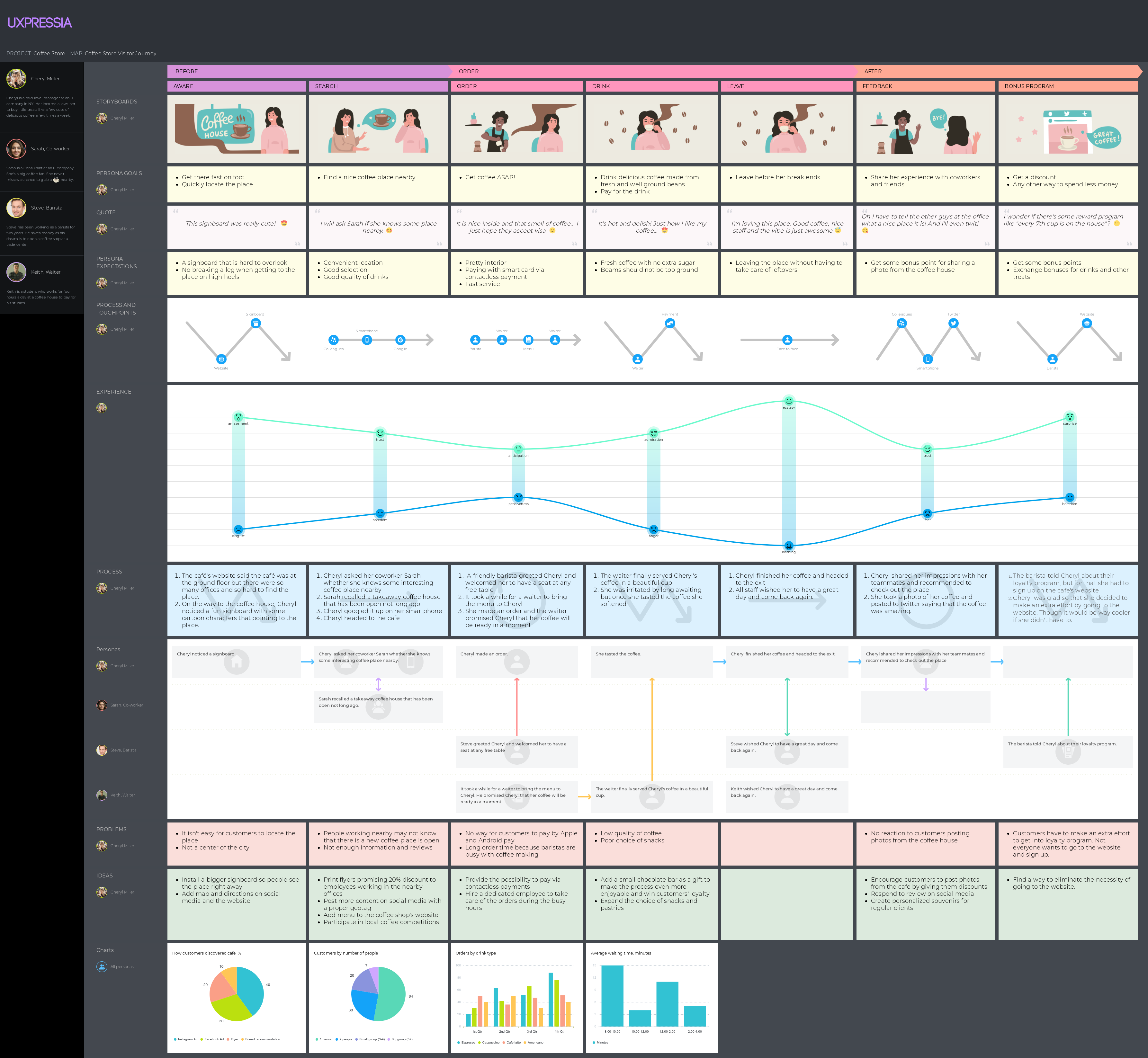
Adding analytics to a customer journey map in ecommerce is very powerful, great feature. It also means you have to regularly revisit and update the map with new data, which means you can track implementation progress and discover new areas for improvement. Thanks for the post
A nice customer journey ecommerce example, but I think what might be missing here is retention. We try to include it as the final stage for all our maps. At the very least, it helps us keep in mind that the ultimate goal is not only for the customer to have a good experience, but for them to actually come back to shop with us.
I couldn’t agree more! Creating a CJM is a vital step in the process of providing an exceptional user experience, but it’s equally important to have a clear plan for the implementation of the ideas generated from it. Also, thank you for the ecommerce customer journey map example. I’m gonna try and build my own map, using it as a reference. It’s always a headstart and offers a solid foundation. I’m looking forward to exploring UXPressia and leveraging its capabilities to create an outstanding CJM for our customers.
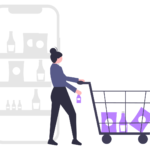
How to Make Sense of the Ecommerce Customer Journey
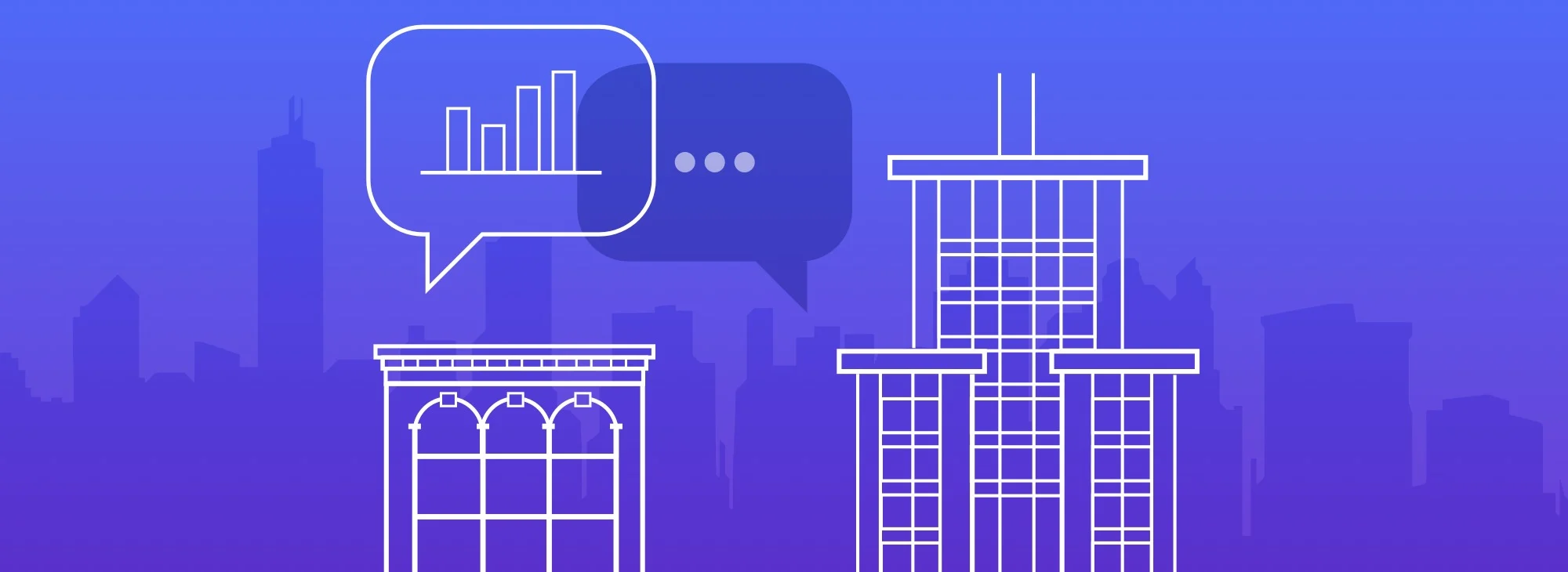
No one can deny how big the ecommerce market is. Global ecommerce sales are projected to nearly double to $6.5 trillion by 2023. Its share of total retail sales is also growing, particularly in the wake of the COVID pandemic.
So we know the sector is massive, but how complicated is it? Surely it is just a simple matter of finding the product you want, buying it, then waiting for delivery. Or is there far more to the ecommerce customer journey? There are multiple factors, from lead times to customer service, that makes an ecommerce business a good ecommerce business (or not).
Modern business, especially ecommerce , is about identifying and utilizing the best tools available. And that covers everything from live video conference software to good CRM management systems.
Smaller businesses need to find such tools without breaking the bank. Fortunately, they can choose from the best free business apps that will provide great service without denting the budget. Having the ability to be agile and to adapt to changes can be a major positive for your business.
If you look at a successful online retailer such as Larq , you will see a well-constructed site that is easy to navigate and that also offers links to their various social media platforms. This is a good example of how an ecommerce site should look. It shows they have looked at the customer journey and optimized their site to make it a positive one.
You need to know each stage of that journey, how those stages affect customer experiences and their relationship with you, and how you can improve the journey at every level and customer touchpoint . Let’s look at how the customer journey unfolds and what factors of customer journey mapping that are important for you to understand.
What is the Ecommerce Customer Journey?
That quote about life from Ralph Waldo Emerson can also be applied to ecommerce businesses. While it is easy to think about the destination—that purchase arriving in the customer’s hands—it is also very much about the journey and what happens en route to that final destination. Just as with life’s journey, every stage of the ecommerce journey has its own features and qualities.
Our customers no longer buy just a product, they buy the whole experience of being a customer, they buy your brand qualities, your mission and values, and more. They buy into the ease of your processes, the information you provide, the convenience, the quality of your aftersales (and presales if needed) customer service. In short, they look at the whole package you offer.
We all do process mapping for our businesses as a matter of course, so we should be doing the same for the customer experience. You need to understand every aspect of how your business operates, from dealing with logistics to ensuring your customers are happy.
And do not be afraid to use shortcuts. The very reason tools such as templates are offered is to make it easier for you to conduct business. They can save you time and money and it can be easy to find one that suits you.
It is not only the price of something that matters to them, it is everything that surrounds it, including how they access your site or app (and how easy it is to use), how you communicate with them across different channels, possibly even using companies like Slack , and how quickly you respond to their inquiries. In short, it is about providing an ecommerce customer journey map that meets all of their needs.
Focus not only on your customers’ journeys, but also on their relationship with you; that’s important whether you are a small business or a large international one. Investing in customer relationship management (CRM) software is highly advised, especially when you have a multichannel or omnichannel business.
There are also other aspects to consider. Many people now ask ‘ what is affiliate marketing ’, as offered by MaxBounty, and what is its place in online retail? If you use a strategy such as affiliate marketing, then you need to make sure that a customer’s journey is consistent across all the options open to them. Whether they find you via your own channels or through an affiliate.
5 Stages of the Ecommerce Customer Journey
So we recognize that the customer journey is far more than a simple buying process. We also recognize that we need to know how to develop a successful ecommerce fulfillment strategy that helps us win and retain customers. Knowing the main stages of that journey is essential to both mapping it and ensuring that it is as optimized as possible.
And when a business operates across many channels (omnichannel or multichannel ), you need to recognize that their journey may differ greatly depending on which channel they are using.
1. Awareness.
Every journey has a starting point, and in the ecommerce business, that starting point is awareness. This is the stage where the customer discovers your product/service and your brand. This is also where you discover how they found you. Did they find you via a search engine (thus validating your SEO strategy)? Did they see an ad on social media or in a more traditional medium?
You can not only see where they came from but also what behaviors they are showing once they have ‘arrived’. Do they look at particular landing pages that give you an idea of what products they are interested in? You could also describe this as the first learning stage; the customer is learning about your business and you are learning their preferences and needs.
2. Consideration.
In this stage, the customer begins to show real interest in particular products or services and move beyond general browsing. For example, with a cosmetics company such as Bliss World , they may start looking at the vegan skincare range, letting you see that this is their specific interest product-wise.
From your organization’s perspective, this stage of behavior allows you to analyze what works and what doesn’t. Those analytics can help you reduce bounce rates and encourage further investigation by the customer.
3. Conversion.
One of the magic words in ecommerce, but this stage is not always a guaranteed sale. In some cases, this stage can include those customers who have added a product to their cart (or to their wishlist) but have not yet proceeded to actually buying it. In most cases, though, we do consider this to be the stage at which a prospective customer becomes an actual customer who adds to your conversion rate.
It is at this stage that you as a business have to begin delivering on any promises you may have made to get the customer to this point. Part of that delivery is making sure all your processes, such as marketing, sales, customer service, etc., are aligned and are delivering the same message and quality of service.
4. Retention.
Another of those magic words. Having a customer make a single purchase is satisfying, but having them return again and again to buy is even more satisfying. This means they are very happy with most or all aspects of their journey and experience to date. From this point they begin to exhibit brand loyalty and may always look at your site before others.
The thing for businesses to be aware of at this stage is that providing an excellent experience once is fairly easy, but providing it time and time again is where the challenge lies.
5. Advocacy.
This stage is the Holy Grail of the customer journey but do not expect to achieve it with every customer. Most companies fall short at stage four, but those who do manage to retain customers are then hoping that those people become advocates and brand ambassadors with a high lifetime value. At this stage, your best customers are not only buying but interacting at a high level.
They will interact with you across most if not all of your touchpoints, such as your homepage, any blogs, social media, etc. More importantly (from your marketing perspective), they will be sharing information that you post on their own platforms and will actively advocate and talk about your products/services. That can also include recommending you to people and writing reviews.
Building an Ecommerce Customer Journey Map
An ecommerce customer journey map is a visualization of all the potential experiences a customer may have with your organization. Such a map also highlights the sequences those experiences are most likely to occur in. It can allow you as a business to identify strengths and weaknesses, and thus make improvements where needed.
That customer journey may consist of all the stages we previously listed or they may only cover some of them, if customers do not move to later stages. What you need to focus on is that a customer journey map will show you all the possible permutations of what the customer experiences, whether only one or two stages or all five.
How Do You Build Ecommerce Customer Journey Maps?
Being able to map the customer journey offers many benefits, but if you have never undertaken this exercise before, where do you start? What things do you need to consider before starting?
1. Perspective.
The first important thing to note is that you need your map to be from the customer’s perspective. So, detach yourself from your professional role and start the process as if you were an everyday customer. This can also help you understand the overall customer persona.
To do so, pick a product or service your company offers. Use various terms on search engines to see what results come up. Read any associated material including reviews, articles, and blogs. Then visit your actual site to view the product there. Take notes on how the various customer touchpoints felt and how the experience of visiting the site unfolded.
2. Research.
Put together a focus group that consists of your main demographic targets. Ideally, they will not know what company or brand has formed this group. Pick one of your products or services and ask the focus group to find and buy that item online. Observe and record how they find the item, what paths they take, and what outcomes unfold.
Once the focus group has finished their exercise, take the results and compare them with your experience from part one. By analyzing the two exercises, you can see if you and your customers think in the same way, and will also have a wider overview of touchpoints and interactions.
3. Understanding.
You now have a better overview of how customers interact with your business and how the various touchpoints perform. You now need to understand what those various actions mean in terms of engagement strategy. Did any touchpoint perform particularly badly? By analyzing the information you have collected, you can see what action you need to take next.
Your aim is to have your ecommerce site performing at an optimum level at every touchpoint you (and your customers) have identified. Those touchpoints can range from your own site to your social media platforms to search engine rankings. They can also include independent touchpoints such as review sites.
4. Goals and pain.
You now have some of the foundations of your customer journey map in place. But it is more than just identifying the touchpoints and engagements you have observed. You also need to understand the goals of the customer and the pain points they experience. It can help greatly if you list some of the insights gained from your observation and data collection:
Goals . What is the customer’s ultimate goal(s)? What is it they want to achieve?
Emotional response . What parts of the process make the customer happy? Or what elements make them unhappy or frustrated?
Pain points . What things cause issues for the customer and would they like to see improved?
5. Visualization.
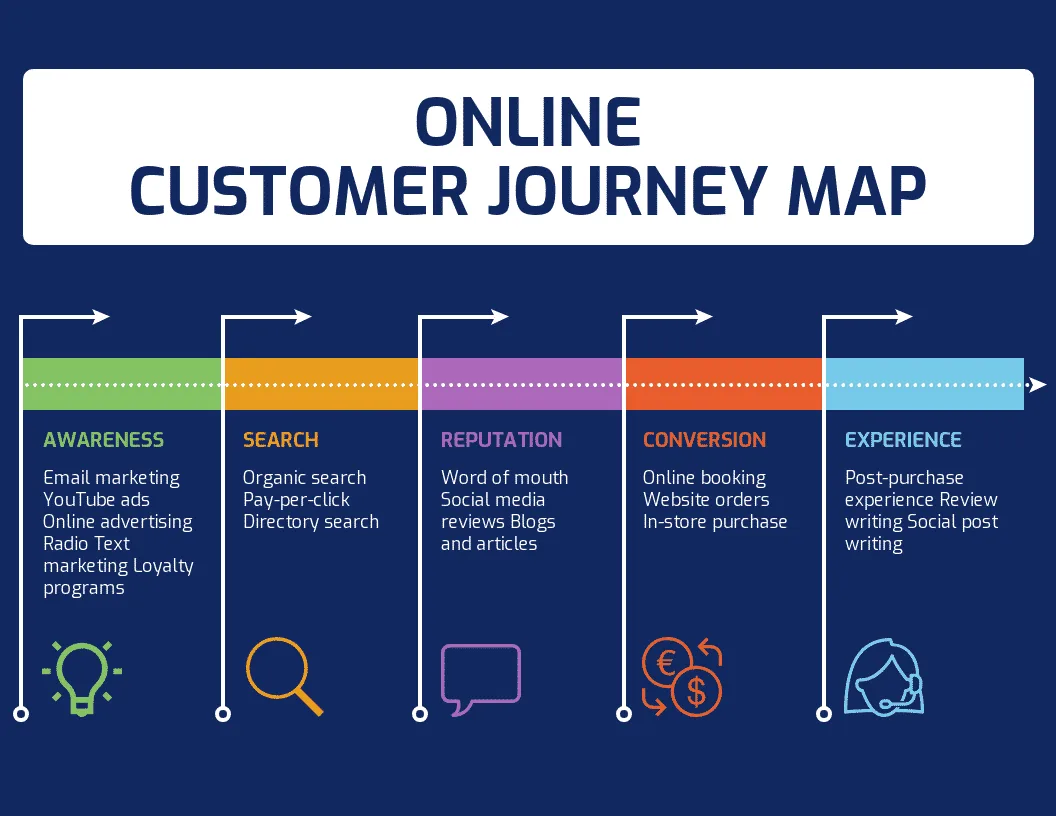
Image source
You should now have enough (likely a lot) of information that tells you what the customer experiences. The problem is that this information is not easy to digest, so you want to simplify it and create a visual that is easy to look at and understand. How you format it will depend very much on your own specific business model.
You may decide to create more than one visual, especially when you are a larger company and may have different teams working on different areas. For example, if you have a dedicated social media team, you may decide to create a journey map that particularly pertains to social media touchpoints, pain points, experiences, etc.
Why is the Customer Journey Important?
Do you really need to make a customer journey map? What benefits does it bring you? Knowing why it is important is as crucial as understanding the whole process itself. There are many reasons why it is not only important, but should be an integral part of your ecommerce business.
Efficiency . It can help you streamline the customer experience and journey by identifying if there are too many steps or touchpoints between the customer starting their journey and ending it.
Effectiveness . Does the required journey make sense to your customers? Acknowledging that we all do things differently, from how we search to how we navigate a site, creating a process that has a general effectiveness for most is a major benefit of a customer journey map.
Understanding . Knowing and understanding your customers, how they think, what they need, what they like and don’t like, is another crucial factor in determining how to create the best possible customer journey. In fact, this is an area where many organizations fail as they focus more on creating the perfect journey for them, rather than their customers.
Setting goals . A good customer journey map can help you identify and set better and more realistic goals. The combination of a human perspective and the hard data you have collected ensures you are more in touch with what makes your business thrive and grow. It also helps you monitor and tweak in real time as you move forward.
Planning . Every business has one eye on the future; new products and services, expansion, etc. Having an accurate customer journey map, and understanding it, means that you can more accurately focus on those future events.
Reducing pain . Pain points are the bane of any online stores and can lose you customers if not identified and remedied. You may be surprised by how many pain points exist once you have completed your journey map. Once you have identified them, you can take action to remove them or to reduce their effects.
How Ecommerce Stores Can Improve Their Customer Journey
For companies looking closely at their customers’ journeys for the first time, it can sometimes be daunting when flaws and gaps are identified that are having a very real effect on your business. Mapping the customer journey is one thing, but knowing how you can act on the data you have identified and improving the customer journey and experience is another.
1. Create touchpoints at every stage.
Anywhere a customer interacts with your brand is a touchpoint. Seeing an ad, visiting your site, looking at independent reviews, contacting your business to find store locations, and finally making a purchase. All of these are touchpoints. Going back to the five stages of the customer journey we discussed earlier, you need to have touchpoints for each stage.
Each touchpoint serves a purpose and plays its part in optimizing the overall customer journey. So each touchpoint you create has to fulfil its specific purpose (ad attracting interest, checkout process quick and uncomplicated, etc.) Ensuring you have multiple touchpoints that fit their respective stages and work properly is essential.
2. Optimize your website for every device.
It is worth remembering that around half of all internet traffic originates from mobile devices . So if your website performs poorly when accessed from a mobile device, you are in effect alienating half your potential customer base. Optimization is key to offering a good experience to all.
It can help to look at great websites that are well optimized, such as Skullcandy , so you can see what is needed. The screenshot below shows how well you can view their products from a mobile device, making online shopping easier for customers.
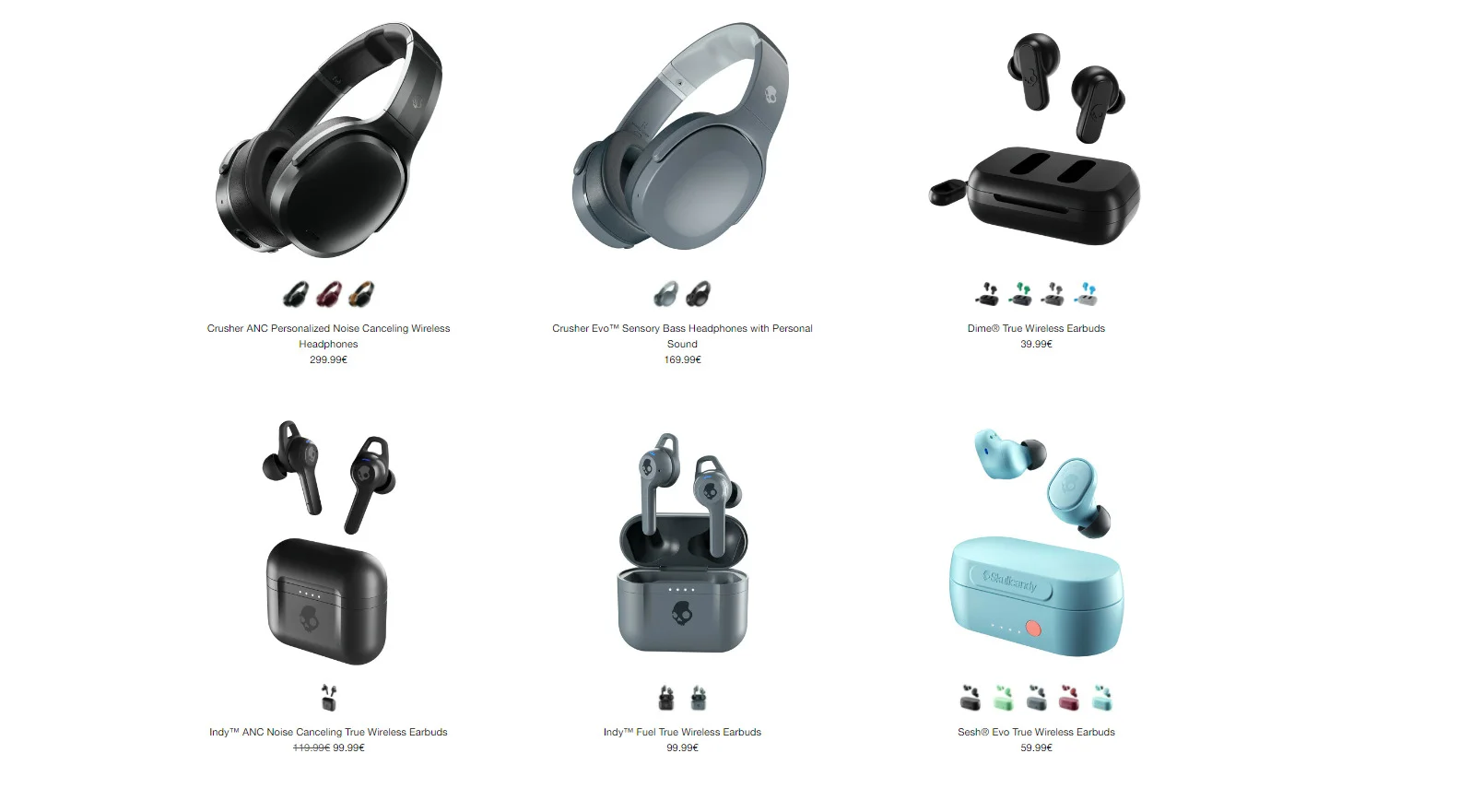
And there are a few factors to take into consideration when optimizing your site:
Test your site . Knowing your site works well on mobile devices is absolutely crucial. You can do this manually at first simply by accessing your site via several different devices. Look especially at loading times and how the site looks on a small screen. For more in-depth testing, use Google’s free testing tool .
Web host . Make sure your web host offers the speed and resources required to make your site fast and responsive. A slow and unresponsive home page and website will put customers off. You also want a host that guarantees the minimum of downtime.
Apps . Consider launching an app to complement your website. They are not as expensive as you think and they can help boost both sales and engagement .
3. Use proactive customer support.
Don’t wait for problems to happen and for customers to contact you. Anticipate the problems or questions most likely to occur and provide answers and solutions that will keep your customers happy. Offering proactive customer support has a number of benefits.
Better customer retention rates. Being proactive means you’re more likely to have happy, loyal customers.
Less calls to your support team. By solving problems proactively, customers can see the solutions themselves and thus will make less calls to you, freeing up your team to deal with more complicated queries and also reducing waiting times.
More first time customers. People talk about the good service they receive and that includes proactive support. When satisfied customers share their experiences, that can lead to new first-time customers.
Increased productivity. Proactivity means better communication. And that means your team has more time to listen to and help customers who call and to collect more information and data.
Communication. You are probably already using video and messaging collaboration tools for sales teams , so why not ensure you also have great tools to communicate with customers. Chatbots and AI are great ways of proactively helping your customers find information.
4. Personalization is key.
It is neither a secret nor a surprise that people like a personal touch, and that is true whether in ‘real life’ or in online shopping and ecommerce marketing. That means going beyond using their name (which you can do with website automation or in marketing emails) and also recognizing their particular interests and buying habits.
Using tactics such as dynamic content marketing, which can customize content according to buying preferences, location, age, gender, etc., means you are offering a personalized approach that can lead to increased sales and better customer retention. Automation and analytics can be the two drivers when it comes to personalizing the customer journey, so use them wisely.
Smaller businesses may feel they could be overwhelmed by these demands, but with so much technology and automation available on a budget, it is not that difficult to do. There are many mobile apps for small business owners that can help with factors such as communications and social media posting, so see what tools can both help you and save money that may be spent elsewhere.
5. Gather data as much as possible and be flexible.
Data is not a one off exercise. Collect as much data as possible in the early stages, but keep collecting it always. Collect data not only on customer behavior and the customer lifecycle, but also general info via surveys, polls, etc. on your social media platforms and via email. The data you collect is a hugely important resource and offers you several benefits and potential uses.
And it is, of course, not just about collecting data, but about analyzing it and interpreting it efficiently. Consider using one of the many tools, such as Google Analytics, to help you with this. Identify what metrics, such as KPIs, matter most to you. A good KPI helps show your business is healthy.
Data is not just a collection of information, it offers tangible benefits that can help your business grow by developing strategies for the future .
Understand the market . Collecting and analyzing consumer data helps you understand how your ideal customers behave online. It helps define and segment particular demographics, understand better what customers want, and see ways to improve the overall experience throughout the customer lifecycle.
Expand your database . The more information you have on customers, the bigger, and more efficient, your database is. And with detailed data, you can segment your customers (and potential customers) into groups that make more personalized strategies, such as dynamic content marketing, easier to achieve.
A larger database allows you to use a variety of strategies. For example, instant messaging can be a great way to boost your ecommerce sales.
Better marketing . By constantly collecting data, you get better insights into which of your marketing strategies and campaigns have worked well. The more data you have, the easier it is to identify which sorts of campaigns are best, and what platforms reach more of your ideal customer base and generate more leads.
Those campaigns could be via social media or you could identify what sort of email campaigns best drive sales.
Customer relationship management is perhaps one of the most important factors for ecommerce businesses to consider and it is worth investing in good CRM software to help with this. You may understand the customer journey, but managing that journey on an ongoing basis is a big task.
Aim to be consistent and to ensure you provide the same positive customer experience throughout every journey. Your online store has to be as accessible and helpful as any physical store would be. And that applies to every channel, platform, and touchpoint where your customers interact with you.
Ecommerce businesses range from massive multinational corporations to small solo entrepreneurs. Customers range from occasional purchasers of low value items to regular buyers of high value goods. No matter who you are or who they are, you should be aiming for parity so that every journey and experience is positive.

Pohan Lin is the Senior Global Web Marketing Manager at RingCentral, a global UCaaS, VoIP and video conferencing solutions providers. He has over 18 years variety experience in web marketing, online SaaS business and ecommerce growth. Pohan has a passion for innovation and communicating the impact that technology has in marketing.
- Jun 3, 2022
- 10 min read
The eCommerce customer journey and how to map it

Think about the last purchase you made.
How long did it take you to click ‘buy’? How many different sites, ads, emails, and stores did you check out before finally fetching your wallet?
Suffice to say that the typical buyer journey is anything but linear. Few shoppers convert right away, and every brand is challenged with adjusting their eCommerce marketing strategy to anticipate buyer movements both online and offline.
So, what can you do to stay ahead? Let’s talk more about what the eCommerce customer journey entails, and how to map your customer’s path to purchase when starting your business .
What is the eCommerce customer journey?
5 stages of the ecommerce customer journey, what factors affect the customer journey, customer journey mapping: why it’s a must, how to map the buyer journey for your business, example of a journey map.
Every so often, a buyer will take a relatively straight path to purchase. They'll search for a product, find your item, and within the same sitting, they'll complete the purchase.
But much more often, customers will be “pinballed” between various touchpoints. They’ll see between 6,000 to 10,000 ads in a day as they’re scrolling through their phones, checking their emails, or listening to Spotify. Then, once they decide to do some shopping, they’ll likely hop between Amazon, your site, and a competitor’s shop.
The eCommerce customer journey is the sum of all of these interactions (see our guide on what is eCommerce ). It begins with the moment a customer becomes aware of your brand to when he or she finally makes a purchase.
Some buyers will convert within mere days—while others may take several months or years. Tipping the scale towards the former outcome will require understanding the core stages and touchpoints of the customer journey and knowing how to make the best impact on your buyers.
Your customers’ overall journey can be broken down into five key stages.
01. Awareness
Your customer stumbles across your brand for the first time. Be it through an ad, social media, word of mouth, or SEO–they are now aware of your products. However, as noted earlier, many will not convert right away. Some may not even be looking to purchase anything at all.
At this stage, you’ll want to make sure you understand how people are finding your brand and who they are. Are they the buyer personas you expected to reach? How do demographics, acquisition source, and other factors affect what action your audience takes next?
While many visitors at this stage may just be “window browsing,” you’ve at least built some sort of brand recognition. Now it’s time to do something with it: retarget people, learn more about their interests, and guide them towards products that are most relevant to them.
02. Consideration
At this point, your buyer shows actual interest in your product. They’ve got their eyes on a particular product or set of products, and are deciding which one is worth buying.
Some may be trying to decide whether your item is a need versus a want. Others may be checking out product specs to make sure that your item is worth the price. Still others may be deal hunting or checking out options on competitive sites.
In any case, you’ll want to track which product pages people are spending the most time on, which products they’re comparing, and what other brands are on their radar. How can you convince them that your product is better? What can you do to build their confidence in your brand or incentivize a purchase?
03. Decision
Alas, your buyer makes a purchase on your site—assuming that the checkout process is easy and buyer friendly.
Your number one goal here is to make sure that the checkout process is seamless. Create a simple checkout flow, offer multiple (and secure) payment options, communicate your return policy, and provide all the information buyers need to feel supported by your brand.
Buyers should know when to expect their packages and any fees associated with their purchase. Don’t let any unwelcome surprises or lack of information lead to customers canceling their orders early.
04. Retention
Once a buyer makes their first purchase with your brand, they’ll ideally become a repeat customer . A positive customer experience—including excellent customer service, on-time delivery, and a multichannel marketing strategy—can work together to build customer loyalty .
Note that even though you’ve won the first sale, you’ll need to continuously earn a buyer’s patronage time and time again. Be consistent in your messaging. Engage buyers frequently. Offer incentives or employ strategies for upselling and cross-selling .
05. Advocacy
Happy customers have the potential to attract other happy customers. Buyers at this final leg of the customer journey are (hopefully) so happy with your product and/or service that they’re eager to spread the word to their friends and family.
Of course, this isn’t a passive activity. You’ll want to proactively nurture brand ambassadors by creating a customer loyalty program , hosting giveaways, showing appreciation, and taking other steps to inspire advocacy.
Your customers are a moving target. Between their unique preferences and backgrounds—plus their prior experiences with brands—there are tons of factors that shape the way they make their purchases.
As you track the various ways that customers interact with your brand, consider how trends like the ones below can make a big impact on the buyer journey.
Social and economic changes - e.g., the recent pandemic. These events tend to spur shifts in buying behaviors and expectations, as many types of businesses and buyers alike adapt to new realities. With each shift, consumers tend to get smarter and potentially pickier on what defines a good value and how to spend their money.
Convergence of online and offline shopping - Omnichannel retail isn’t just a concept anymore. Today, the lines between the offline and online worlds are increasingly blurred—with digital native brands like Warby Parker opening physical showrooms, and longtime retailers like T.J. Maxx investing more in online commerce. Curbside pickup, BOPIS, and in-store returns are just the beginning of what’s to come; brands should expect the customer journey to entail a greater mix of online and offline touchpoints, regardless of whether a customer originated online or not.
Corporate responsibility - Brands today are expected to do good. Inactivity or a difference in values could shape a customer’s engagement with your brand at any point of the buyer’s journey.
Choice paralysis - The proliferation of brands and products online have the ability to frustrate consumers. Make sure that your website is organized in such a way that customers know exactly where to find what they’re looking for. Make it easier for them to filter out noise and/or compare similar options. The last thing you want is for an overabundance of options—or poor site design—to deter your customers from buying. Learn more about combatting choice paralysis .
While customer journey mapping is an imperfect science, the benefits are undeniable.
In fact, 30% of surveyed retailers reported significant improvements in customer lifetime value and customer advocacy after investing in digital customer experience (CX). Roughly 23% reported an increase in average order size as well.
This exercise can help you to achieve multiple goal including:
Getting more clarity over how buyers interact with you - By carefully mapping your customer journey, you can gain a clear understanding of your buyers and their habits. A map helps you to see things from the buyer's perspective rather than your business’s perspective.
Improving customer retention rates - A map helps you to identify when and why prospective buyers are dropping. For example, an ill-worded message or one displayed in the wrong place at the wrong time could be all that’s causing buyers to regress in their journey. By making strategic changes and reducing friction in the customer experience, you can enjoy an easier time attracting and retaining buyers.
Sharpening your focus and organization - This exercise will force you to lay everything on the table–from all of your marketing campaigns to all the possible interactions a customer may have with your brand. From there, you can determine the health of each channel, who owns which touchpoint, and realistic goals for each event.
Increasing revenue - When you understand how buyers interact with your business in detail, you can more accurately cater your communications, offers, content, and promotions to influence sales. It’s all too easy to rely on assumptions or old habits when engaging customers. A journey map helps to shed light on biases and pain points that you may not have known were there before.
So how do you actually map the customer journey? Here are five steps to get you started.
Step 1. Describe your buyer personas
Before building a map, you must clearly define your target customer types. Are you looking to engage parents, young adults, or consumers with specific hobbies?
Your personas should include as much detail as possible. Make sure to base them around real data—not made-up, fake, or idealistic data. Talk to various stakeholders, interview your customers, consult social media, or perform user testing.
In other words, don't build a buyer profile based on what you think a customer should look like. Create your buyer personas using actual data you gathered from the places where they hang out and from talking directly to your target audience.
Step 2. Define the main character of your map
Now, you can decide which set of customers you’d like to analyze as part of the journey mapping process. The map will look different for each type of buyer you target, and trying to address all of them at once will only muddy the data.
To start, pick the most common persona (i.e., the most valuable or largest cohort). You’ll have an easier time collecting data this way, plus taking meaningful action from your journey map.
Step 3. Analyze on-site behaviors
As an initial step, check out the behaviors on your website and jot down the top pages that people enter your site from, where they exit or bounce, and which ones are the highest converting. Tools like Google Analytics and Wix Analytics can help to fill in these blanks.
To get more specific, make sure to filter your data according to criteria that’s most relevant to your buyer persona: geo, new versus returning users, and device (to name a few).
You may already start to see areas where people drop off and opportunities to optimize your site. You can additionally gain insight into what your buyer is more interested in buying based on where they linger on your site (though note that this could be heavily influenced by how accessible a page is from other areas of your site).
Step 4. List all other customer touchpoints
List out all the ways that your target buyer can interact with your company, both on and off your site. Include things like:
Social media
Review sites
Publications
Popup stores
Onsite banners
Physical stores
Marketplaces that you sell on
Help center
Loyalty program
Seasonal promotions
From here, you’ll want to list out all the possible actions someone could take from each channel. For instance, when someone interacts with a blog, he or she may subscribe to your newsletter, download a piece of content that you promote, click to another blog—or even request a demo. Alternatively, your visitor may bounce.
The purpose of this exercise is to audit all the CTAs you include on a single page, as well as links and other messaging that may influence a visitor’s behaviors. You’ll moreover want to look into whether reality aligns with expectations.
When you compare your list of expected behaviors with the data you gathered from Google Analytics, Wix Analytics, and other sources—do the results align? How can you better define the purpose of each channel, and match your goals with a visitor intent?
Step 5. Visualize the journey
Finally, you can document all of your findings into one easy-to-reference map. The scope of your journey map can vary depending on your goal. For instance, you could show the complete customer journey (as shown below) or hone in on just a part of it where you see the most room for improvement.
A map may cover everything from a buyer’s emotions, to their actions, to roles and responsibilities on your team at each stage. It can serve as both a tool for predicting buyer behaviors and keeping your team organized.
That said, there are several types of journey maps you can create:
Current state map - This shows how customers interact with your brand today. You could use it to compare behaviors between two different segments of buyers, or to uncover how customer emotions and behaviors vary depending on how they find your products (as an example).
Future state map - This illustrates the ideal journey that you want your customers to take. It helps your team rally around specific goals and identify critical points of a customer’s journey.
Day in the life map - This is similar to a current state map, except that it doesn’t start and end with a buyers’ interaction with your brand. It aims to understand all of their daily activities and lifestyles, with the goal of developing new, meaningful touchpoints.
Service blueprints - This takes a simplified version of one of the maps above, then adds in details about the various people, technologies, and processes that take place behind the scenes. The purpose is to audit and optimize how your team functions in the background to support the customer journey.
Let’s imagine that you own an online shop for pet supplies. You want to create a current state map in order to see how your core customers (new dog owners) are interacting with your brand. Your map may look something like this.
This helps your team keep track of the most effective campaigns, products, and channels. You’ll likely look to expand upon this map soon, as you get even more granular in your research or launch new campaigns.
There is no right or wrong way to create an eCommerce journey map. The framework outlined here is just meant to provide a good starting point. Once you have a baseline, you can continue to modify and rework your journey map to fit your unique business.
Remember that the customer journey is constantly evolving. Re-evaluate your eCommerce journey map once a quarter or at least once every six months. Aim to reduce friction in the customer journey and put assumptions to the test.

Allison Lee
Editor, Wix eCommerce
Allison is the editor for the Wix eCommerce blog, with several years of experience reporting on eCommerce news, strategies, and founder stories.
- Sell Online
Related Posts
What are flash sales? A step-by-step guide with examples
14 effective eCommerce marketing strategies for you to keep sales rolling in
4 strategies for abandoned cart recovery and how to reclaim those sales


How to build an ecommerce customer journey map

Optimizing the journey a customer takes from finding a brand to making a purchase is an essential step toward increasing ecommerce conversions.
An ecommerce customer journey map is a great way to analyze customer experience and identify any blockers visitors face that prevent them from making a purchase.
This is Carts Guru's ultimate guide to creating an ecommerce customer journey map.
What we'll cover in this guide:
- What is an e-commerce customer journey?
- Why map your e-commerce customers' experience?
Step 1: Define customer personas
Step 2: analyze relevant data, step 3: identify key touch-points, step 4: create an e-commerce customer journey map.
- Step 5: Using an e-commerce customer journey map
Let's get started.
What is an ecommerce customer journey?
An ecommerce customer journey begins with one of two key things, a problem to solve, or an opportunity to grasp, ie. a ‘need’ or a ‘want’.
Let’s look at purchasing a new exercise bike as an example. The customer journey could begin with a problem, ie. their old bike is broken or out of date. In contrast, it could start with an opportunity, like a tempting advert that sparks the customer’s interest in the new bike.
Customers happy with their current brand will stay loyal to them, but for customers wanting to switch to a new brand the first step in the journey will be a competitor analysis.
Potential customers read reviews and testimonials, ask friends and family for advice, and compare the pricing of various brands. They may go back and forth a few times before making a final decision.
Once the customer has decided on a product, they then return to a website, find the product, complete the purchase, and wait for their item to arrive.
The customer’s journey doesn’t end when they receive their order. E-merchants need to keep customers engaged to encourage repeat purchases and drive brand loyalty. Loyal customers are the lifeblood of any successful e-commerce business, they leave positive reviews, provide social proof to friends and family, and continue to purchase year after year.
Why map an ecommerce customers' experience?
It’s not enough for an e-commerce store to sell great products. There's an abundance of choices easily available online, and customers are searching for something more. They want an amazing, memorable experience.
The best way for an e-merchant to deliver that is through a highly personalized customer journey. E-merchant’s need to analyze the entire process each customer goes through when buying a product, then work to improve that journey. This means customizing every detail, from the very first time a customer comes across a brand to the day they become an advocate.
An e-commerce customer journey map is the logical way to organize all these complicated data points. E-merchants can visualize the customer journey and clearly see where any problems lie.
Essentially, a customer journey map should help e-merchants do the following:
- Provide a smooth journey that helps customers solve problems and achieve goals
- Remove friction and obstacles in the buying process
- Make the brand experience enjoyable and recommendable
It's impossible to design a map without knowing who it's for. E-merchants need to have a clear picture of their target customer groups before they can build the perfect journey for them.
In order to define a customer persona, e-merchants need to ask themselves the following questions:
- Who's buying from you right now? Find out their age, gender, location, occupation, income level, and interests.
- Who benefits from your product?
- What are their pain points, goals and dreams?
Customer personas shouldn't be vague. Combine common traits into numerous specific personas with memorable characteristics, even a name. Include any objections they might have.
For example, an e-commerce store selling silver fashion jewelry might have the following customer persona:
Katie, a single 26-year-old female who studied advertising, and works in a marketing company, earning £28,000 a year. She lives with housemates in London and buys clothes from Zara and Cos, often shops on her mobile phone. She enjoys meeting friends for drinks and dinner, yoga and goes on 2 holidays a year. She likes affordable but good quality, unique jewelry. Potential obstacles: high prices and a website that isn't mobile-friendly.

Create as many personas as are relevant, then design a separate customer journey map for each persona.
E-merchants need to dig deep into any available data about customer interactions with their e-commerce website and social media pages.
The Google Analytics Behavior Flow Report is a great way to track this. The report shows the flow of traffic through a website that e-merchants can use to find out the common paths, and determine which ones result in more sales.
Are people going directly to checkout after viewing a product, or going back to browse more options?
Hotjar is another powerful tool that shows users colorful, visual heat maps of how visitors interact with a website. E-merchants can track details like mouse hover, clicks, attention, and scroll.
Heat maps essentially tell e-merchants how visitors interact with their site. From this, e-merchants can determine which website elements appeal to visitors, and which are not as useful.
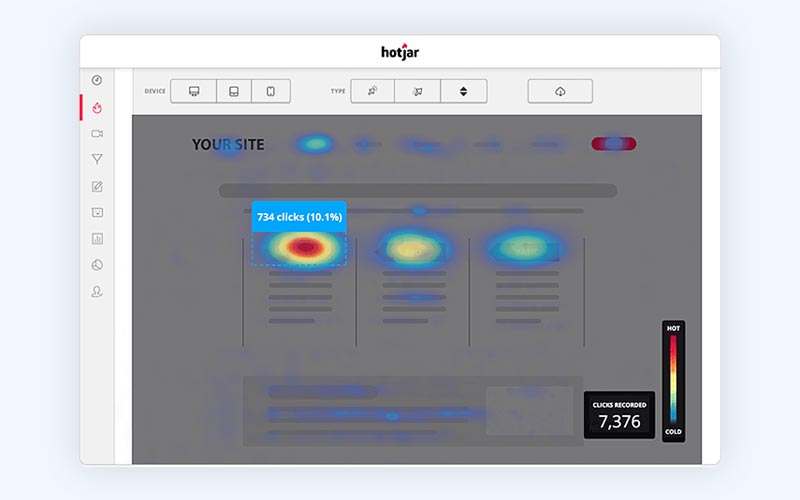
Another key metric is cart abandonment. Find out how many customers make it to check out but leave before completing the purchase. E-merchants can track cart abandonment and automate emails, SMS, and Funnels to bring customers back to complete the purchase.
Similarly, e-merchants can gather data by simply speaking with customers. Conduct surveys and encourage customers to write testimonials or reviews. Read through customer queries and analyze their conversations with support services.
When measuring data, look out for patterns. Where are customers dropping off? Which pages do customers visit most, and in what order? Which pathways lead to the most sales?
E-merchants need to understand these patterns of user behavior before they can optimize an e-commerce customer journey.

A touchpoint is any time a customer or prospect comes into contact with a brand.
E-merchants need to make a list of every possible way a customer could interact with their brand. This list should include everything from seeing a social media ad to a search result, receiving a retargeting email, leaving a review, or speaking with customer support.
Divide the list into three categories - before, during, and after purchase. There will be a lot of crossover between the three categories.
At this stage, e-merchants will start seeing things from the customers' point of view.
We often see e-commerce customer journeys divided into three stages - awareness, consideration, and decision.
However, what about after the purchase? Repeat purchasing, positive customer reviews, and social proof are all essential to e-commerce success.
Because of this, e-merchants should divide a customer journey map into five stages:
Consideration
For each of the five stages, identify the key touch-points and the customer’s emotions, goals, and needs. Then, establish the brand's goal and actions to take at each stage.
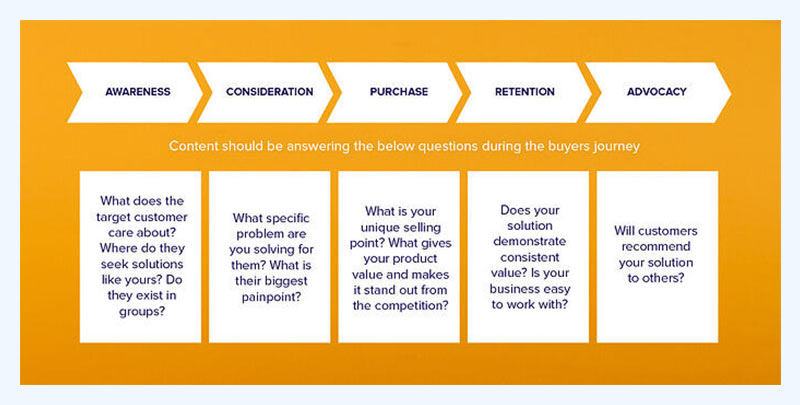
Let's examine each stage of the journey in more detail.
In the awareness stage, customers are just finding out who a brand is and what they represent.
They may have discovered the brand passively through an advertisement, social media or blog post, or actively through organic search.
Therefore, at this stage, the goal of an e-merchant is educating, answering questions, and establishing expertise on the relevant subject matter.
E-merchants need to gain the trust of potential customers, generate some interest, and convince them to find out more.
In this stage, a brand has sparked the customers interest. They’re considering a specific product, but they may be weighing up different options and looking at similar products on competitor’s sites.
Potential customers might do research outside of the pre-defined customer journey, and look at things like social media pages and customer reviews. In this stage, e-merchants may have success in winning customers with a retargeting ad.
At this stage, the primary goals for an e-merchant are to position their product as the perfect solution, explain its advantages, justify the price, keep customers interested, and win their trust.
Once the customer has decided to purchase, an e-merchant’s main goal is to remove any friction that might cause them to abandon their cart. Touch-points at this phase include the website checkout as well as social media, email, or telephone support.
Ensure that the checkout process is quick and simple with no blockers to purchase. If customers need to sign up for a membership or fill out unnecessary information at checkout they might give up and go elsewhere.
Customers may also have some final questions before they purchase, and brands that provide attentive customer service and help customers choose the right product stand a better chance of converting a sale.
Up to the last minute, e-merchants should re-emphasize their value proposition, reinforce customer’s decisions, and create a sense of urgency by showing limited availability.
Don't forget about customers after they've made a purchase. Repeat customers are vital for long-term e-commerce growth, so e-merchants need to work hard at retaining newly won customers .
Automatically enroll customers in a multi-channel post-purchase campaign and keep them engaged with regular emails and SMS messages.
E-merchants can ask customers for feedback, answer any questions they have, and send personalized offers relevant to their purchase. Build a community of loyal customers and keep them up to date on product releases, invite them to special sale events, and reward them with VIP deals.;
Social proof is an invaluable asset for e-merchants. Treat customers who go on to become brand advocates like the VIPs that they are.
Keep in touch with VIP customers via email and SMS campaigns. Ask VIP customers to join rewarding affiliate programs, give valuable brand feedback, and post about specific products or events on their social media sites.
Brands can even acquire testimonials from these loyal customers to publish on their website or blog.
Thank VIP customers for spreading brand awareness with exclusive offers and discounts and make sure they know their efforts are valued.
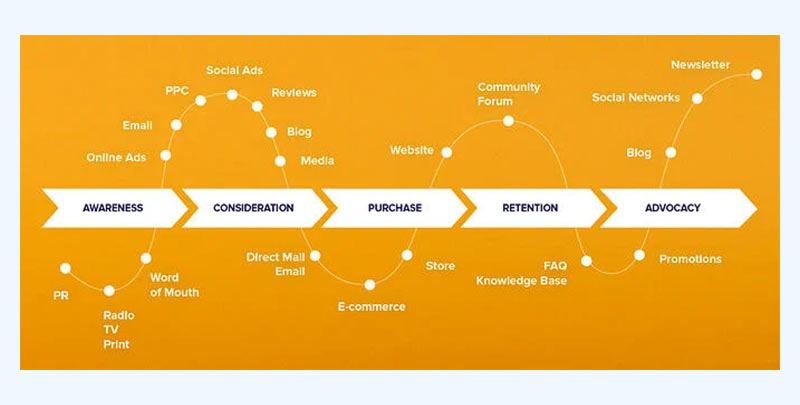
Step 5: Using an ecommerce customer journey map
An e-commerce customer journey map should help e-merchants answer the following questions:
- How do customers discover your product?
- What research do customers do before making a purchase?
- What "moments of truth" lead to sales or abandonment?
- Do customers consider any of your competitors?
- Do customers have a positive experience on your site?
- How could you improve the experience?
- At what stage in the journey are you losing customers?
The map should tell e-commerce store owners where they need to invest more time and resources.
For example, if people are leaving an online store after waiting too long for a response from customer service, invest time and effort into supplying 5-star support.
If visitors aren't reading through product descriptions, try simplifying them.
If potential customers leave because of unexpected shipping costs, reduce them, or make them clear upfront.
Although it may seem like a long and complicated process, mapping out a detailed e-commerce customer journey is absolutely worth it.
As a result, e-merchants will be able to streamline and optimize the customer’s journey to purchase and beyond.
Throughout the process, e-merchants will learn to empathize with website visitors and adopt a more customer-focused mentality. Furthermore, they will know where to invest the most time and money to get results.
Recommended Articles:
Win-back campaigns: why you need them & 6 tips for success.

8 Effective ways to drive repeat purchases
Best magento extensions for e-commerce growth in 2021, subscribe to our newsletter.
We hate spam. You’ll only receive essential emails.
Submit a Comment

How to Map and Improve the Ecommerce Customer Journey
Jimmy rodriguez, october 8, 2020.
Print version
The glossary of amazon listing errors.
Want to save this for later? Download a PDF of this blog for easy reference later on.
When it comes to increasing conversions and reaching more customers online, are you at a loss for finding the right fix?
Today, there are numerous ways that buyers can find your brand. At the same time, there’s no shortage of competitors or distractions pulling visitors away from your business; it can be difficult to understand when, where or why a potential sale gets lost.
Luckily, there’s a way to understand exactly how your customers experience your brand: the ecommerce customer journey. By studying the path customers take to find your brand, you can better understand where they fall off track.
Read on to learn proven tips and tricks for understanding your customer's journey, both before and after making a purchase. As you’ll see, there isn't a clear line from discovery to conversion. However, with the right tools in your back pocket, you can take the steps you need to earn more leads and generate more purchases.
What Is the Ecommerce Customer Journey?
The customer journey map is a visual representation of any interactions your customers have with your brand. Consider all touchpoints like social media, email communications, chats or others. You’ll want to understand how many times your customers see your business and which tools draw them to your website or product listing, even before they make a transaction.
This process of stepping into your customers’ shoes and thinking about what they like or dislike will save you time and money in the long run. For example, if your target audience doesn't exist on specific markets like Facebook or Instagram, why waste resources advertising or cross-selling on those channels? Beyond this, there are a number of other ways that a journey map can benefit your business.
Why Is Customer Journey Mapping Important?
A useful customer journey map will help you to:
- Optimize the onboarding process for new customers
- Track your customer experiences and understand where buyers run into issues
- Understand which customers convert and which move on
- Monitor your prospects as they navigate through the sales funnel
- Create a strategic order to their journey
The ultimate goal is to understand the ecommerce buyer personas that exist today, find your target audience and learn how to make your advertising and multichannel strategies more effective. Don't be afraid to hone in on various personas and try different outreach methods to find your perfect fit!
The 4 Main Stages of the Ecommerce Customer Journey
As with any excellent business strategy, the customer journey is best tackled in stages. Breaking things down into workable chunks makes the process of updating your ecommerce strategy less overwhelming and easier to tackle. This stages-based ecommerce planning strategy will ease the process. In the following sections, we’ll explore how it can specifically help to improve your brand’s website.

1. The "Reach" Stage
At this stage, your consumers are just getting to know your business. They may have found your website on Google or stumbled across your Instagram ad for the first time. In either case, your business has just overcome its first hurdle and successfully put itself on your consumers’ map.
Keep in mind that if your site traffic is poor or failing to grow, that might be a sign that your brand is struggling to even get to this point. In that instance, you’ll want to try implementing the below steps.
- Promote your site on social media
- Utilize SEO strategies
- Make sure your site is mobile-friendly
- Publish regular content focused on attracting customers
- Consider cross-selling your products on third-party channels, like Amazon or Walmart Marketplace, where an audience already exists
- Test various ad platforms
- Incentivize existing customers to spread the word about your brand
2. The "Engagement" Stage
This is the point when your consumers are interacting with your brand. They may not have transacted yet, but they’re at least aware of your brand and are able to associate certain products and benefits with it.
You know you’re struggling with this stage if you’re experiencing high bounce rates , visitors who aren't navigating or spending much time on your site, fewer people "adding to cart" or complaints of slow load times. To overcome these issues, you can focus on:
- Increasing page loading speeds
- Review your site layout to encourage exploration
- Creating eye-catching content to generate leads
- Utilizing AI chatbots to start conversations
- Offering extra information to encourage them to buy
- Retargeting visitors on social media or other third-party channels
3. The "Conversion" Stage
Alas, this is when your contacts finally convert into customers. You’ve built enough confidence around your brand to earn their business, and can (hopefully) look forward to a second, third or fourth purchase.
If you've been experiencing lower conversion rates, increased abandoned shopping carts, or lower average order values, you're experiencing issues in the conversion stage.
Many factors play into issues here, but the most common fixes are:
- Making the shopping experience more enticing
- Offering better pricing or discount strategies
- Simplifying the checkout process
- Providing accurate shipping costs
- Finding ways to save your customers time
4. The "Nurturing" Stage
Now, you’re looking to turn first-time customers into repeat or lifetime customers. After all, it’s much easier to keep a customer than it is to acquire one, so it’s paramount that you keep the relationship going strong.
Do you feel like your customers never seem to return to you for future business? Are you getting several "guest" checkouts, low customer satisfaction or little-to-no referrals? If you fail to nurture relationships with your customers after converting, you're probably struggling in this stage.
Encourage your customers to come back by:
- Staying in contact with them via emails, social and other channels
- Offering a loyalty program and asking them to register with you
- Raising your average order value through kits, bundles or other incentives
- Interacting with unsatisfied customers and solving their issues
- Offering benefits for referrals

5 Key Steps for Improving the Customer Journey
The customer journey map gives you a starting point for understanding what needs improving and how in the customer experience. As you’re going through this exercise, remember to pay attention to these five things.
1. Identify Your Customer
When you start building out your customer's ecommerce journey, create a unique customer persona so that you know who you're speaking to and can cater all of your campaigns to that targeted audience. Study trends and monitor your bounce rates to make sure the audiences you're reaching are genuinely interested in what you have to offer.
2. Break Down Your Customer Journey Map Into Stages
Think of the stages previously mentioned as the skeletal system of your customer journey map. When you consider all the stages your customers go through when they visit your site or product listing, you'll be able to visualize their interactions better and understand how they may react along the way. Find ways to mitigate potential confusion or frustration, with the goal of making every customer’s time with you enjoyable.
3. Create Actionable Touchpoints
Now that you've built out stages in your journey map, establish what actions you expect your customers to take. Pay special attention to how customers will interact with your content.
For instance, if you’re looking to improve your site, ask yourself, are you serving too many useless pop-ups? Is it too hard for customers to keep track of what pages they've already viewed? What can you do to keep them engaged on your site longer and follow through on their purchase?
4. Check Site Performance
When it comes to your site, you’ll want to make sure that the back end is just as optimized as the front end. Consider, are your visitors reporting issues like slow-loading pages, confusing site structure, low-resolution imagery or other common problems? Address these issues quickly and keep your site up to date with the latest algorithm changes on Google. Create a site that’s in a position to rank highly on search engines and can deliver a smooth customer experience 24/7.
5. Be Proactive With Your Customer Engagement
Ecommerce businesses often lose out on customer interactions because the personalities are hidden behind a screen, but you can still create a relationship with your customers. One of the quickest ways to lose a customer is by failing to answer their questions or help them out when they're in need.
Customer service is just as crucial in ecommerce as it is with brick-and-mortar businesses . Addressing issues as they arise and letting your customers know you care will make them much more likely to choose you.
In Summary
The best way to start improving your ecommerce customer journey is by taking some time to create a baseline for what your buyers are currently experiencing. Which of your digital efforts or marketing campaigns are driving the most traffic? How do conversions look in comparison to that traffic, and at one point do buyers either drop off or complete their purchases?
Next, identify which customers you want to continue to reach and nurture these relationships. As you dig into your audience, create a persona based on their demographics, lifestyles and shopping behaviors that can guide your messaging or marketing efforts.
Finally, work through your website (and other ecommerce properties) with a fine-toothed comb to make sure everything functions as expected. Look at your site or listings as a customer would see it, and correct any issues that interrupt their experience. Also, monitor for algorithm updates to ensure that there aren't any new factors that could affect your ranking.
With the right strategy in place, your ecommerce properties can function effectively again! And most importantly, you can keep your customers happy and your brand top-of-mind.
Let's Connect
Need Help with Multichannel?
Schedule time with a Zentail expert to see how we can transform your Ecommerce business.
Guest, Co-Founder and COO of 3dcart
More Blogs in
Navigating the target plus approval process - a 30,000 foot view.
Curious how to get approved to sell on the Target Plus Marketplace? This blog post will take you through the Target Plus Marketplace approval process for sellers, giving you a 30,000 foot overview to help you prepare in advance and know what to expect on your journey to sell on Target Plus.
How to Prepare your Business to Sell on the Target Plus Marketplace
For Amazon, Walmart, or Shopify sellers who are experiencing flat sales, expanding to marketplaces like Target Plus can mean a big boost to your GMV. This comprehensive guide will walk you through everything you need to know about how to sell on Target Plus.
Selling on Target Plus – Mastering the Art of Inclusive Merchandising
If you’re a seasoned Amazon, Walmart or Shopify seller, and considering diving into the Target Plus marketplace, having a clear grasp of Target's inclusivity merchandising requirements is a baseline necessity.
Built by online sellers who've been around the block, Zentail is today's premier multichannel marketplace automation platform. We help brands and authorized resellers expand to new marketplaces and experience zen in retail. See whether Zentail is right for you—reach out to our team today. Contact us: 888-366-8458
Subscribe to the The Checkout , Zentail's monthly newsletter for multichannel sellers!

Can't Wait To Speak With You!
Provide us with your email and we'll take it from there..

Create an e-commerce customer journey map with a free tool
Customer journey mapping in e-commerce is a diagram that illustrates the steps your customers go through in engaging with your online business. It starts when they first become aware of your products, to completing a purchase. It can extend to after-purchase care.
Buying and selling products on the internet is as popular as ever. There are many small and medium sized businesses entering online shopping space thanks to popular e-commerce sites like Shopify or BigCommerce. If they want to build up their market share and not lose out, they need to ensure smooth customer experience.
It all boils down to one thing—
Mapping e-commerce customer journey.
It lets you understand customer's complex interactions with your brand and meet their needs.
This article covers the following topics:
- Why journey mapping for our e-commerce is important?
- Creating an e-commerce journey map with examples
- Online shopping challenges and how to solve them
- Bonus: e-commerce journey template
Why is journey mapping in e-commerce important?
Designing a customer journey map in e-commerce is key to:
- Understand customer interactions across different touchpoints (ads, newsletter, T&Cs, customer support, and many more)
- Identify customer's pain points
- Improve satisfaction scores and increase the number of returnig customers
- Improve existing operations based on concrete data
- Identify potential new target groups
- Strategize how to reach customers in the future
Sounds good?
Let's see where to start!
How to create an e-commerce customer journey map?
At Smaply, we know the ropes of making customer journey map . So even if you have never done this before, we'll guide you through the process. You can even use Smaply's free customer journey mapping software with our tips and tricks to speed the process up.
1. Empathize with customer personas
There is no customer journey map without a customer. So you have to think about who our customer is—or should be to understand their needs and expectations.
The first step is to create a persona that represents this target group in a customer-centric way. Defining a persona in e-commerce can help you answer some important questions:
- What does the user need/want?
- What channels and devices does the persona use in order to research products?
- How price-sensitive is the user?
- What are their concrete expectations about their online shopping experience?
- What products does the persona value?
By answering these questions, you can get a better understanding of your target group. The questions above are just examples. You could also include country specific questions or cultural differences. Just think about which information might be helpful for their e-commerce journey.
Check out the example profile of a persona in a customer journey map for an online shop.

Keep in mind that when you run an online shop, you should also examine potential customers or leads.
2. Define the scope of the e-commerce journey map
When creating a journey map, you can choose between various scales and scopes.
When you start out, we recommend that you use a high-level journey map to visualize the whole experience the user has with your brand. From finding to your e-commerce site, searching for the right product, the check-out process, and up until the product delivery.
Then, you can create a more detailed map to dive deeper into a specific step. For example, you might want to focus on the product search on your website through different category pages or the check-out funnel.
Many e-commerce shops lose customers during the check-out process. It might be useful to investigate this step. Is the process intuitive? Or is it confusing for customers?
3. Analyze experiences, step by step, stage by stage
Now, we have to map down the user’s journey.
Every e-commerce journey map consists of several stages and steps:

Once we’ve defined the stages, think about the different steps and touchpoints customers experience when they are interacting with your online shop. The level of detail of each step depends on the overall scale of the map that we’ve defined above. Ask yourself:
- What are the steps within each stage?
- What are the customers’ goals and pain points at each step of the journey?
- What are your own business goals for each step?
- Where do your current customers drop out of the journey, leave our website?
- Do they get the right information at the right time?

There's one important thing to keep in mind at this point—
The customer journey starts before users get to our website. It starts with a need, a desire for a more or less specific product. Also, the customer's e-commerce journey does't end at the checkout. Nor when users hold the product in their hands.
Customers experience and interact with your brand after completing the online purchase. For example, when contacting support, returning to your shop, or recommending the brand to their social network.
5. Visualizing processes
This is an often neglected step in mapping e-commerce journeys.
You can also focus on the backstage activities happening during the journey. What needs to happen behind the scene, outside of the customers’ view to deliver a smooth experience? Close to a service blueprint, visualizing different levels of processes helps webiste owners better understand who’s involved at what step of an experience and who is responsible for their optimization.
In the below map you can see a strong focus on enabling processes could look like.

For comprehensive and complex journey maps with advanced lane and content types like those above, use a digital customer journey mapping software .
Examples of journey maps in e-commerce
This simple e-commerce journey map illustrates the steps of two different personas and compares their experience. It visualizes:
- Channels they use
- Their emotions
- Involvement (dramatic arc)
- Ideas for improvement
- Backstage lane that provides a rough idea of the processes that are invisible to the customer
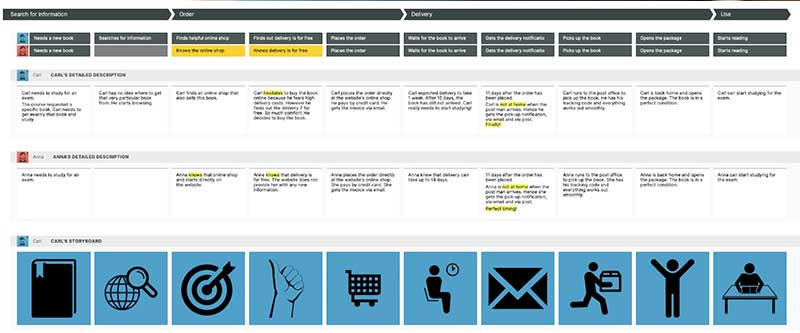
This example of online shopping experience map shows a strong focus on backstage processes. It clearly differentiates between processes that are visible to the customers, and processes that aren’t. Hence, it gets very close to a service blueprint.
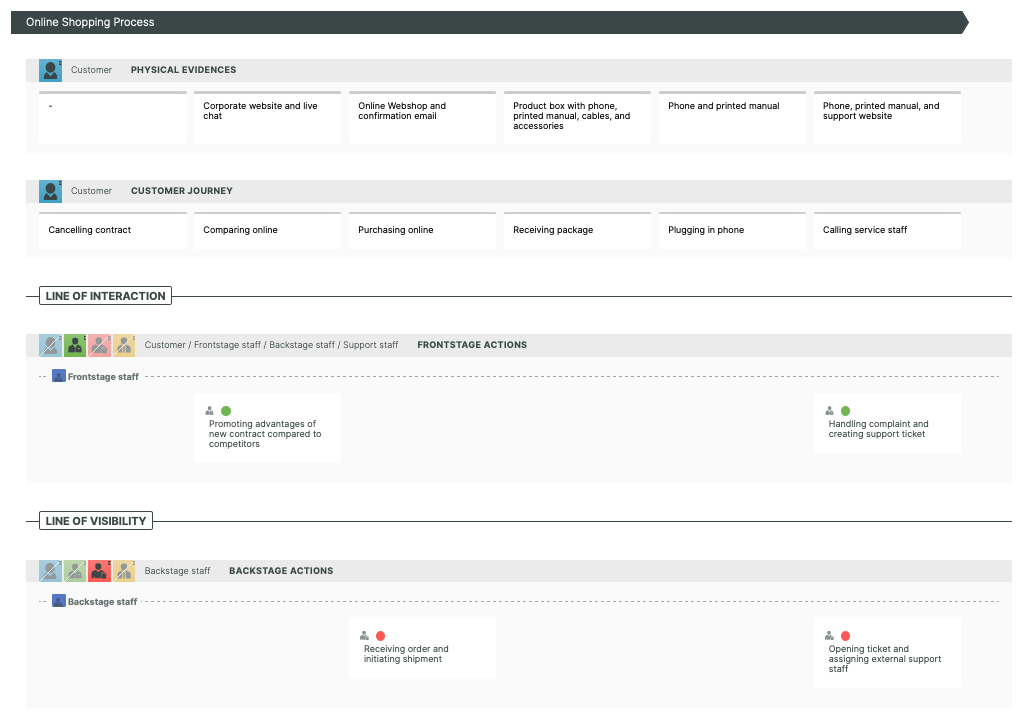
What are the challenges of mapping journeys in e-commerce?
Getting lost in all the data.
In e-commerce, it is common to collect loads of data about users, their preferences, purchase history, and needs. It can be extremely useful and help get a better and more holistic understanding of your customers. However, using all this data too early in the process of mapping e-commerce journeys can prevent you from understanding of the big picture.
Quantitative data (e.g., from Google Analytics) is a good resource for sure, but remember to look at qualitative data, too. For example, try to interview some of your customers after the purchase or send them a customer survey to get some qualitative insights.
The good thing about qualitative data is that it helps us find the biggest pain points easily. If there’s a hole in the street and three pedestrians point to it, we don’t need another 10 folks to confirm this, right?
Also, quantitative data will never give you an answer to the “why”:
- Why did users visit your page?
- Why did they buy from your site, and not another?
- Why did they abandon the cart?
Some more questions that could be interesting to dive into are:
- How did they research the product in the first place?
- What online and offline channels did they use?
- How do they evaluate the experience on our website?
- How do our users think your page could be improved?
Consider context and think cross-channel
Many different channels influence the e-commerce journey: website, shopping app, review portals and word of mouth…
Even though a big part of a service is being used in an online context, it does not mean customers don’t have any offline experiences. Consider physical context and direct, personal interaction! Is your online shop accessible to everyone? What do customer reviews tell others about your customer service? This is something you will learn from Google Analytics!

Empty template for an e-commerce journey map
It’s time to create your own journey map!
Download this set of paper templates , or start creating digital journey maps with Smaply !
Create user-focused journey maps to understand the user experience and innovate your services. Smaply lets you easily create e-commerce journey maps, personas, and ecosystem maps with an in-app template.
Sign up now, it's free!

Antonia Cramer
Antonia keeps her eyes open for questions people interested in service design are looking to answer, and helps us provide resources to support their learning ambitions. With her background in digital communication she has great knowledge on how to create content that is easy to access and understand.
Related articles

The basics of customer journey mapping

Case study: recruiting truck drivers
Sign up for the Smaply newsletter and get inspiring news about CX management, industry insights, learning resources and much more.
Explore. Learn. Thrive. Fastlane Media Network

- OUR MISSION
- WRITE FOR US
- MEDIA & PRESS
- SPONSORSHIP
- AI Commerce
- DROPSHIPPING
- Print On Demand
- SHOPIFY PLUS
- BIG COMMERCE
- WOO COMMERCE
- COMMERCE TOOLS
- SQUARESPACE
- ADOBE COMMERCE
- SALESFORCE COMMERCE CLOUD
- ECOMMERCE SEO
- SOCIAL MEDIA MARKETING
- CONTENT MARKETING
- EMAIL MARKETING
- SMS MARKETING
- PUSH NOTIFICATIONS
- AI CHAT BOTS
- INFLUENCER MARKETING
- LOYALTY MARKETING
- RETENTION MARKETING
- COLLABORATIONS
- EVENT MARKETING
- Referral Marketing
- Video Marketing
- Community Building
- BRANDING & DESIGN
- PUBLIC RELATIONS
- CUSTOMER EXPERIENCE (CX)
- User Generated Content (UGC)
- Conversion Rate Optimization (CRO)
- SEARCH ENGINE OPTIMIZATION (SEO)
- CLOUD COMPUTING
- CYBERSECURITY
- EMERGING TRENDS
- BUSINESS INTELLIGENCE
- AGRICULTURE
- FASHION & APPAREL
- ELECTRONICS
- INVENTORY MANAGEMENT
- SUPPLY CHAIN
- DATA ANALYTICS
- DEVELOPMENT
- CUSTOMER SUPPORT
- BRICK + MORTAR
- BUSINESS LAW
- HUMAN RESOURCES
- SUSTAINABILITY
- Payment Processing
- Return Management
- TAX PLANNING & FILING
- FUNDRAISING
- MERGERS & ACQUISITIONS
- Budgeting and Forecasting
- Cash Flow Management
- Pricing Strategies
- Financial Analytics and Reporting
- ONLINE SURVEYS
- FREELANCING
- CONTENT CREATOR
- COACHING & TUTORING
- DIGITAL PRODUCTS
- AFFILIATE MARKETING
- SOCIAL MEDIA INFLUENCER
- Online Courses
- Virtual Assisting
- Stock Photography
- Gaming and eSports
- Entrepreneurship
- LATEST NEWS
- SHOPIFY INSIGHTS
- SHOPIFY RETAIL
- SHOPIFY DEVELOPER
- SHOPIFY PARTNERS
- ECOMMERCE FASTLANE
- ECOSYSTEM PODCASTS
- APP PARTNERS
- PARTNER WITH US
- WRITE A GUEST POST
- SPONSOR THE PODCAST
- BE A PODCAST GUEST
- HOMEPAGE+PARTNER PORTAL
Popular Topics
- ecommerce marketing
- email marketing
- shopify plus
Trending Now View All

Unlocking The Potential Of Walmart Marketplace: Updated Review (2024)

How To Evaluate The Worth Of An eCommerce Business 2024

10+ Best Wholesale Suppliers In The USA For 2024

The Next Big Digital Marketing Trends For 2024
How to create a customer journey in ecommerce (with examples).

Table of Contents
The rapid acceleration of ecommerce means the traditional customer journey is no longer linear. There are several micro-decisions that customers face between interacting with your brand for the first time and becoming repeat customers . It’s your responsibility to cater to them with personalized marketing messages and product recommendations.
As the Stages of Change Model told us in Customer Psychology in Ecommerce: Behavior Change in the Digital Age , one slip up from an external force can cause a person to either progress or regress in their journey. The wrong message at the wrong time can force people to flee. On the other hand, matching your offer to the right stage with a small personal touch works like magic.
What happens when thousands of people leave and enter your pipeline each day? Ecommerce customer journey maps keep tabs on them, providing customers with the information they need to progress through the sales funnel. This guide shares how to create one.
What is the ecommerce customer journey?
The customer journey stages, what is a customer journey map, 3 steps to map customer journeys with data.
- Ecommerce customer journey FAQ
The ecommerce customer journey refers to the path consumers take to purchase a product, as well as their experience post-purchase. Customer journeys aren’t linear and don’t have a set number of steps.
Consideration
Acquisition.
Diagram showing the five layers of an ecommerce customer journey.
Awareness is the first stage in any ecommerce customer journey. It starts when a customer’s interest is piqued, or they’re already looking for a product or service to solve a problem they’re currently experiencing. Common customer touchpoints at this stage include social media advertising or word-of-mouth referrals from existing customers.
A person’s commitment to find a solution increases as they progress through to the consideration stage of the customer journey. Here, they weigh their options and visit your online store—as well any competing brands that might better serve their needs.
A customer reaches the acquisition stage once they make the final purchasing decision. This can happen via your ecommerce store, a marketplace, at a retail location, or through a social media storefront.
The ecommerce customer journey doesn’t end once a customer has made their first purchase. Inevitably, a segment of customers will need help with their order. Perhaps they want to initiate a return, understand how the product works, or see whether there’s a discount available on their next order. We can categorize this as the service stage of the customer journey.
Loyalty happens when existing customers continue purchasing from your brand. It’s the final stage of the journey, but not the least important. Studies show that despite only accounting for 21% of a brand’s audience, loyal customers contribute 44% of a merchant’s total revenue.
Aside from initiating another purchase and springing back to an earlier stage in the journey, customer touchpoints that frequently happen at the loyalty stage include leaving a review or recommending the product to a friend.
An ecommerce customer journey map is a diagram that details how customers engage with your company across various mediums including online, retail, and contact with your customer support team. They tell you where users are coming from, how many days or visits it takes to move from one stage to another, what the goal of the user is in each stage, and how each segment behaves.
Example of a customer journey map.
While customer experience management is on the top of every C-suite executive’s list, the reality is, designing a robust omnichannel retailing strategy and managing the customer’s experience within the entire customer lifecycle is virtually impossible.
Instead, a far better approach is to identify your most valuable customers (i.e., personas) and map their journeys one stage at a time.
Create customer personas to envision what your ideal customer might be going through when seeking your product. For a head start, identify recent customers or brand loyalty program members who made a purchase on your website. Interview them to understand the following questions:
- Why were they looking for the product that they bought on your website?
- How did they research the product?
- What criteria helped them make their purchase decision?
- Which of your competitors’ sites did they visit while evaluating products?
- Why did they choose your website?
- What was their experience like on your website when buying the product?
- What can be improved?
Start small and prioritize the most critical customer personas for your business. The real key, however, is using your existing data to map the ecommerce customer journey based on psychological principles to drive more sales.
1. Monitor how customers interact with your ecommerce business
Understanding how users move through your store is critical to producing sales that follow a psychologically informed model. For example, why would sales be low if you’re offering a discount code to all first-time visitors? The offer (or, ability ) might be great, but consumers still lack the motivation to buy. In this case, it doesn’t matter how much products are discounted.
This common scenario can be uncovered with the Google Analytics funnel exploration report , which will allow you to select a path you’d like to look into. Or the path exploration report , which gives you a look into your user’s journey.
Just make sure to examine different segments of users, whether it’s first-time visitors, returning visitors , or purchasers, or create a custom segment for visitors with long session durations but no purchases.
Touchpoints a customer has with a brand, starting with ads and social media and ending with newsletters.
Look for trends, like specific drop-off points where hoards of users left your site without converting. Conversely, look for commonalities between behavior. What page do most first-time visitors view after landing on your homepage? In the first stage of an ecommerce customer journey map, you will start to notice that most of these first-touch pages revolve around building awareness before driving conversions.
You can also install Session Recording & Replays on your Shopify Plus store to record visitor sessions. You’ll get heat maps and also be able to see user behavior as they move from page to page.
Detailed session histories can generate ideas of which pages correspond to each stage of the journey. For instance, your blog or story pages are often perfect jumping-off points to educate users. Hiya Health uses its story page to build awareness, leveraging it as an external force to push consumers from one stage to the next.
Hiya Health’s about page explaining how the brand started when its founders were shocked about the contents of children’s vitamins.
2. Analyze the top conversion path report to see what platforms people use at each stage
An omnichannel strategy or multichannel strategy is critical because ready-made buyers don’t just materialize on your website. It often requires multiple touchpoints along multiple channels or platforms before they eventually pull the trigger.
People might find your business through a referral on social media. They might read your tweets or browse your Instagram. Then, they might head back to your site for more—all before handing over their credit card. As a result, it’s also more critical than ever to optimize people’s experience as they move from one platform to the next.
Knowing the typical paths on your site is one thing, but it’s another to understand when and why customers use different channels before buying.
Note these different channels and their specific order sequencing before purchase. If you notice that social plays a huge role in awareness, add that to your buyer’s journey. You can later tap into this customer data and share content on social that focuses on brand building rather than selling, like Rare Beauty :
Screenshot of an Instagram post by Rare Beauty. Source: Instagram
LaCkore Couture takes this one step further by prioritizing two metrics: average order value (AOV) and customer lifetime value (CLV). Founder Erin LaCkore says, “We primarily use Triple Whale to gather in-depth insights about our customer behavior and purchasing patterns. Complementing this, Google Analytics lets us understand traffic sources, time spent on our site, and other key metrics. All this data is visualized and simplified in Google Data Studio, allowing our team to draw actionable insights at a glance.”
Erin adds that by using a combination of these data points she gets a snapshot of the average spend each time a customer shops and the total projected revenue from a single customer over their relationship with the brand. “Based on AOV and CLV, we adjust our value ladder,” she says. “Introducing mid-tier products, bundle offers, or loyalty programs ensures customers feel they’re getting immense value, while we ensure profitability.”
If you’re a Shopify Plus merchant, you can access our custom Google Data Studio reports in our Data Analysis course to help you find your metrics that lead to a sale. There you can see how many sessions the average user undertakes before making a purchase, and how many days it takes on average to make a purchase. You can further segment this by demographics or traffic source.
3. Mold your customer journey to the needs of your visitors
The decision to purchase ultimately comes down to one major thing: your relationship with your customers. Again, this means understanding consumer psychology and building a strong relationship by providing value at each stage of their journey.
Customer data analysis will help you uncover what your customer cares most about. Then it’s your job to serve them the content, products, and offers in line with their desires. If prospective customers aren’t ready to buy, they won’t. And even if they are motivated, the wrong trigger or ability could limit their potential to slide down your funnel.
“We create customer personas and journey maps to understand our customers’ needs, pain points, motivations, and goals at each stage,” says Kate Ross, PR Specialist for Irresistible Me . “This helps us create personalized and relevant content, offers, and interactions that match their expectations and preferences.”
Only after customer journey mapping can you then test different types of content and offers at each stage. For example, test a storytelling email versus an offer as your email autoresponder when someone first signs up. Or, try split testing your remarketing campaigns with blog posts, About Us videos, and offers.
Similarly, perhaps your retention strategy would be more effective if you had a weekly storytelling email with a softer call to action or vice versa.
Apps like StoreView or Klaviyo can guide this testing. Personalization platforms like Nosto also integrate beautifully with Shopify Plus, allowing you to provide personalized shopping experiences based on previous touchpoints at scale—no manual data entry required.
Nosto’s content personalization platform that adapts a website’s messaging, visuals, and layout for each individual shopper.
Wendy Wang, owner of F&J Outdoors , also recommends looking for pain points throughout the customer journey that can act as low-hanging fruit for conversion gains. “Perhaps it’s a cumbersome checkout process, lack of clear product information, or slower delivery times,” she says. “Identifying such stages in the journey allows us to iteratively make enhancements to our end-to-end process, with a clear goal of optimal customer satisfaction.”
Monitor your customer journey to anticipate—and resolve—customer needs
Buying has never been more complex because there’s never been this number of ecommerce platforms, channels, options, alternatives, or competitors.
If you want to grow your business, take a deep look at your customer personas and their journey. Customer journey maps should be adjusted on a monthly or quarterly basis to answer the question “How can we add more value to our visitors at each step of this journey?” or “How can we help customers at each stage achieve their goals more easily?”
The trick to dominating a market isn’t just clever advertising but rather a habit of continuously deepening your understanding of your customer and striving to add more value to their lives. Attention and sales are a side effect of doing this well.
At the end of the day, the brand that can motivate the market most will win.
How do you analyze the customer journey?
There are two main ways to analyze your customer’s journey: a quantitative approach and a qualitative approach. The former involves looking at your analytics to determine what steps your customers took before purchase, while the latter involves customer interviews.
What is a customer journey touchpoint?
A customer touchpoint is any point in which your customer engages with your brand. Touchpoints can be online, like viewing your product reviews, or offline, like visiting your store. You can create customer journey maps based on the information you collect.
What is the customer journey map?
A customer journey map is the result of analyzing and diagramming the steps your customers go through pre- and post-purchase. It’s broken down into five stages: awareness, consideration, acquisition, service, and brand loyalty.
Why is a customer journey map important?
A customer journey map increases in importance relative to the number of touchpoints and complexity you introduce to the customer journey. With one, ecommerce businesses can proactively identify customer needs and provide them with information that helps them progress to the next stage—ultimately becoming a loyal customer.
What makes a good customer journey map?
A good customer journey map tells you where your customers come from, how many days or visits it takes to move them from one stage of awareness to the next, and how each segment behaves. It also details which order the sequence tends to fall into.

Ecommerce Shipping: Creating A Shipping And Fulfillment Strategy

How To Make Money On Instagram In 2023 (9 Actionable Ideas)
You may also like.

How To Turn Retail Store Success Into Ecommerce Sales

10 Moments In “Born For Business” That Had Us Rooting For Entrepreneurship

How Shopify Checkout’s Built-In Accessibility Can Increase Conversion

How To Build A Personal Brand In 2023: 8 Simple Steps
- All Marketing
- Content Marketing
- Email Marketing
- Social Media
- Influencers & Affiliates
- Keyword Research
- Link Building
- On-page SEO
- Technical SEO
- All Conversion
- Analytics & Data
- Customer Retention
- Customer Service
- Photography & Video
- Product Pages
- Checkout Tactics
- All Business
- Amazon & Marketplaces
- Shipping & Fulfillment
- Local Business
- Fraud Prevention
- Cross-border Selling
- All Design & Development
- Design & Dev Tools
- Platforms & Apps
- Schools & Resources
- Typography & Fonts
- User Experience
- “Ecommerce Conversations” Podcast
- Advertising >
- How to Start an Ecommerce Business
- Web Marketing Checklist
- Influencer Marketing
- Product Photography
- Credit Card Processing FAQs
- Editorial Policy
- Email Newsletter Signup
- Logos and Brand Guide
- Conditions of Use
- Privacy Policy
- RSS Summary
- Design & Dev

How to Map a Customer Journey
April 25, 2023 • armando roggio.
An ecommerce customer journey map shows the path of buyers leading to an online purchase. Analyzing those journeys helps merchants understand how shoppers find the site, what they do on it, and what they want to achieve at each step.
Imagine a visitor to an online store looking for a new pair of shoes. The journey map would show everything he does — searching for shoes, reading reviews, adding a pair of Nikes to the cart, and checking out. The map might also show the shopper’s emotional state at each step or phase, such as excitement when he finds the perfect running shoes or frustration if the website is confusing.
Creating this sort of map — often on a spreadsheet — helps ecommerce marketers discover what makes customers happy and what problems they face while shopping. It’s an opportunity to improve the buying experience and thus generate more conversions.
To build an ecommerce customer journey map, start with four regions:
- Before the purchase,
- During the purchase,
- After the purchase,
- Reengagement.
Create these regions on a spreadsheet or a specialized tool such as Figma. Under each region, add the stages a shopper might go through.

Four regions of a customer journey map are common for ecommerce businesses.
Next, consider the stages a shopper might go through for each region. These stages could differ for every business, but there are some commonalities.
In the “Before Purchase” region, a shopper likely:
- Discovers or recognizes a need,
- Becomes aware of the product,
- Researches and evaluates a product,
- Considers potential merchants.
Think through these steps and add them to your customer journey map.

In an ecommerce customer journey map, stages are under regions and represent the shopper’s mindset.
Touchpoints
Next, identify touchpoints in each stage of customers’ journeys. Example touchpoints include ads and content marketing. Some touchpoints are beyond a merchant’s control, such as medical devices from a physician’s diagnosis.
Touchpoints occur in various combinations and may be repeated. A prospect could see an ad before she realizes the need for the product.

Touchpoints are shoppers’ interactions with a company, its products, or its industry.
The Questions
In the context of each touchpoint, ask a series of questions about the shopper. Answering these questions should provide insights into improving the customer journey.
- What is the shopper doing?
- What is the shopper trying to accomplish?
- Where is the action taking place?
- What is the shopper thinking or feeling?
- How will we move the buyer along the journey with our store or product in mind?
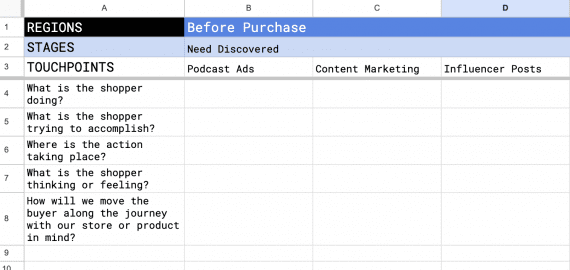
For each touchpoint, develop a series of questions.
Let’s consider each of these questions in turn.
What is the shopper doing? At each touchpoint, consider shoppers’ actions. Is the shopper browsing products, reading reviews, interacting with ads, or watching a product demo video? From this behavior, identify the best ways to engage and improve the buying experience.
What is the shopper trying to accomplish? Think about the shopper’s motivations for each touchpoint. Is she trying to learn about a product, compare options, find the best deal, or obtain support? Understanding those objectives will help meet prospects’ needs and expectations.
Where is the action taking place? Identify where the touchpoint occurs, such as the online store, social media, email , or search engines. Knowing where the interaction takes place can help optimize the experience and ensure a consistent and seamless journey across channels.
What is the shopper thinking? At each touchpoint, consider the shopper’s thoughts. Is he excited about a new product, frustrated by a complicated checkout , or confused about a promotion? Understanding shoppers’ thoughts can identify pain points or negative emotions.
How will we move the buyer along the journey with our store or product in mind? For each touchpoint, think about how to guide the shopper to the next stage of the journey. This may involve providing helpful information, personalized recommendations, or exceptional customer support. Proactively addressing shoppers’ needs increases the likelihood of conversion and long-term loyalty.
Share this article:

- Design & Development
- Building an Ecommerce Business
Copyright © 2005 - 2024. Practical Ecommerce® is a registered trademark of Confluence Distribution, Inc.

Invest Issue
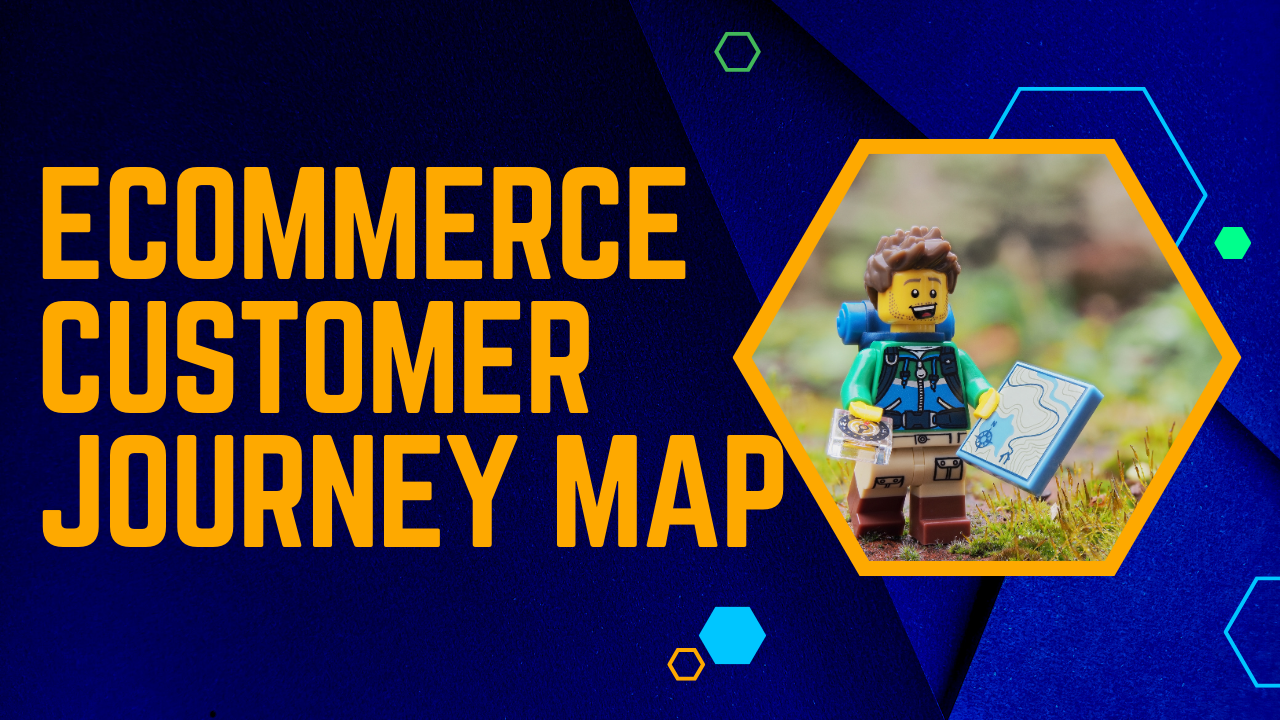
Ecommerce Customer Journey Map: The Ultimate Guide
In ecommerce, a customer journey map is a visual depiction of the various touch points a customer experiences throughout the buying process, including stages in the buyer’s journey, goals, and channels of interaction. The process of creating a successful ecommerce business doesn’t just happen by chance; it requires a thorough understanding of the customer journey.
A customer journey map for ecommerce is a strategic tool that businesses use to visualize and understand the path customers take from initial contact to purchase. It offers valuable insights into customer behavior, enabling companies to better meet their needs and improve the overall shopping experience.
By mapping out the customer journey, businesses can identify touchpoints, pain points, and opportunities for engagement, ultimately leading to increased sales and customer satisfaction. We’ll delve into the significance of ecommerce customer journey mapping and explore the various stages of the buyer’s journey in the ecommerce landscape.
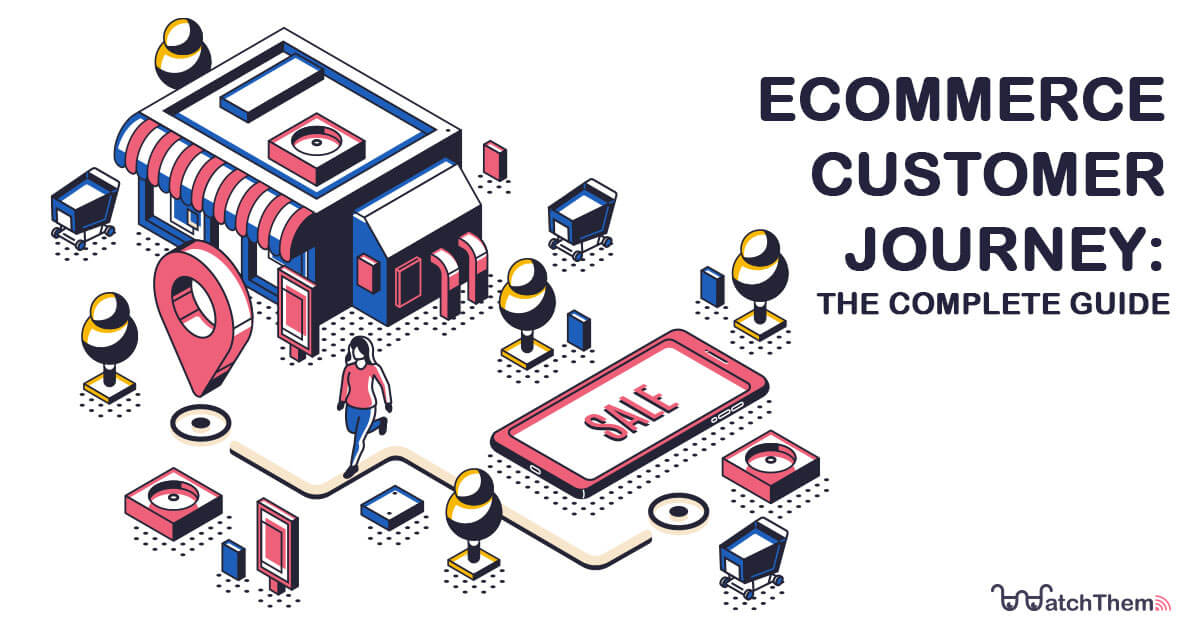
Credit: watchthem.live
Introduction To Ecommerce Customer Journey Maps
An ecommerce customer journey map serves as a visual representation of the different touchpoints a customer encounters throughout their buying process. It outlines the specific stages of the buyer’s journey, identifies customer goals, and highlights the channels through which customers interact with these touchpoints. Understanding and effectively mapping the customer journey is crucial for businesses aiming to optimize their online shopping experience and drive sales.
What Is A Customer Journey Map For Ecommerce?
An ecommerce customer journey map is a visual representation of the various touch points on a customer journey. This map will portray the stage of the buyer’s journey the customer is in, list the goals, and identify channels through which customers can come across that touch point.
The Importance Of Customer Journey Mapping
Customer journey mapping is essential as it provides valuable insights into the customer’s experience at every stage of the buying process. By understanding the customer’s perspective, businesses can identify pain points, areas for improvement, and opportunities to enhance the overall shopping experience. These insights help in tailoring marketing strategies, refining website design, and optimizing customer interactions to ultimately increase conversion rates and customer satisfaction.
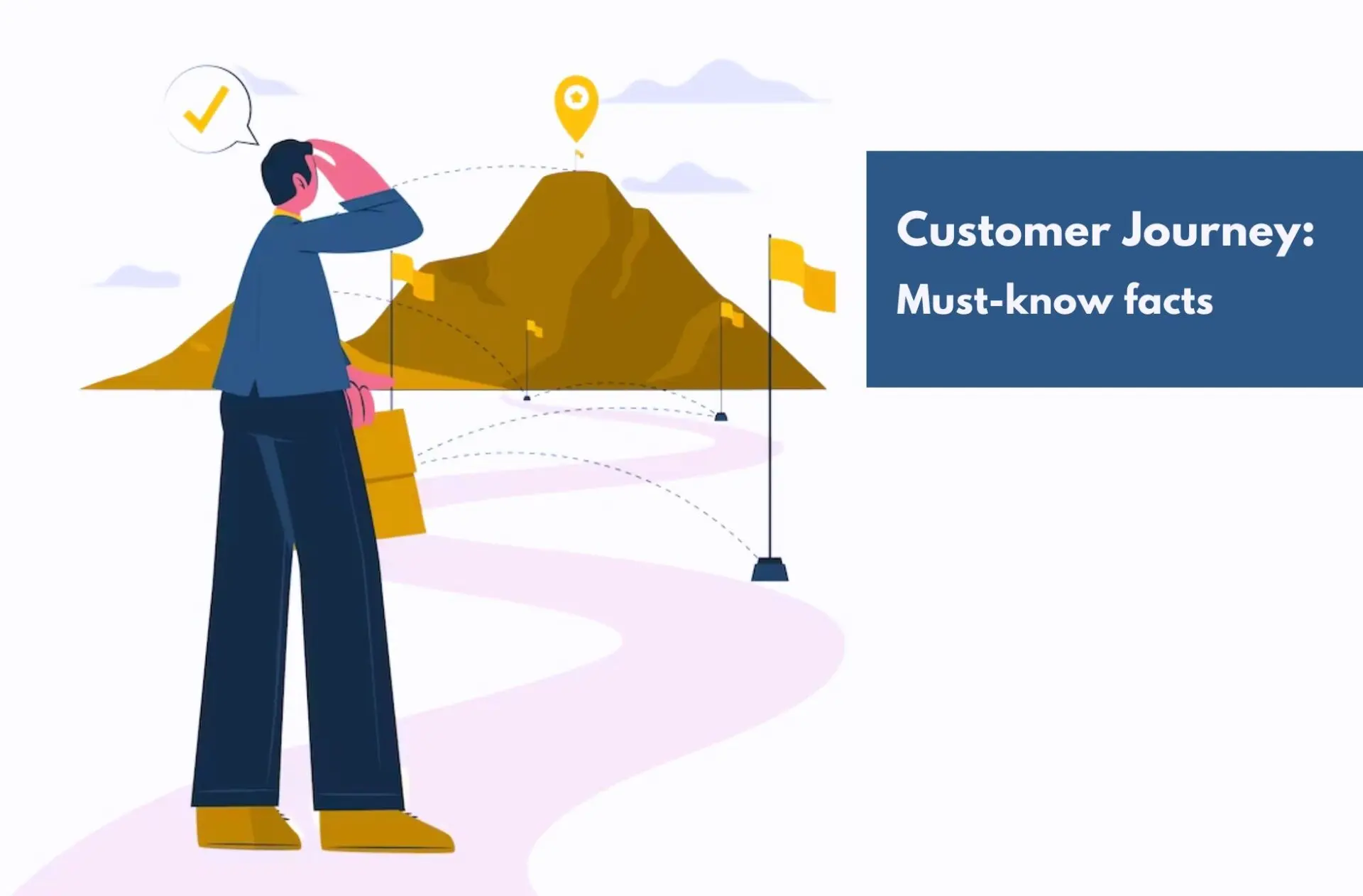
Credit: www.ecommerce-nation.com
Stages Of The Ecommerce Journey
In the realm of ecommerce, understanding the stages of the customer journey is paramount for creating effective marketing strategies and optimizing the overall shopping experience. By comprehending the different stages a customer goes through, businesses can tailor their approach to meet the specific needs and expectations of their audience, ultimately driving higher conversions and customer satisfaction.
When it comes to the ecommerce customer journey, it can be broken down into several distinct stages, each playing a crucial role in the overall purchase process:
- Discovery: This marks the beginning of the journey, where customers identify a need or desire for a product or service. They may become aware of a solution through various channels such as social media, search engines, or word-of-mouth.
- Evaluation: In this stage, customers actively research and compare different options, seeking out information on features, pricing, and reviews to make an informed decision.
- Purchase: Once a decision is made, the customer proceeds to the purchase stage, where they select the product and complete the transaction.
- Post-purchase: The journey doesn’t end after the purchase. Post-purchase engagement is vital for customer retention and advocacy, as businesses aim to deliver exceptional post-purchase experiences and encourage repeat business.
Understanding these stages allows ecommerce businesses to create targeted marketing initiatives, streamline the shopping process, and enhance customer satisfaction at every touchpoint.
Creating An Ecommerce Customer Journey Map
A customer journey map for ecommerce allows you to visually understand and analyze the touch points that customers encounter during their buying process. By mapping these stages and identifying customer goals, you can optimize channels and deliver a seamless shopping experience.
Using Existing Customer Data
Mapping touchpoints at every stage, creating user personas, benefits and examples of ecommerce customer journey maps.
An ecommerce customer journey map is a valuable tool for understanding and optimizing the entire customer experience on your ecommerce website. By mapping out the various touchpoints and stages of the buyer’s journey, you can identify opportunities for improvement, enhance brand experiences, and drive profitable sales funnels.
Creating Brand Experiences
One of the key benefits of ecommerce customer journey maps is the ability to create consistent and memorable brand experiences. By understanding the touchpoints at each stage of the customer journey, you can ensure that your brand messaging, visuals, and interactions are aligned with your brand identity.
For example, let’s say your ecommerce store sells sustainable fashion. By mapping out the customer journey, you can identify opportunities to highlight your brand’s commitment to sustainability, such as through personalized product recommendations based on eco-friendly preferences or educational content about the environmental impact of fast fashion.
By creating brand experiences that resonate with your target audience at every touchpoint, you can build brand loyalty, increase customer satisfaction, and differentiate your ecommerce business from the competition.
Driving Profitable Funnels
Another advantage of ecommerce customer journey maps is the ability to identify and optimize your sales funnels. By understanding the customer’s journey from initial awareness to making a purchase, you can pinpoint areas where you may be losing potential customers and make adjustments to improve conversion rates.
For instance, let’s say your customer journey map reveals that many customers drop off after adding items to their cart. By analyzing this data, you can identify possible barriers to completing the purchase, such as a lengthy checkout process or unexpected shipping costs. Making improvements in these areas can help reduce cart abandonment and increase overall revenue.
Additionally, customer journey maps can also highlight opportunities for upselling and cross-selling. By understanding the customer’s journey and preferences, you can strategically position relevant products or promotions to encourage additional purchases, ultimately driving higher average order values and increasing profitability.
Examples Of Successful Ecommerce Customer Journey Maps
Here are a few examples of successful ecommerce customer journey maps:
By leveraging these examples and templates, you can save time and ensure that your ecommerce customer journey map is comprehensive, visually appealing, and effectively contributes to your business goals.
Best Practices For Effective Ecommerce Customer Journey Maps
Ecommerce customer journey maps are vital for understanding and enhancing the customer experience. By visualizing the touchpoints and goals at each stage of the buyer’s journey, businesses can create effective marketing strategies and optimize the customer experience to drive sales and loyalty.
With customer journey maps, companies can identify opportunities for engagement and improve the overall online shopping experience.
Understanding Customer Interactions At All Stages
Identifying channels for customer engagement, continuously refining and updating the journey map.
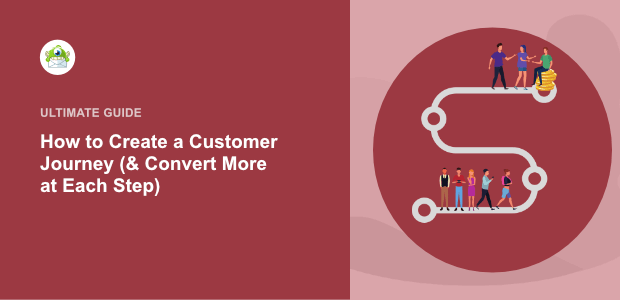
Credit: optinmonster.com
Frequently Asked Questions For Ecommerce Customer Journey Map
An ecommerce customer journey map is a visual representation of a customer’s touch points and goals throughout the buying process. It shows the stages of the buyer’s journey and the channels where customers interact. This map helps businesses understand and enhance the customer experience.
What Are The 7 Steps To Map The Customer Journey?
A customer journey map for ecommerce is a visual representation of a customer’s journey, including touchpoints and channels they encounter. The map depicts the buyer’s journey stage, goals, and the various touchpoints customers can engage with. By mapping the customer journey, businesses can optimize their strategies and create better brand experiences for customers.
What Are The Stages Of The Ecommerce Journey?
The stages of the ecommerce journey include discovering the need for a product, visiting the website, exploring reviews, contacting the business for store locations, and finally making a purchase. A customer journey map visualizes these stages and identifies touchpoints and channels for customers to interact with.
What Is The Buyer Journey In Ecommerce?
An ecommerce customer journey is the process a buyer goes through, starting from discovering a need for a product to making a purchase. It includes various touchpoints and channels that the customer encounters along the way. Customer journey mapping can help create brand experiences that lead to profitable funnels.
To create a successful ecommerce customer journey, it is crucial to have a clear understanding of the various touch points and stages that a customer goes through. Creating a customer journey map can help businesses identify the goals and channels that customers use to engage with their brand.
By visualizing this journey, businesses can create personalized and seamless experiences for their customers, leading to increased customer satisfaction and loyalty. Understanding the ecommerce customer journey is essential for businesses looking to optimize their marketing strategies and drive sales.
Leave a Comment Cancel reply
Save my name, email, and website in this browser for the next time I comment.
.png)
Improve your E-commerce Customer Journey using AI
Explore AI-powered e-commerce customer journey mapping, decoding stages, and crafting compelling strategies. Embrace Manifest AI to navigate complexities, personalize experiences, and build lasting customer relationships.
Welcome to the captivating world of e-commerce, where every click holds the potential to shape a customer's journey. In this ever-evolving landscape, understanding the intricate path customers take is both challenging and crucial for success. However, there is a game-changer that can make this task easier: artificial intelligence (AI)
Prepare to be amazed as we dive deep into the realm of AI-powered e-commerce customer journey mapping. Together, we'll unravel the mysteries of the customer journey stages, decode the differences between a marketing funnel and a customer journey map, unlock the secrets to crafting a compelling B2B & D2C customer journey map, and unveil strategies that will take your e-commerce customer journey to unprecedented heights.
Get ready for an exhilarating adventure where AI meets e-commerce, and the possibilities are boundless. Let's start with the importance of customer journey mapping:
Importance of Customer Journey Mapping
The importance of customer journey mapping can be highlighted through the following key points, based on numeric data and results:
- Gain valuable insights into customer behavior and preferences, resulting in a significant increase in conversion rates by 30%.
- Identify pain points and areas for improvement within the customer journey, leading to a remarkable reduction in customer complaints by 40%.
- Enhance overall customer satisfaction and loyalty, resulting in an impressive 25% increase in customer retention rates.
- Effectively address customer needs and preferences, leading to a substantial decrease in bounce rate by 15%.
- Optimize marketing strategies by leveraging data-driven insights, resulting in a remarkable improvement of 20% in marketing campaign return on investment (ROI).
These data-backed points emphasize the significance of customer journey mapping in driving business growth and improving customer experiences.
Simplifying Customer Journey Using AI
With the advent of AI technology, businesses can now enhance the e-commerce customer journey by leveraging data-driven insights, personalized recommendations, and real-time support with some exciting AI-driven ecommerce tools . Explore the concept of the e-commerce customer journey to unlock greater success in the digital landscape.
Stages of the Customer Journey in E-commerce

Discovery: Overcoming the overwhelming choices
Whether it's an omnichannel or multichannel business, every customer journey map commences with the critical stage of discovery, where potential customers are exposed to an overwhelming array of products and brands. AI comes to the rescue by enabling businesses to offer personalized recommendations tailored to individual preferences, helping customers navigate through the sea of options with ease.
Research: Guiding customers in their decision-making process
During the research phase, customers seek information, compare products, and weigh their options. However, the abundance of data can often lead to confusion and decision paralysis. AI-driven chatbots and virtual assistants provide real-time support, addressing customer queries, offering product insights, and guiding customers in their journey through the decision-making process.
Consideration: Unraveling customer preferences & expectations
As customers evaluate their options during their purchase journey, businesses need to understand their preferences and expectations to stand out in a competitive landscape. AI-driven sentiment analysis and review mining help businesses extract valuable insights from customer feedback, allowing them to gain a deeper understanding of customer sentiments, identify pain points, and make informed improvements.
Conversion: Boosting conversion rates with personalization
The conversion stage is where customers make their purchasing decision. However, generic marketing strategies often fall short of capturing their attention. By leveraging AI, businesses can deliver personalized offers, dynamic pricing, and targeted promotions based on customer behavior and preferences. Machine learning algorithms analyze vast amounts of data, enabling businesses to predict purchasing patterns and tailor their offers for maximum impact on the customer journey.
Post-Purchase Engagement: Ensuring Customer Satisfaction and Loyalty
The customer journey extends beyond the purchase, as businesses strive to foster long-term relationships. AI-powered customer service chatbot systems play a vital role in providing proactive and personalized assistance, ensuring customer satisfaction, and fostering loyalty. Through AI-driven chatbots, email marketing campaigns , and recommendation engines, businesses can continue to engage customers, address their concerns, and offer relevant post-purchase experiences.
How does a Marketing Funnel differ from a Customer Journey Map?
The marketing funnel:.
The marketing funnel, also known as the sales funnel, is a linear model that illustrates the customer's progression through specific stages of the buying process. It typically consists of three key stages: awareness, consideration, and conversion. The funnel analogy represents how customers enter at the top, with a broader audience, and gradually move down, becoming more qualified leads and eventually making a purchase.
At the top of the funnel, the focus is on creating awareness and capturing the attention of a wide audience. Marketing efforts here aim to generate brand awareness, attract potential customers, and introduce them to the products or services offered. As customers move down the funnel, the focus shifts to nurturing leads, providing relevant information, addressing their concerns, and guiding them toward making a purchase decision.

The Customer Journey Map:
On the other hand, a customer journey map provides a holistic view of the entire customer experience from the customer's perspective. It goes beyond the linear progression of the marketing funnel and takes into account all touchpoints and interactions a customer has with a brand across various channels and stages.
An e-commerce customer journey map captures the customer's emotions, motivations, and behaviors at each stage of their interaction with the brand. It helps businesses understand the customer's needs, pain points, and expectations, allowing them to tailor their marketing strategies and touchpoints to deliver a seamless and personalized experience.
Unlike the marketing funnel, which focuses primarily on the stages leading to a purchase, a customer journey map encompasses the entire customer lifecycle, including pre-purchase research, post-purchase support, and even advocacy or repeat purchases. It helps businesses identify opportunities for improvement, optimize customer touchpoints, and build long-lasting relationships.
Is the Ecommerce Journey Map for B2B & D2C Similar?
When it comes to the ecommerce journey map, there are differences between B2B (Business-to-Business) and D2C (Direct-to-Consumer) models. While there may be some similarities, it's important to understand the distinctions. Let's explore:
- Target Audience : B2B focuses on businesses as customers, whereas D2C targets individual consumers. The target audience's needs, behaviors, and purchasing processes differ significantly between these two models.
- Complexity of Sales Process : B2B transactions often involve complex sales cycles, multiple decision-makers, and longer lead times. In contrast, D2C transactions tend to have simpler processes with shorter decision-making cycles.
- Relationship Building : B2B relies heavily on relationship building and nurturing long-term partnerships. D2C, on the other hand, focuses on building brand loyalty through direct customer interactions and experiences.
- Purchase Volume : B2B transactions typically involve larger purchase volumes and recurring orders, while D2C transactions tend to involve smaller individual purchases.
- Decision-Making Factors : B2B purchases are driven by factors such as cost-effectiveness, functionality, and integration with existing systems. D2C purchases are influenced by factors like brand reputation, product quality, and personalized experiences.Although there may be some overlapping stages in the ecommerce journey map for B2B and D2C, the nuances in the target audience, sales complexity, relationship building, purchase volume, and decision-making factors require tailored approaches.
How to Improve the Ecommerce Customer Journey using Manifest AI?
Personalize the shopping experience
AI shopping assistants like Manifest AI can gather and analyze customer data, enabling businesses to personalize the shopping experience. By understanding individual preferences, purchase history, and browsing behavior, AI can recommend relevant products, provide tailored recommendations, and offer personalized assistance throughout the e-commerce customer journey.
Streamline product search and discovery
The best way to significantly improve the efficiency of product search and discovery is by implementing AI-driven chatbots. These assistants can understand customer queries, refine search results, and provide accurate and relevant product recommendations by leveraging natural language processing and machine learning algorithms. This helps customers find the right products quickly, reducing frustration and enhancing the overall journey.
Enable real-time support and assistance
Manifest AI helps you provide instant, real-time support to customers at every stage of the e-commerce journey. Through a GPT-powered chatbot, customers can ask questions, seek guidance, and receive immediate assistance without the need for human intervention. This improves customer satisfaction, resolves queries promptly, and boosts confidence in the purchasing process.
Multilingual Support
Manifest AI can understand English, Spanish, French, Dutch, and many more languages. It can simplify the purchase journey by offering intelligent suggestions. It can provide you favorable shopping experience by answering your queries in your language.
Continuously learn and adapt
The best feature is it can learn and adapt based on customer interactions and feedback. By analyzing customer preferences, behavior patterns, and transaction history, Manifest AI can continuously refine its recommendations and personalized offerings. This adaptive learning ensures that the customer journey evolves and improves over time, resulting in a more tailored and satisfying experience.
The Final Thoughts
In conclusion, leveraging AI customer journey mapping unlocks immense potential for businesses. By personalizing the shopping experience, streamlining product search, offering real-time support, simplifying checkout, and continuously learning and adapting, businesses can create seamless and satisfying experiences. Embrace the power of Manifest AI to navigate the complexities of e-commerce and build lasting customer relationships. Get ready to embark on a transformative journey where technology and customer-centricity converge for success in the dynamic world of e-commerce.

Mapping The eCommerce Customer Journey: Exclusive Guide For Shopify Store Owners
- July 24, 2023
Syeda Sanjida Afrin
- eCommerce , Shopify Guide
Understanding your eCommerce customer journey is essential for your Shopify store’s success in the fiercely competitive world of online commerce. The customer journey describes the steps a potential client takes from being aware of your business for the first time to becoming a devoted supporter. Understanding each stage of this journey will help you to customize your marketing efforts and offer unique experiences that will ultimately boost conversions and encourage repeat business.
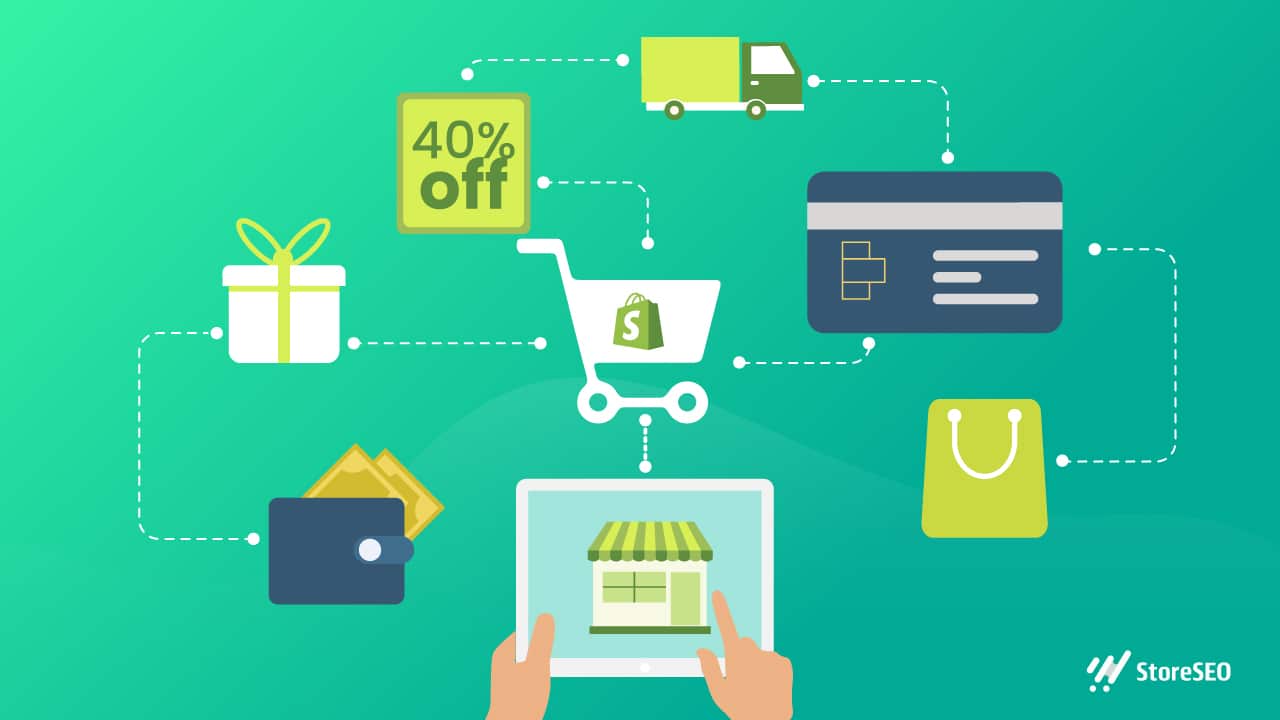
Mapping The Ecommerce Customer Journey For Shopify Store Owners
With Shopify , one of the best eCommerce platforms , business owners and entrepreneurs can easily set up and manage their online stores. Since Shopify offers analytical information on customer behavior, preferences, and interactions with your business, it makes a wonderful platform for mapping the eCommerce customer journey with several tools and features. In this blog, you will get a complete idea of mapping the eCommerce customer journey that will provide a complete guide for Shopify store owners.
According to Statista, as of July 2023, “ Shopify owns a 10.23% eCommerce market share worldwide.
First, Create Customer Awareness
The eCommerce customer journey starts with the awareness phase. Potential clients learn about your brand, products, or services during this period. They might still need to have a definite buying intention, but they are always open to exploring options and finding solutions to their needs.
Learn More: Top 10 Best Shopify eCommerce Themes [2023]
Search engine results: .
It’s essential to show up in pertinent search results to draw eCommerce customer journey potential buyers’ attention to your Shopify business. Your Shopify store needs to be fully SEO-optimized. For this, you can use the StoreSEO app to easily optimize your site’s SEO while setting up SEO for your Shopify store and quickly making it available at the fingertips of your potential customers.
Social Media Activities:
An active social media presence and interesting content can attract customers to your store. To contact potential clients, use targeted advertisements on social media sites like Facebook, Instagram, etc.
Influencers and Word-of-Mouth:
Working with influencers or taking advantage of good word-of-mouth can help you build brand recognition and market your business to their following. Therefore, this tactic can help you in mapping the eCommerce customer journey to the next level.
Content Marketing:
Create valuable and informative content that addresses your target audience’s pain points and interests. It will help you to enhance your eCommerce store SEO optimization and enrich your site value to get potential customers with ease.
Check This: 50+ Latest Shopify Statistics You Need To Know In 2023
Make a plan for your customers’ consideration stage.
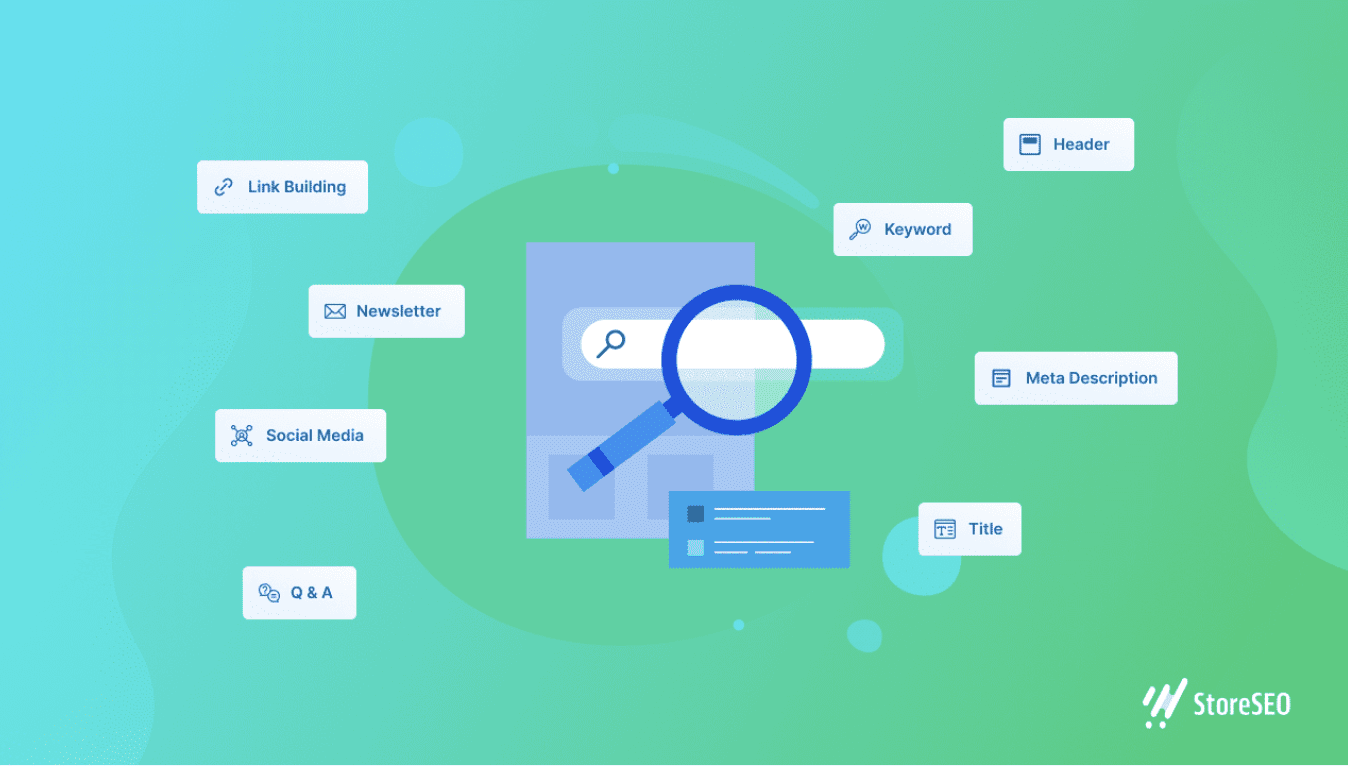
Potential customers have determined their needs and are actively investigating and weighing their possibilities. They are comparing the features, costs, and reviews of your products and services with those of competitors.
Website Product Pages:
Ensure your product pages provide comprehensive information and high-quality images. This is where you can attract your Shopify store customers’ attention at the beginning.
Customer Reviews and Testimonials:
Positive reviews and testimonials can influence your customers’ purchase decisions and enhance your eCommerce customer journey.
Email Marketing:
Keep potential customers engaged with targeted email campaigns showcasing products of interest. In addition, send you personalized product recommendations based on the customer’s browsing and purchasing behavior.
Learn More: Search Intent & SEO : Quick Guide For Your Shopify Store
Product Videos and Demos:
Create engaging videos demonstrating product features and benefits to draw your eCommerce customers’ attention at a glance.
Highlight positive feedback from satisfied customers to build trust and make your business credible.
Learn More: 20 Surprising eCommerce Statistics You Should Know To Grow Your Business
Pay attention to increasing your store conversion rates .
The conversion stage is the moment of truth when potential customers decide to purchase. They have progressed from being interested in your products to taking action and making a transaction.
Clear and Compelling CTAs:
Use prominent and persuasive calls to action to encourage conversions on your website. Compelling calls to action can easily draw customer attention and encourage them to create a conversion.
Streamlined Checkout Process:
Simplify the checkout process to reduce cart abandonment. The way you make your checkout easier, more potential customers will feel encouraged to purchase your products right away. You should also have to Implement strategies to recover abandoned carts and encourage completion of the purchase.
Learn More: Shopify Abandoned Carts : Reasons, Hacks, Tips, and More
Limited-time offers: .
Create a sense of urgency with limited-time discounts or promotions. You can offer your eCommerce customers exclusive offers and make them engage with your business to boost sales.
Free Shipping:
Offer free or discounted shipping to incentivize purchases often. If you do so, customers will look forward to that offer and get connected. This will escalate your eCommerce customer journey without hassles.
Evaluate Your Customers’ Post-Purchase Experience
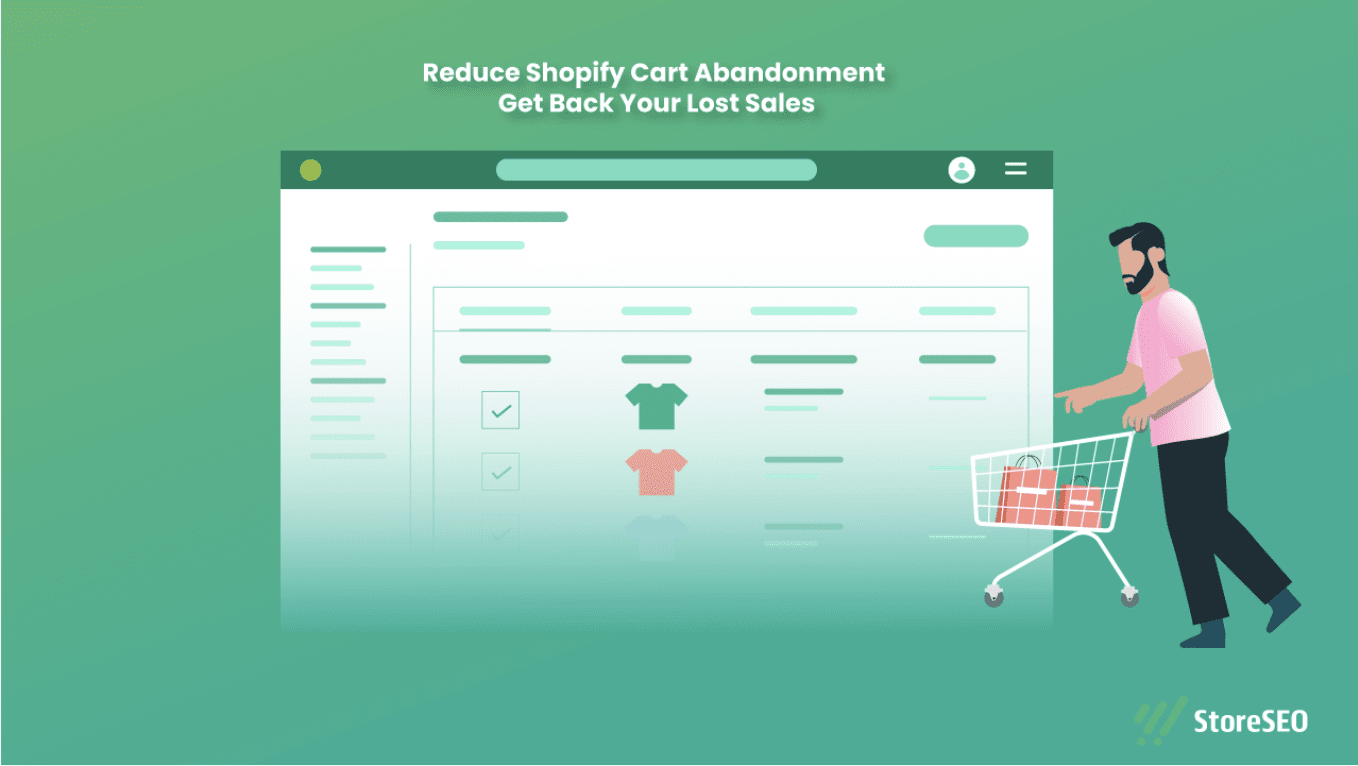
After making a purchase, customers enter the post-purchase stage. This phase focuses on ensuring customer satisfaction, encouraging repeat purchases, and building brand loyalty.
Order Confirmation and Thank You Emails:
Send personalized order confirmations and thank you emails to express gratitude and set expectations. This will create satisfaction for your customers through this kind of constant gratitude email.
Upselling and Cross-selling Techniques:
Suggest complementary products to increase the average order value. Your upselling and cross-selling techniques are geared towards enhancing the shopping experience for our customers while maximizing value for them.
Customer Support and Follow-ups:
Provide excellent customer support and follow-up to address any issues or concerns. Exceptional customer support that goes beyond just resolving issues by managing a dedicated team can strive to actively engage with customers, empathize with their concerns, and promptly offer effective solutions, ensuring their satisfaction and trust in our brand.
Personalized Post-Purchase
Thank you emails can easily add a personal touch to your emails by using the customer’s name and mentioning the purchased products. This can make your customers feel valuable and special.
Incentivize Customers To Enrich Your Brand Advocacy
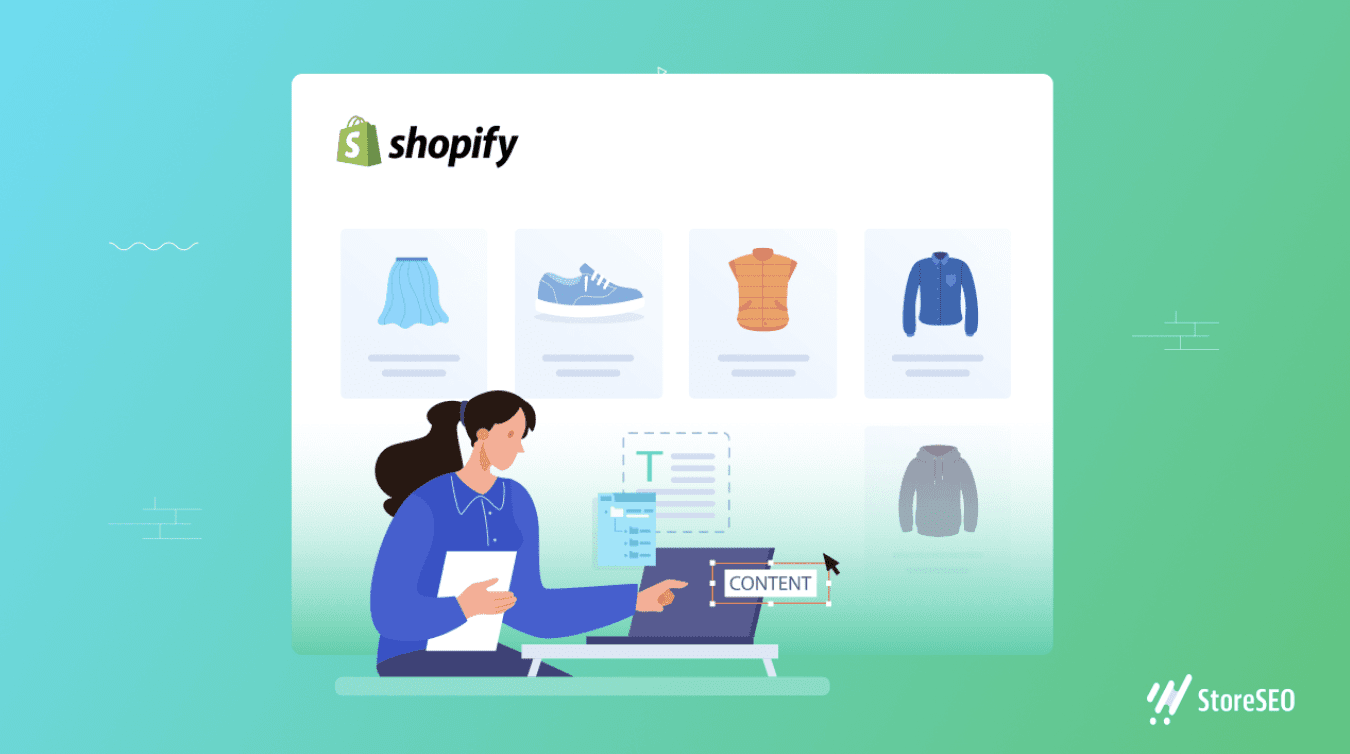
At the advocacy stage, satisfied customers become brand advocates. They share positive experiences with their network, leading to organic growth and new customer acquisition.
Referral Programs and Incentives:
Create a referral program that rewards customers for referring others to your store. When customers refer others to our store, they not only share the joy of discovering your products/services but also receive exciting incentives and exclusive rewards as a token of your gratitude.
User-Generated Content Campaigns:
Encourage customers to share their experiences through user-generated content. Fostering a community of passionate users, If customers share their valuable moments with you through your content campaigns can help you celebrate the voices that make our brand truly special.
Customer Spotlight:
Highlight loyal customers on your website or social media to showcase their loyalty and support. Their unwavering support and trust in your brand can provide a huge motivation to continually strive for excellence and deliver the best products/services in return.
Social Media Contests:
Organize contests that encourage customers to share their experiences and tag your brand for a chance to win prizes. This could help you to know about the enthusiastic customers and you can plan to reward them in different ways to improve your brand quality.
Track & Measure Your Customer Journey With Tools and Analytics
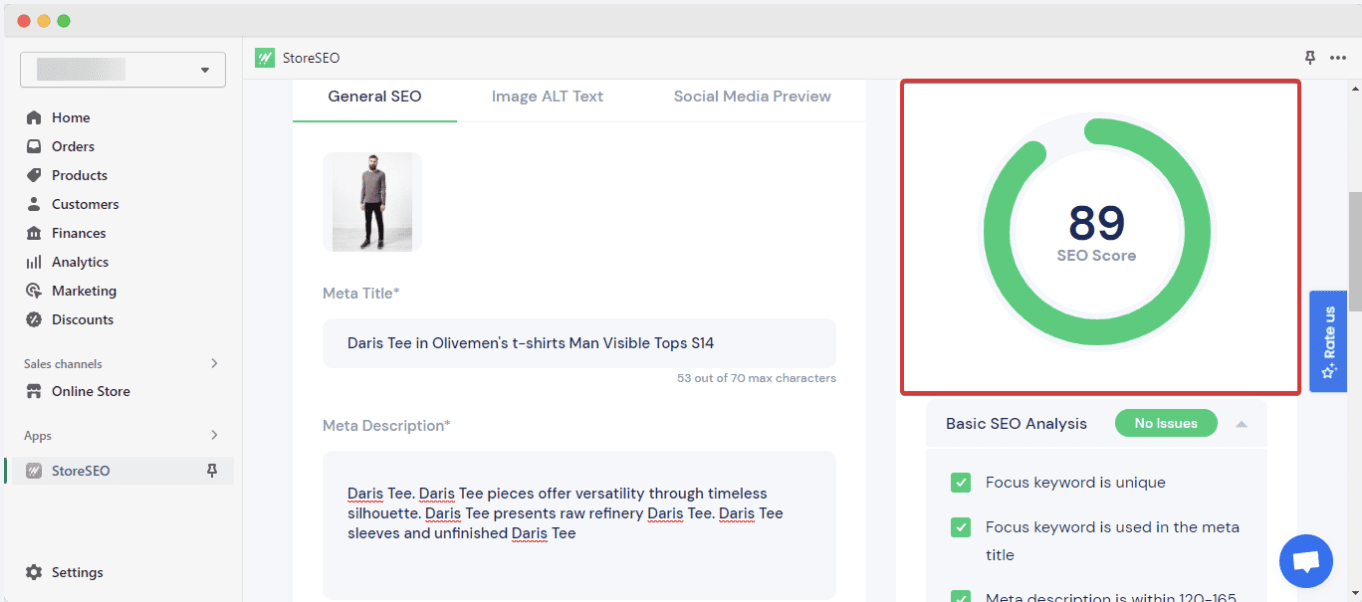
Tracking and analyzing the customer journey is essential for making data-driven decisions and optimizing your Shopify store’s performance.
Google Analytics:
Gain insights into website traffic, user behavior, and conversion rates. If you just integrate your Shopify store to Google Analytics you can know your overall site performance without any hassles.
Shopify Analytics Dashboard:
Utilize Shopify’s built-in analytics to monitor store performance and sales. Also, you can monitor your store customer experience as an owner through Shopify’s in-built analytics and plan to amplify your site performance.
Customer Journey Mapping Tools:
Other than that, various customer journey mapping tools are available to identify pain points and areas of improvement. You can choose any and start tracking and monitoring your site performance in advance.
Advanced SEO Results Using SEO App:
In-built advanced analytics of your Shopify SEO app can help you improve your store SEO without any hassles. As previously mentioned about StoreSEO , you can use this solution and escalate your eCommerce customer journey right away.
Learn More: How To Get 100 SEO Score Of Your Shopify Store With StoreSEO In 2023?
Focus on case studies & add credibility .
Explore case studies of Shopify store owners who effectively mapped the customer journey and achieved notable results. Also, extract valuable lessons and actionable insights from the success stories to apply to your own Shopify store.
Encouragement for Shopify Store Owners to Implement These Strategies
To interact with customers at every point of their buying journey, understanding your eCommerce customer journey is a crucial component of operating a successful Shopify store.
Increased customer happiness, better conversion rates, and enduring brand loyalty can all be achieved by putting customer journey mapping ideas into practice. Make your clients’ journeys easy and enjoyable from beginning to end by embracing their journeys.
The mapping of the eCommerce customer journey for your Shopify site is, thus, an ongoing learning and optimization exercise. You can establish a successful online business and develop a devoted customer base by attending to the particular demands and preferences of your customers at each level. Good luck with your eCommerce venture and happy mapping!
Enjoyed this post? Make sure to subscribe to our blog for more fun tutorials or join our friendly Facebook Community .
⭐ Read More Exciting Blogs!
⚡ top 10 ecommerce conferences you should attend in 2023, ⚡ business name generator : how to find name for your ecommerce business, ⚡ rise of voice search for seo : how to use it for shopify store [2023], download our ultimate shopify seo guide for 2023.
Share This Story
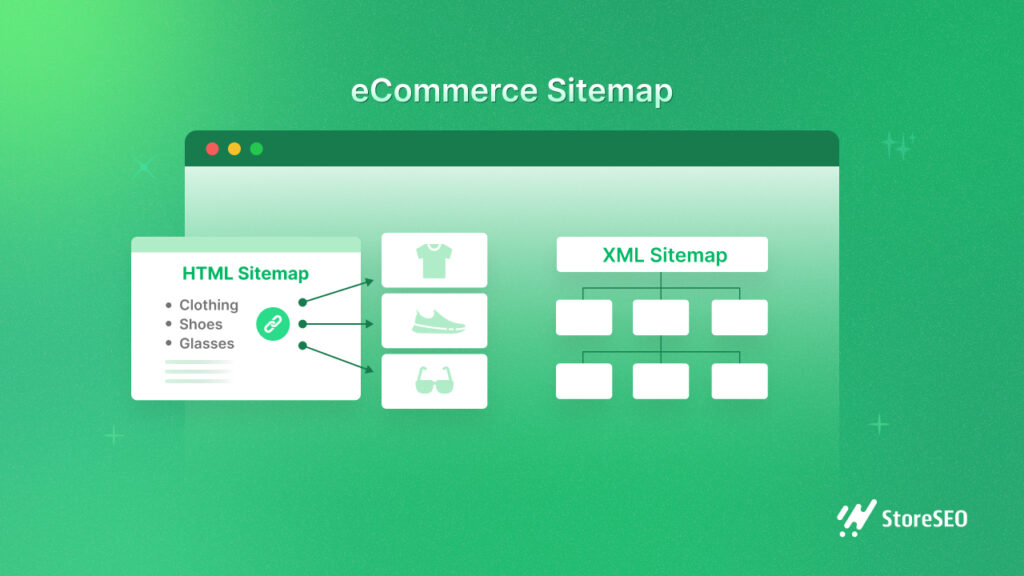
What Is eCommerce Sitemap And How Does It Help Shopify SEO?
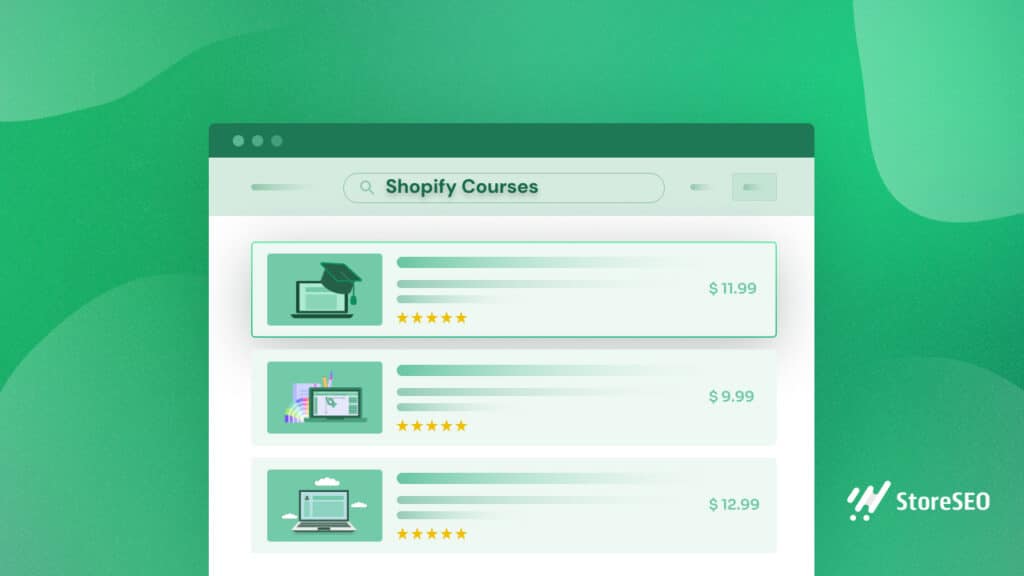
10+ Shopify Courses You Can Take In 2024

Blog SEO for Shopify: Should You Do It in 2024? [A Complete Guide]

Tutorial to Shopify Image Compression [Steps and Action Items]
Free · free · free, grab your shopify seo guide for 2024, join our amazing newsletter.
Subscribe For The Latest Updates
No charge. Unsubscribe anytime.
The advanced SEO solution for growing your business
- Privacy Policy
- Refund Policy
- Compare to other SEO Apps.
- Shopify SEO Guide
Copyright © 2024 | A
Product from

Hosted with

- Triggered emails
- Product recommendations
- Onsite popovers
- Social proof
- Dynamic content
- Behavioral & social targeting
- Geotargeting
- Optimization
- Customer data management
- Cross-channel personalization
- B2B eCommerce
- Recruitment
- Case studies
- Services & support
Getting started
- Integrations
- Become a partner
- Partner portal
- Learning paths
- All resources
Customer journey mapping for eCommerce stores
October 14th 2020

By Huriyyah Dhanse
Vice president, customer.

If you’ve been reading our CRO blog series from the beginning, you’ve probably already implemented our 5 eCommerce conversion rate optimization tactics and you’re using our 5 A/B tests to take your conversion rate optimization efforts to the next level.
Now, we’re going to shine the spotlight on the most important component of any good CRO strategy – the customer. In this installment of our CRO blog series, we take a look at customer journey mapping for eCommerce stores, explaining what it is and why it’s important.
There’s lots to discuss, so let’s get cracking.
The age of customer experience
It goes without saying that conversion rate optimization is so much more than just optimizing the checkout page. But the importance of optimizing the entire customer experience cannot be overstated. Research shows that 80% of customers now consider their experience with a company to be as important as its product.
What’s more, 60% of customers in the UK expect the customer experience to be connected. And with the average consumer using 10 channels to communicate with businesses, customer journeys are becoming increasingly complex.
So, with several touchpoints increasing the danger of a disjointed customer journey, how can eCommerce businesses ensure they deliver the tailored, seamless experience their shoppers want?
That’s where customer journey mapping comes in.
What is customer journey mapping?
Customer journey mapping is the process of identifying the interactions that customers experience throughout their relationship with your online store, plotting them out into a logical order and optimizing them continuously.
Why is making an eCommerce customer journey map important?
The customer is at the heart of every successful conversion rate optimization strategy. The word strategy is key here, as conversion rate optimization isn’t about guessing what the customer wants and hoping your assumption is right. Through the process of making your eCommerce customer journey map, businesses can get strategic about understanding customer expectations, identifying pain points and optimizing the experience of your customers for maximum conversions.
Making an eCommerce customer journey map helps businesses look beyond customer experience as a summary of all interactions and touchpoints and instead consider how to display empathy towards customers at all the customer journey stages. Interbrand talks about the empathy gap that exists between brands and their customers, where brands get so caught up with what they want to say, they look past what people need to hear and how they need to hear it. According to Interbrand, this empathy gap is widening, making customer journey mapping a key opportunity for retailers and brands to distinguish themselves from the competition.
For anyone in need of hard evidence, here are some compelling stats on companies that actively manage the customer journey vs those who don’t:
- They get 54% greater return on marketing investment
- Their average sales cycles are 18 times faster
- They get 56% more cross- and up-sell revenue from their existing customers
(Source: Aberdeen Group )
Put simply, businesses that focus on their customer’s journey and customer’s experience outperform their peers.
Now that you know what customer journey mapping is and why it’s important for conversion rate optimization, it’s time to start mapping out your own customer journey. Keep it simple to start with, plotting key interactions and touchpoints along the journey stages. Once you have the bare bones of your customer journey map, you’re ready to create variations for each of your buyer personas.
Here is an example of a basic eCommerce customer journey map for retail:
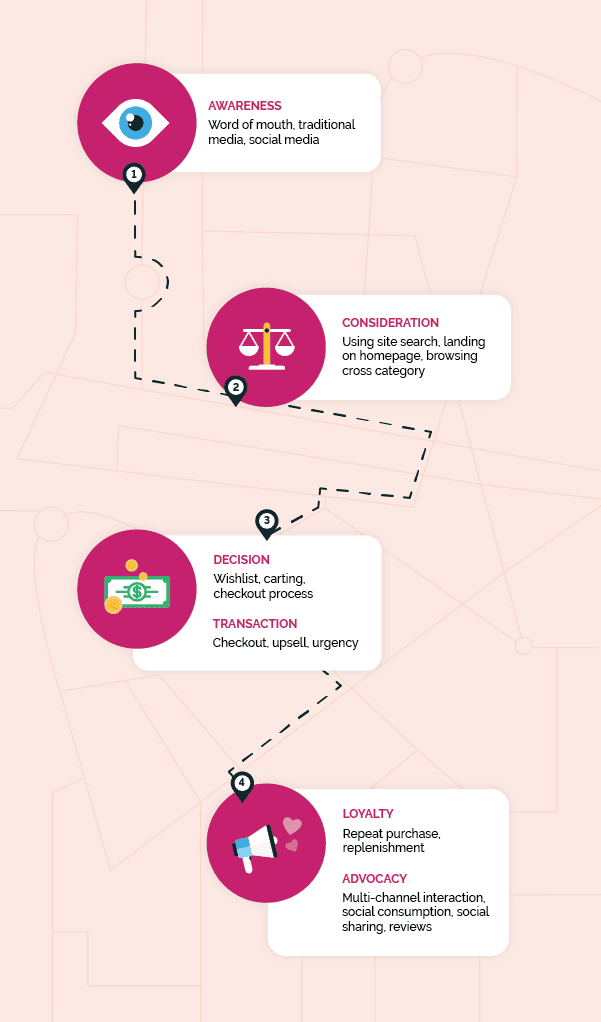
Let’s look at this example in more detail.
Consideration
It’s important to empathize with your customers’ goals at each stage of the journey. Once potential customers have landed on your homepage, they enter the consideration stage and their goal is to find the best solution or product for them. To do this, it’s likely that they will use the navigation bar and site search function to browse across different product categories.
Decision & Transaction
At this stage of the customer journey, the shopper’s goal is to be inspired, find products easily and order effortlessly. They might make use of wishlist functionality to save items that have caught their eye. And in order to make a purchase, they’ll need to follow the checkout process.
Loyalty & Advocacy
Once a customer has made their purchase, their goal will be to repeat the (hopefully) good customer experience and become one of your loyal customers. They might also want to show their affiliation with the brand by sharing user generated content or taking part in a referral program. Additionally, they might be keen to give product feedback in the form of a review or rating. The touchpoints here will be post-purchase emails , such as review requests and replenishment notifications, as well as social media channels.
eCommerce customer journey maps a vital part of any good eCommerce conversion rate optimization strategy, helping businesses understand their customers, identify pain points and deliver a customer experience that boosts sales. If you’re not already mapping your customer journey or haven’t revisited your customer journey map in a while, use our example above to get started.
Keep your eyes peeled for the next installment of our CRO blog series, where we’ll be sharing our tips to help you reduce friction in the journey.
In the meantime, download The Ultimate Ecommerce CRO Lookbook and learn how to optimize your customer journey with personalization examples from 21 leading brands.
![customer journey mapping ecommerce Download The Ultimate Ecommerce CRO Lookbook [new visitors edition]](https://no-cache.hubspot.com/cta/default/483487/fae6a964-e7c6-4987-82c1-127ae37699eb.png)
As Vice President, Customer at Fresh Relevance, Huriyyah oversees the company’s Customer Department and works with top eCommerce and travel brands to help them meet their cross-channel personalization goals.
Keep learning with our popular content


IMAGES
VIDEO
COMMENTS
Ecommerce customer journey mapping is essential to understanding your target audience and improving the customer experience. Focusing on providing the best customer experience will help retain customers and drive more leads and sales. Creating the Best Ecommerce Customer Journey Possible.
Customer journey maps help you determine which team is responsible for key actions and support at each step of the way. 4. Make improvements and convert more visitors into customers. With a clear overview of the customer's journey, your team can quickly home in on the touchpoints where something's going wrong.
cx/omni - cx/omni is a fully-fledged customer experience management solution that includes customer journey mapping tools. The platform has a broad range of features for gathering feedback, generating insights from analytics, and monitoring KPIs and customer relations metrics. Pricing starts at $29/month per user.
Web analytics is an excellent source of data. And by the way, you can combine that data with journey maps using our customer journey mapping tool. It supports the integration with Mixpanel and Google Analytics, which will let you display real-time analytics data on your e-commerce customer journey maps in the form of a marketing funnel.
An ecommerce customer journey map is a diagram that details how customers engage with your company across various mediums including online, retail, and contact with your customer support team. They tell you where users are coming from, how many days or visits it takes to move from one stage to another, what the goal of the user is in each stage ...
An ecommerce customer journey map is a visualization of all the potential experiences a customer may have with your organization. Such a map also highlights the sequences those experiences are most likely to occur in. It can allow you as a business to identify strengths and weaknesses, and thus make improvements where needed.
5 stages of the eCommerce customer journey. Your customers' overall journey can be broken down into five key stages. 01. Awareness. Your customer stumbles across your brand for the first time. Be it through an ad, social media, word of mouth, or SEO-they are now aware of your products.
Step 1: Define customer personas. Step 2: Analyze relevant data. Step 3: Identify key touch-points. Step 4: Create an e-commerce customer journey map. Step 5: Using an e-commerce customer journey map. Conclusion. Let's get started.
Find ways to mitigate potential confusion or frustration, with the goal of making every customer's time with you enjoyable. 3. Create Actionable Touchpoints. Now that you've built out stages in your journey map, establish what actions you expect your customers to take. Pay special attention to how customers will interact with your content.
Here's how you can create an eCommerce customer journey map for your business: Step 1: Define Your Buyer Persona. Before you can map out the customer journey, you need to understand who your target audience is. This is where creating a buyer persona comes in. A buyer persona is a fictional representation of your ideal customer, including ...
How to Map a Customer Journey in eCommerce in 8 Steps. The process of crafting a customer journey map can vary in duration, from swift and concise to more comprehensive, contingent upon factors like the extent of stakeholder involvement, the depth of data collection and analysis, and the multitude of touchpoints within your business.
A customer journey map is a diagram that serves as a visualization of the steps customers take (often aligning with the stages outlined above) as they engage with your brand to achieve a goal they ...
March 4, 2021. Customer journey mapping in e-commerce is a diagram that illustrates the steps your customers go through in engaging with your online business. It starts when they first become aware of your products, to completing a purchase. It can extend to after-purchase care. Buying and selling products on the internet is as popular as ever.
Start small and prioritize the most critical customer personas for your business. The real key, however, is using your existing data to map the ecommerce customer journey based on psychological principles to drive more sales. 1. Monitor how customers interact with your ecommerce business.
Take the extra time for e-commerce customer journey mapping to build a highly detailed customer profile. For example, an ecommerce store selling cosmetics might have the following ideal customer: Jessica is a 30-year-old female professional in New York City and is passionate about fashion and beauty. She values quality and always looks for new ...
An ecommerce customer journey map shows the path of buyers leading to an online purchase. Analyzing those journeys helps merchants understand how shoppers find the site, what they do on it, and what they want to achieve at each step. Imagine a visitor to an online store looking for a new pair of shoes. The journey map would show everything he ...
An eCommerce customer journey map helps answer all these questions. An essential practice for online retailers, eCommerce customer journey mapping helps you track the steps your customers follow when finding your website or app, making a purchase, and returning later for additional purchases. Journey maps help identify the impediments across ...
Customer journey mapping is a visual process of how your customers are taking action on your eCommerce website. It's a way to identify your customers' processes or actions when shopping in your online store. This will allow you to create an engaging customer journey, leading them to take your desired action.
A customer journey map for ecommerce is a strategic tool that businesses use to visualize and understand the path customers take from initial contact to purchase. It offers valuable insights into customer behavior, enabling companies to better meet their needs and improve the overall shopping experience. By mapping out the customer journey ...
An e-commerce customer journey map captures the customer's emotions, motivations, and behaviors at each stage of their interaction with the brand. It helps businesses understand the customer's needs, pain points, and expectations, allowing them to tailor their marketing strategies and touchpoints to deliver a seamless and personalized experience.
In this blog, you will get a complete idea of mapping the eCommerce customer journey that will provide a complete guide for Shopify store owners. According to Statista, as of July 2023, "Shopify owns a 10.23% eCommerce market share worldwide. First, Create Customer Awareness. The eCommerce customer journey starts with the awareness phase.
eCommerce customer journey maps a vital part of any good eCommerce conversion rate optimization strategy, helping businesses understand their customers, identify pain points and deliver a customer experience that boosts sales. If you're not already mapping your customer journey or haven't revisited your customer journey map in a while, use ...